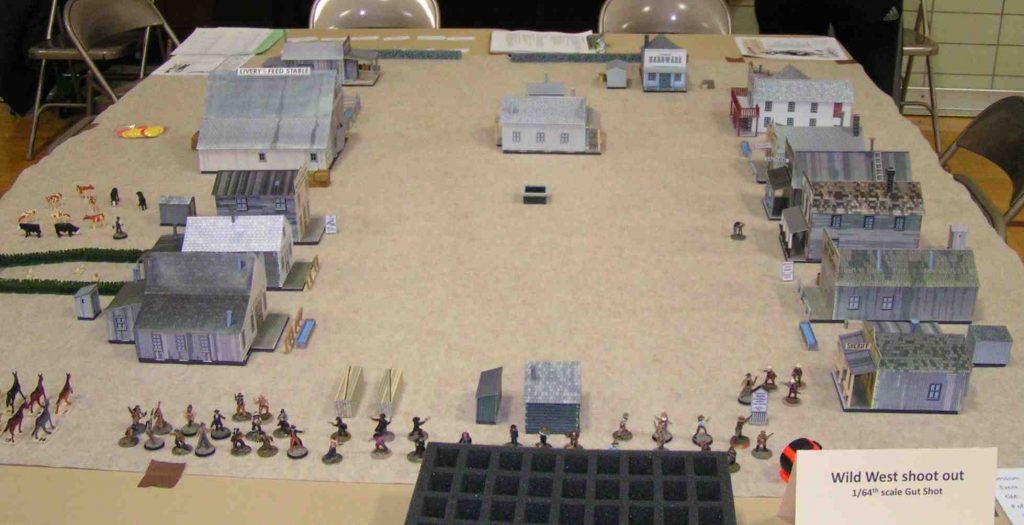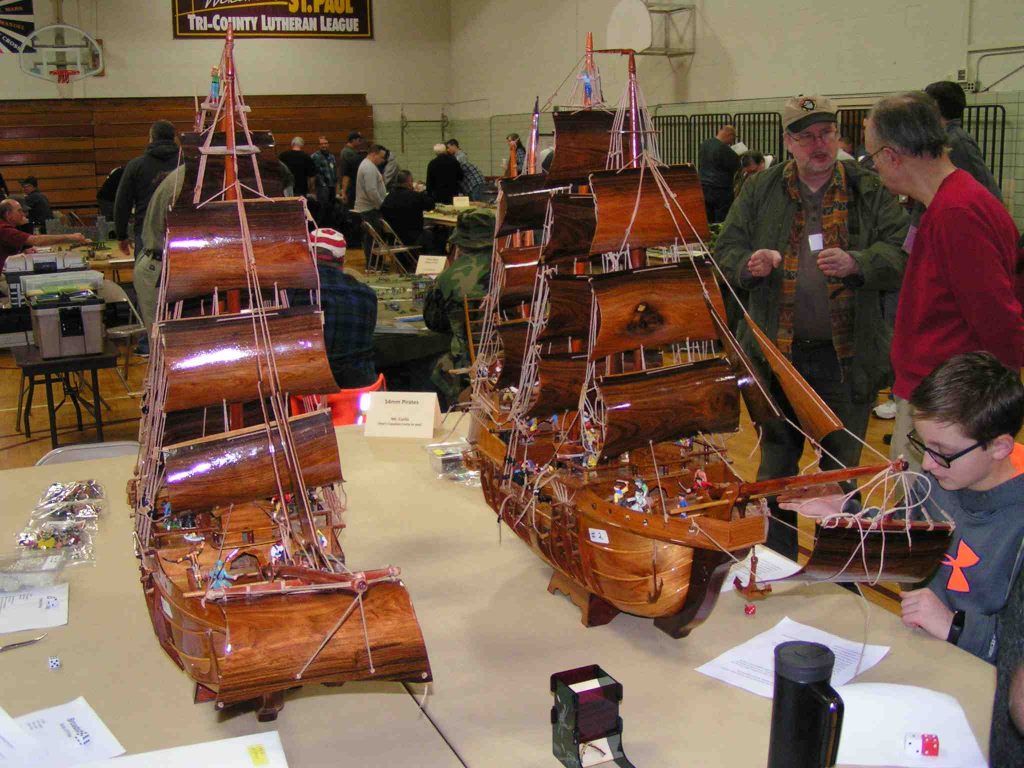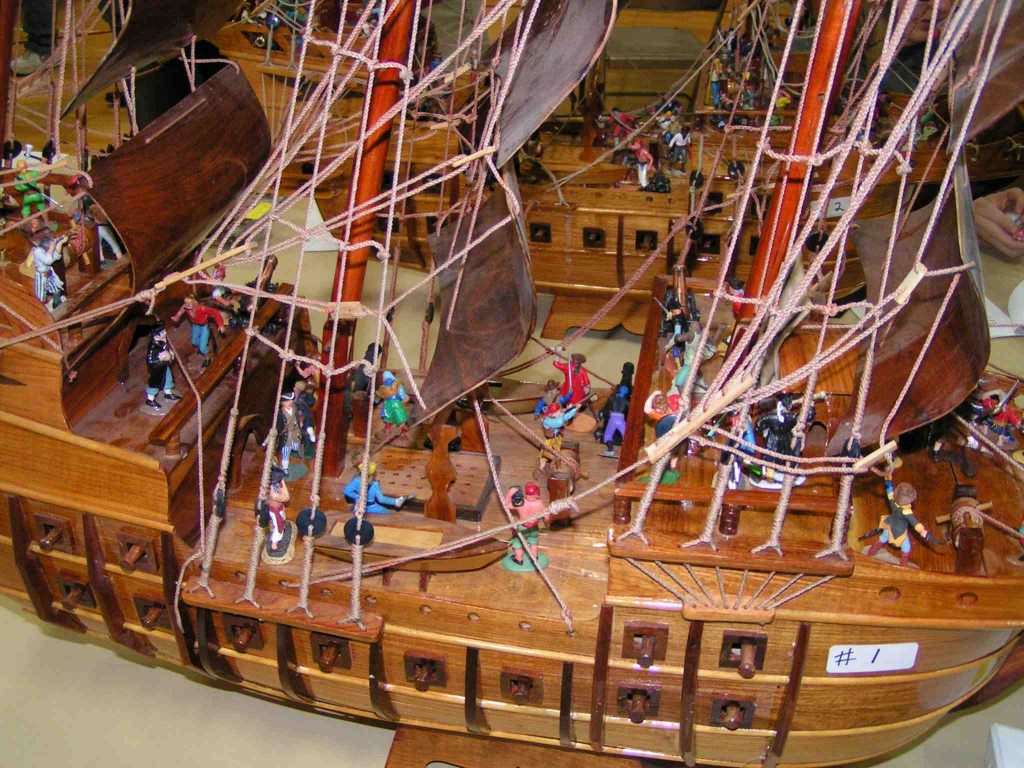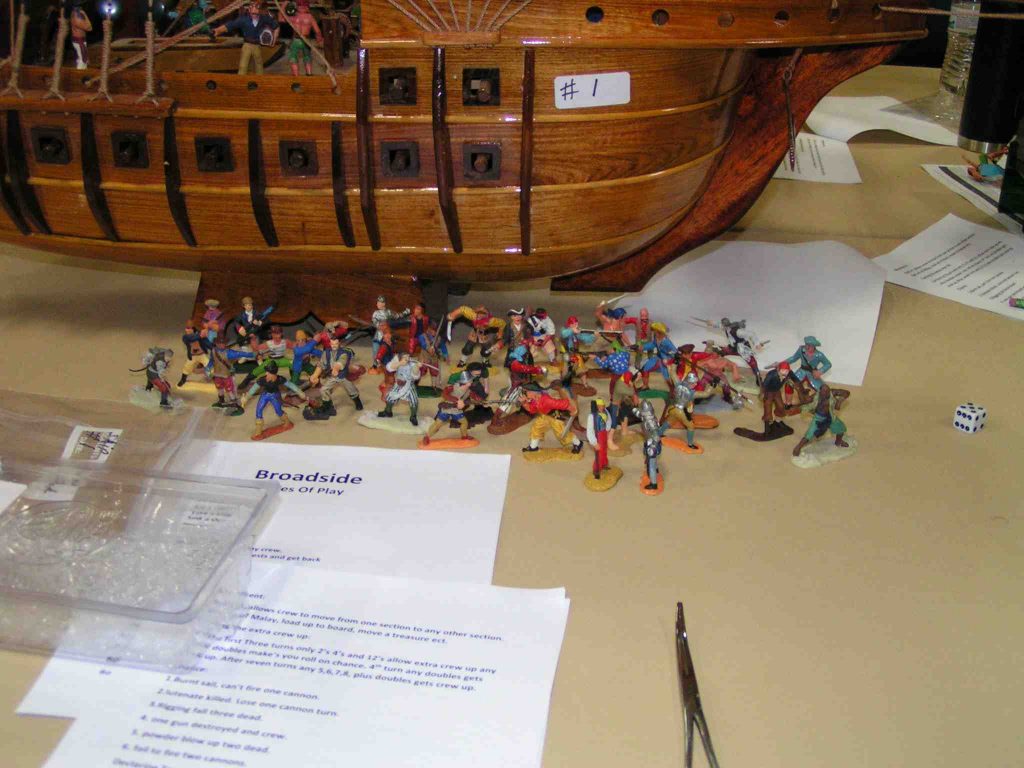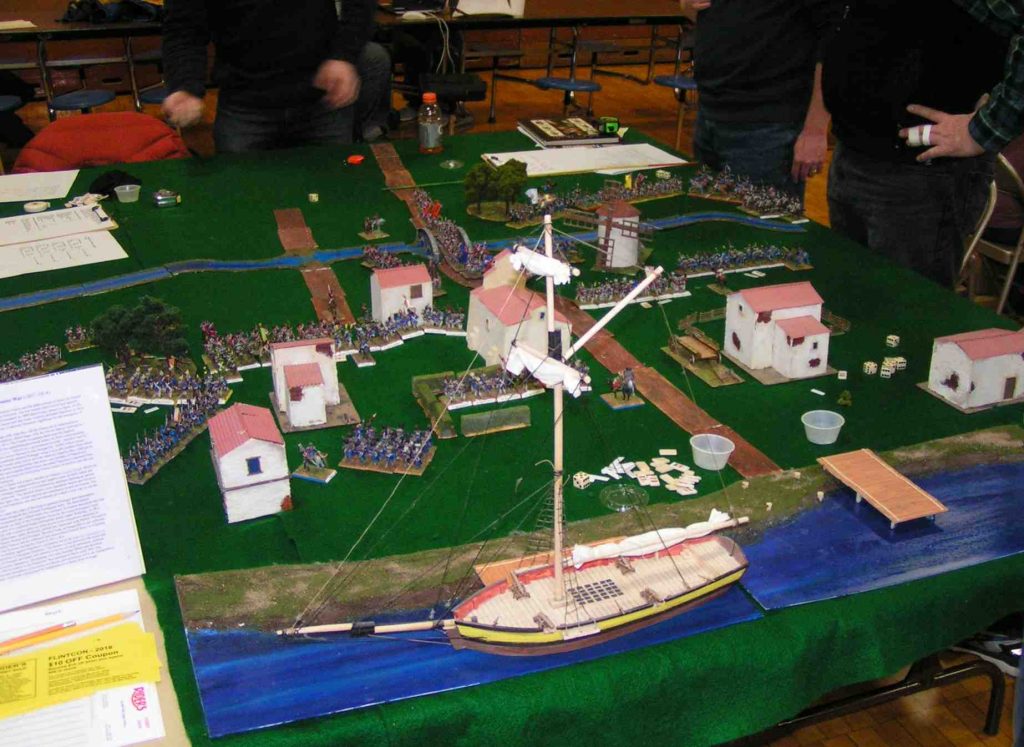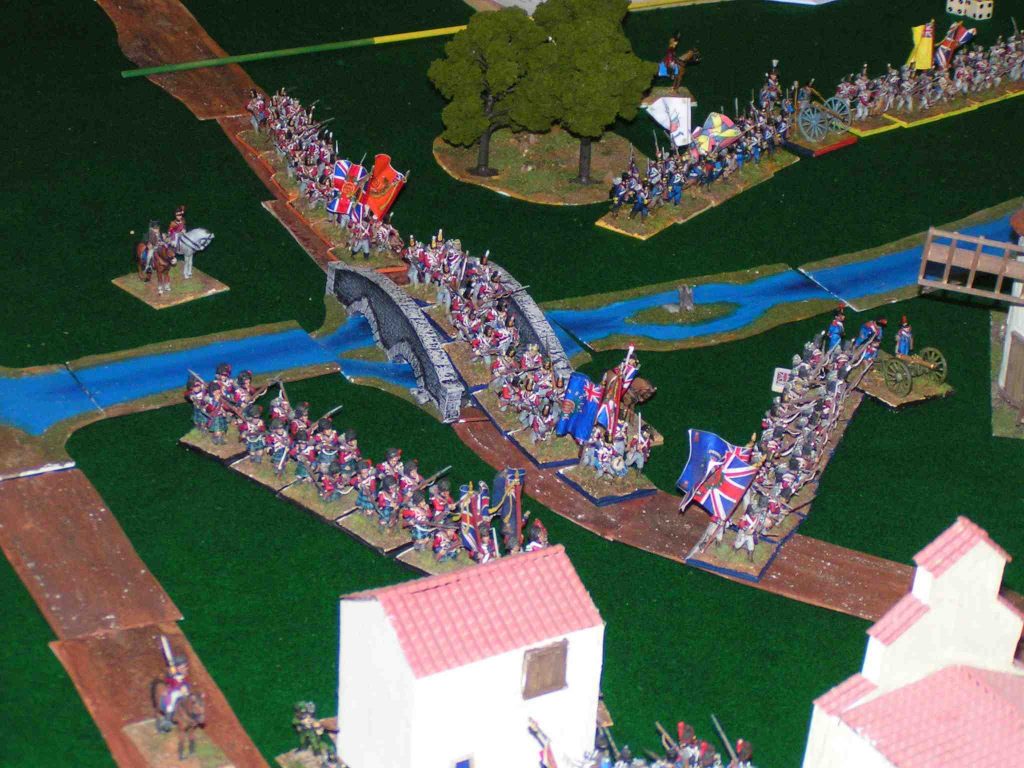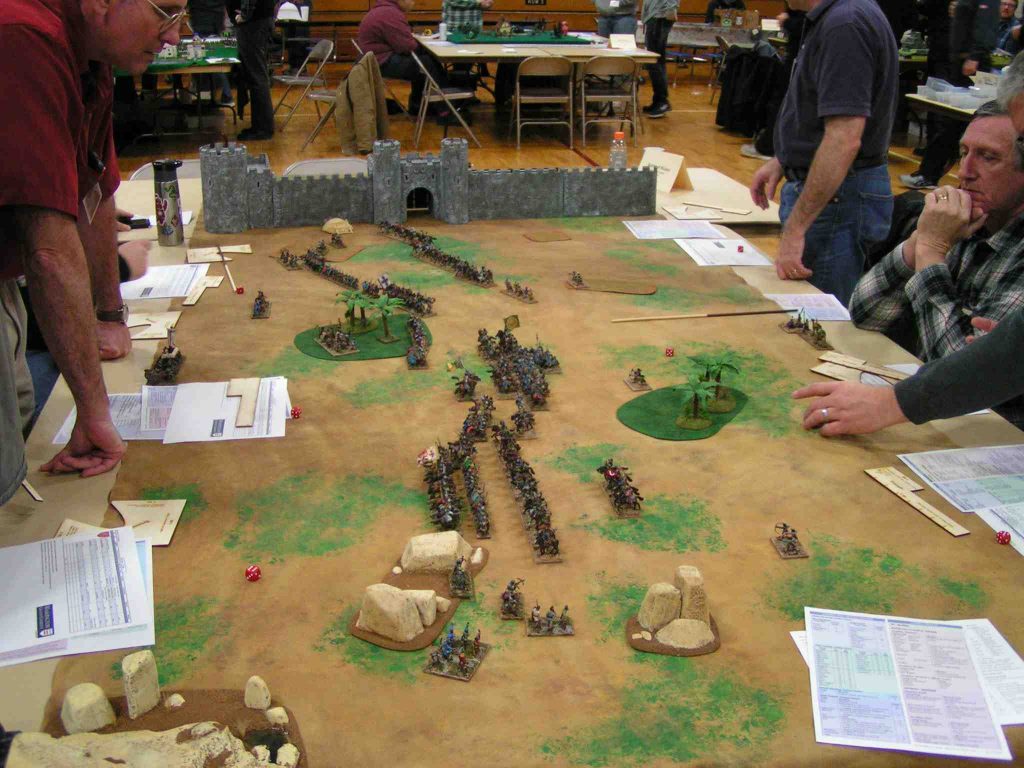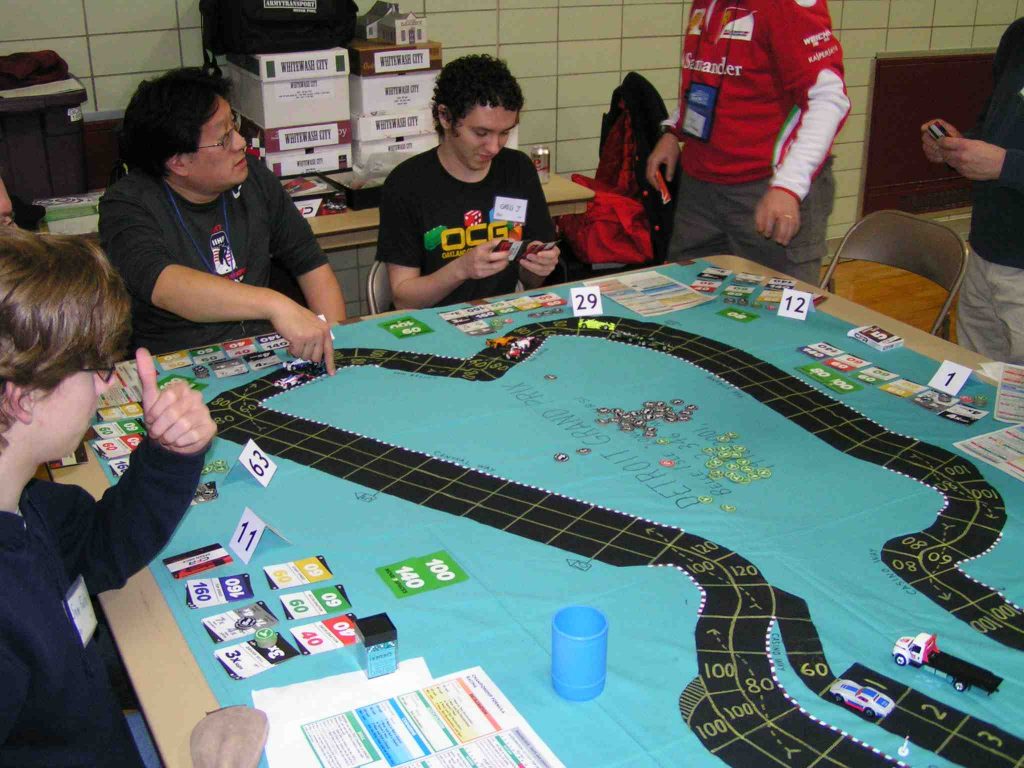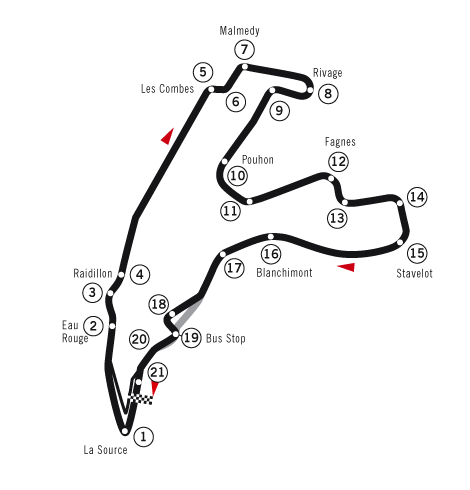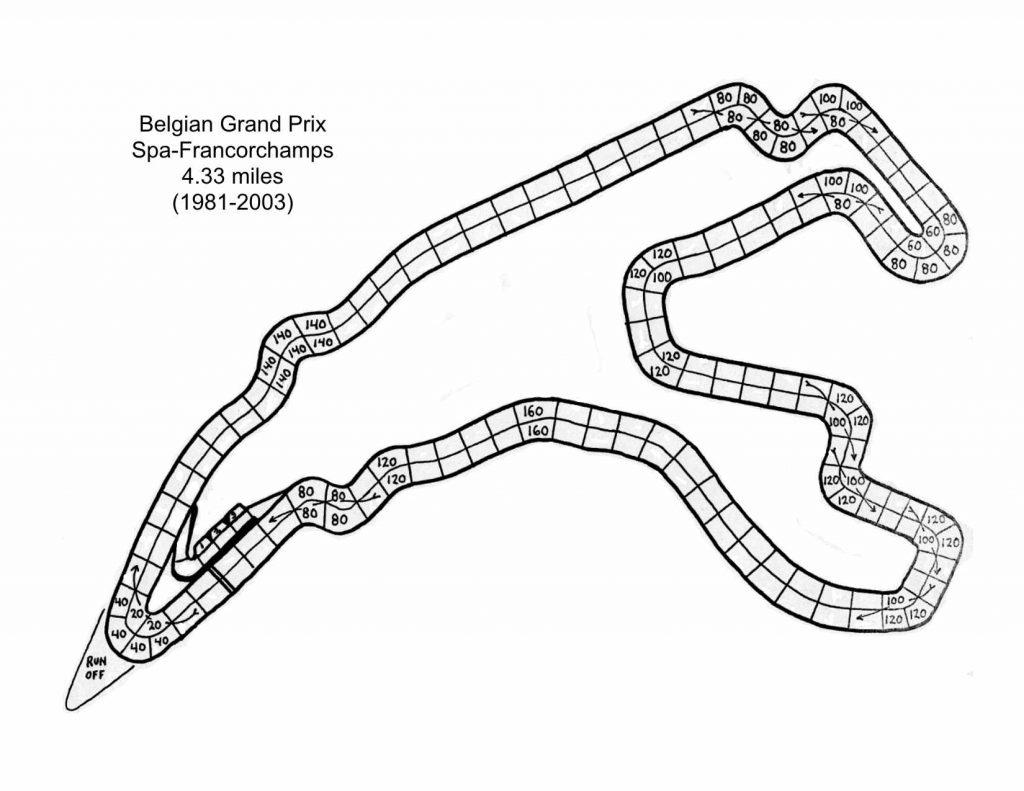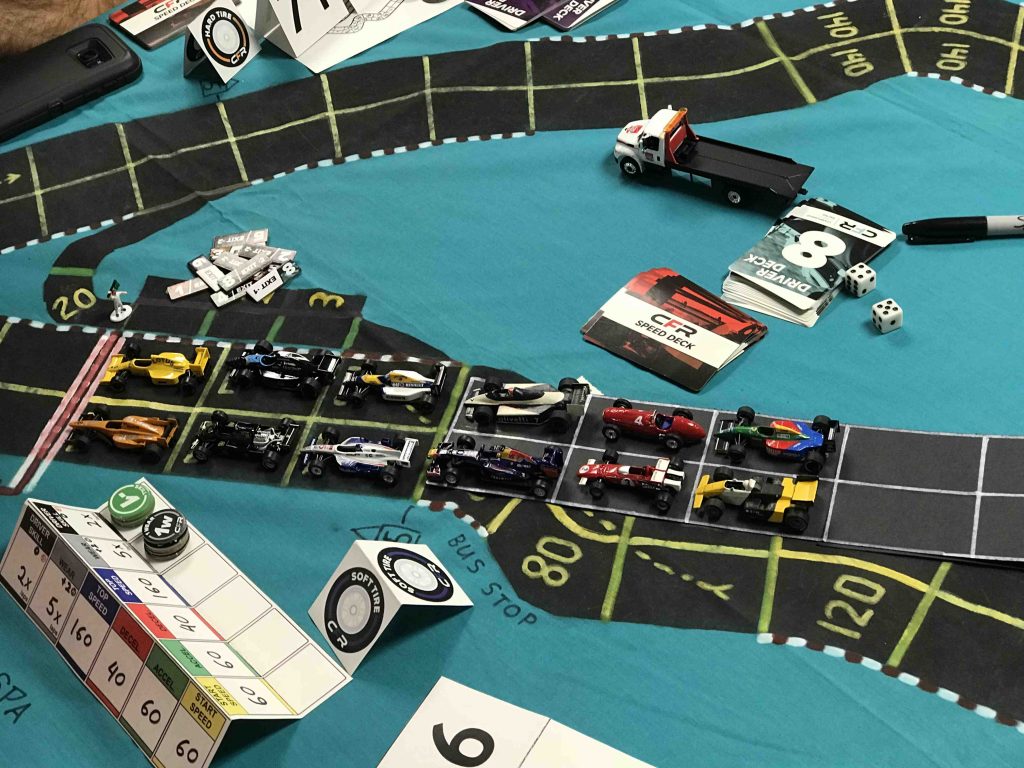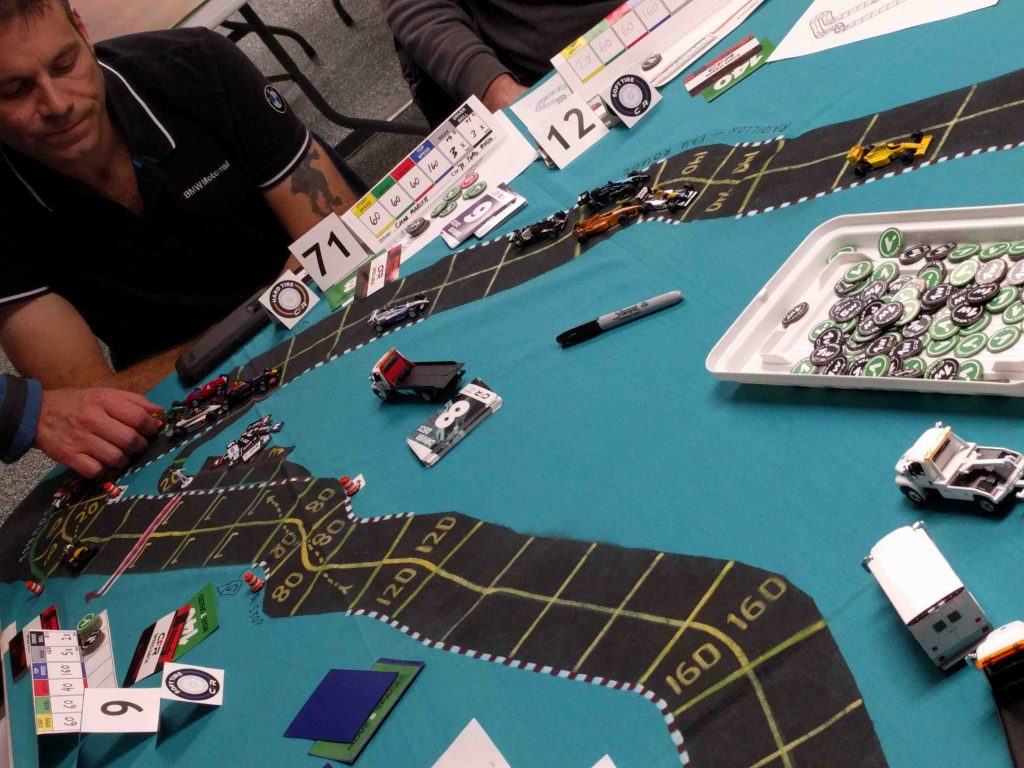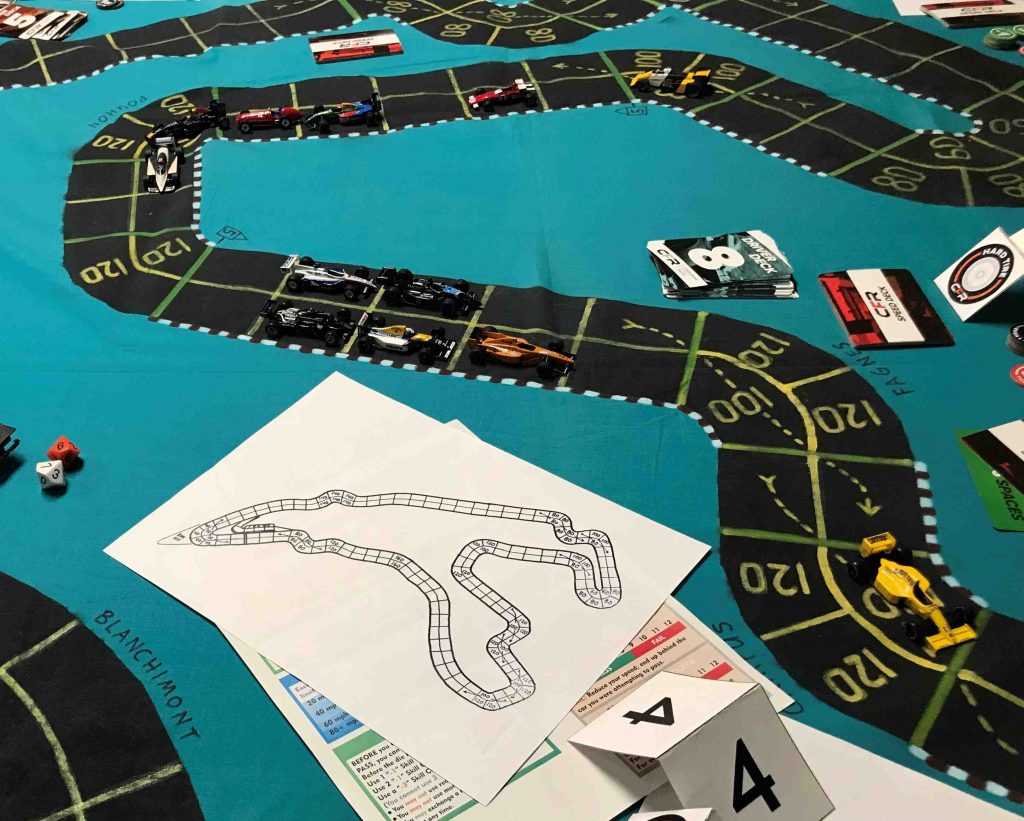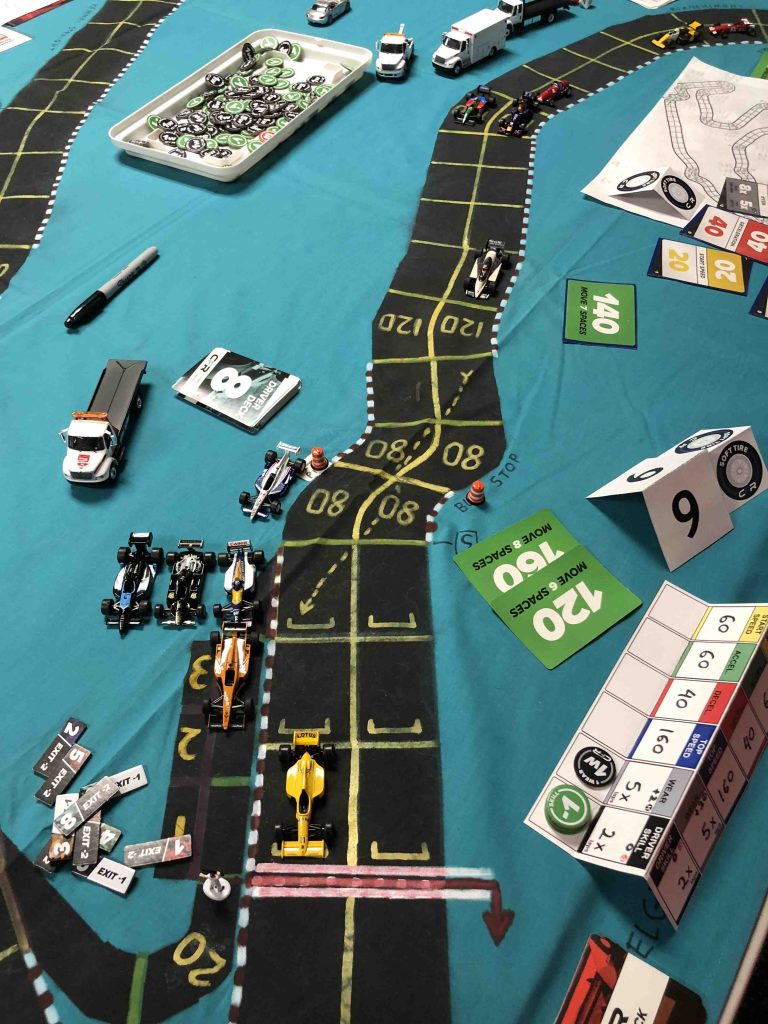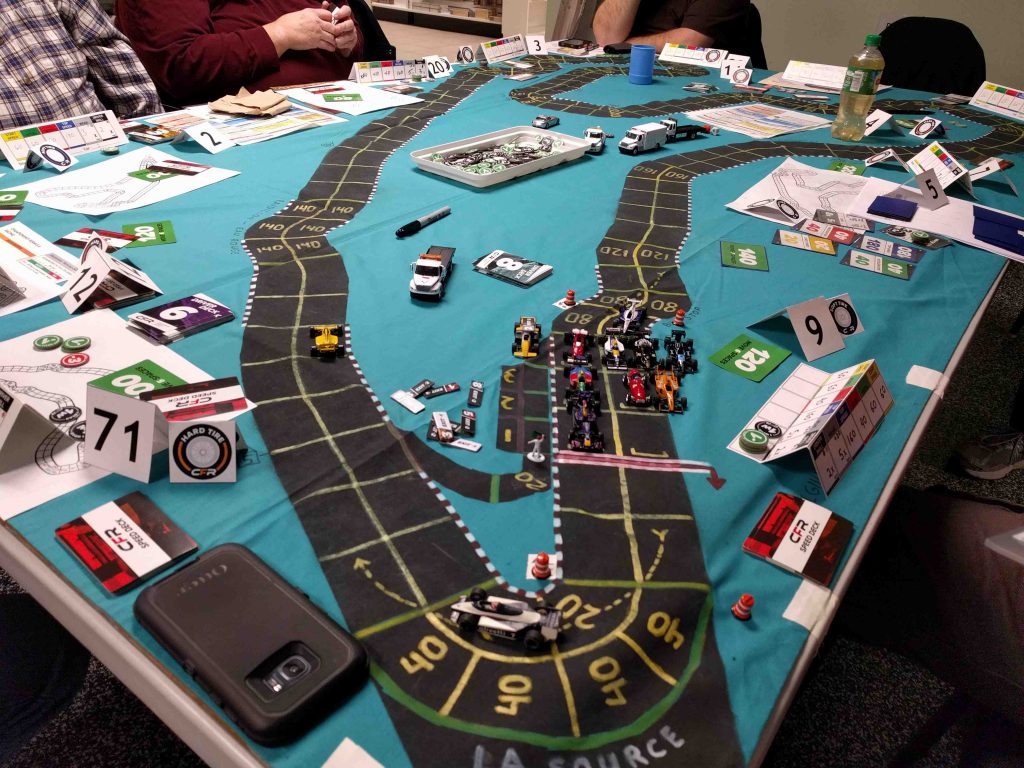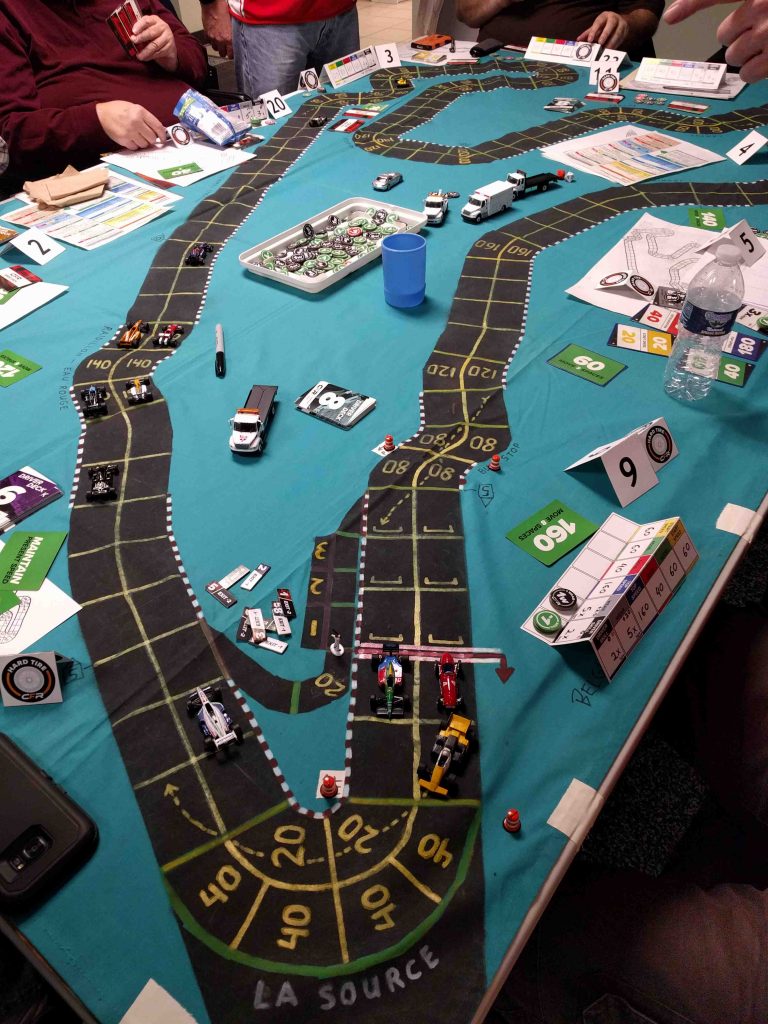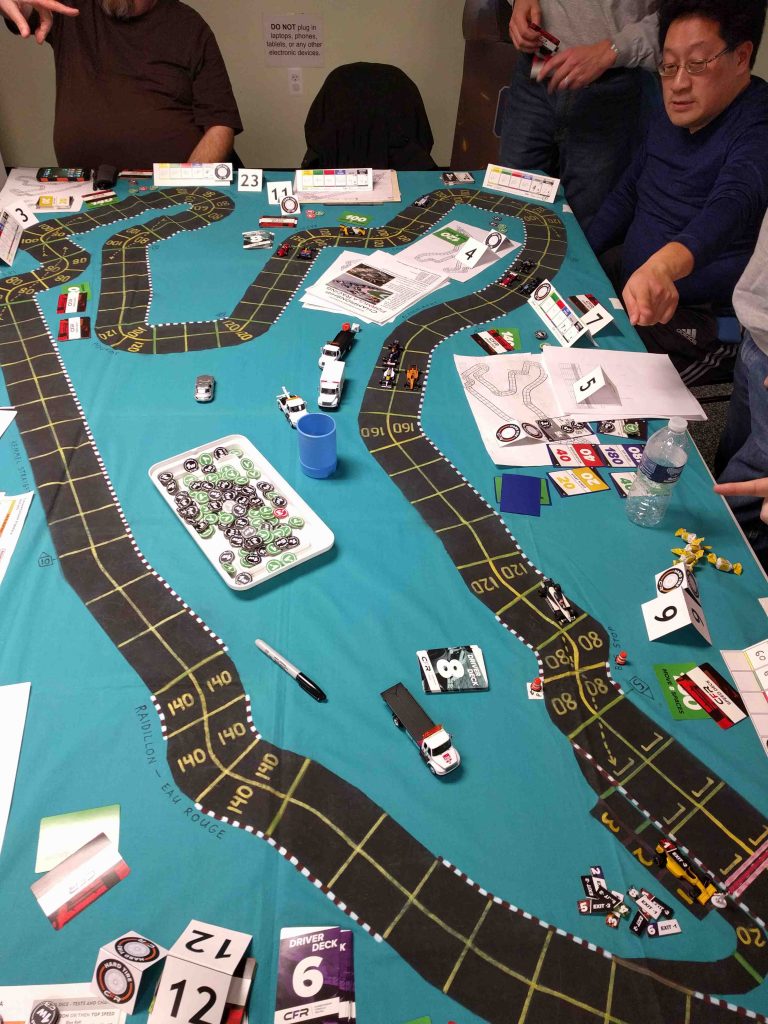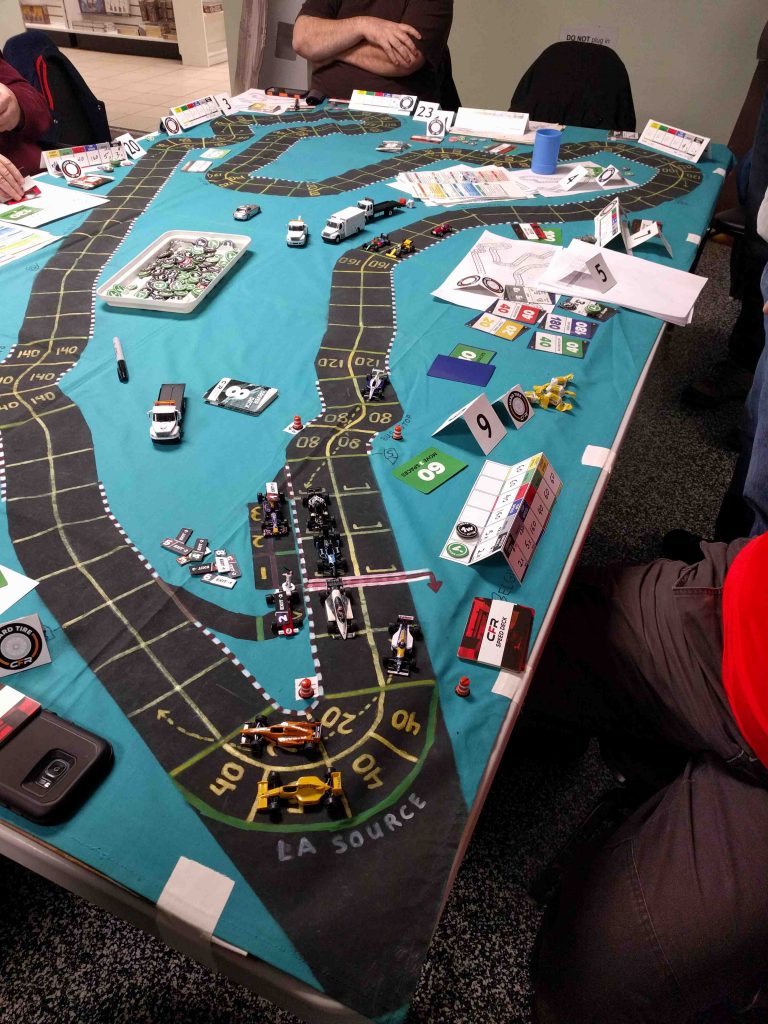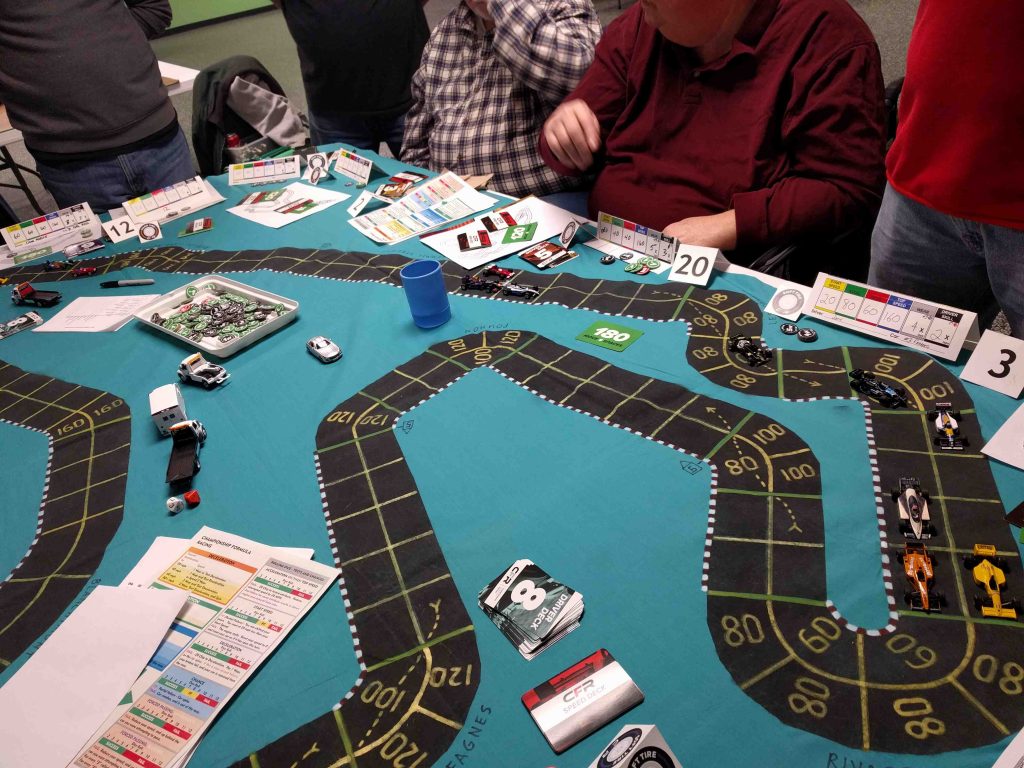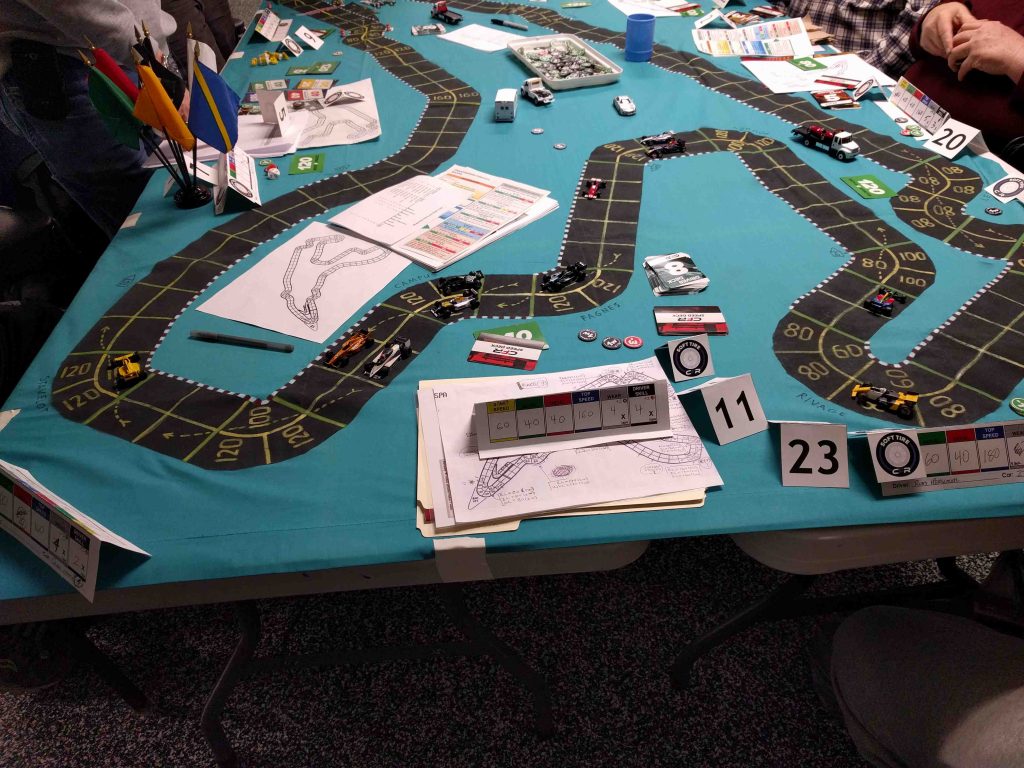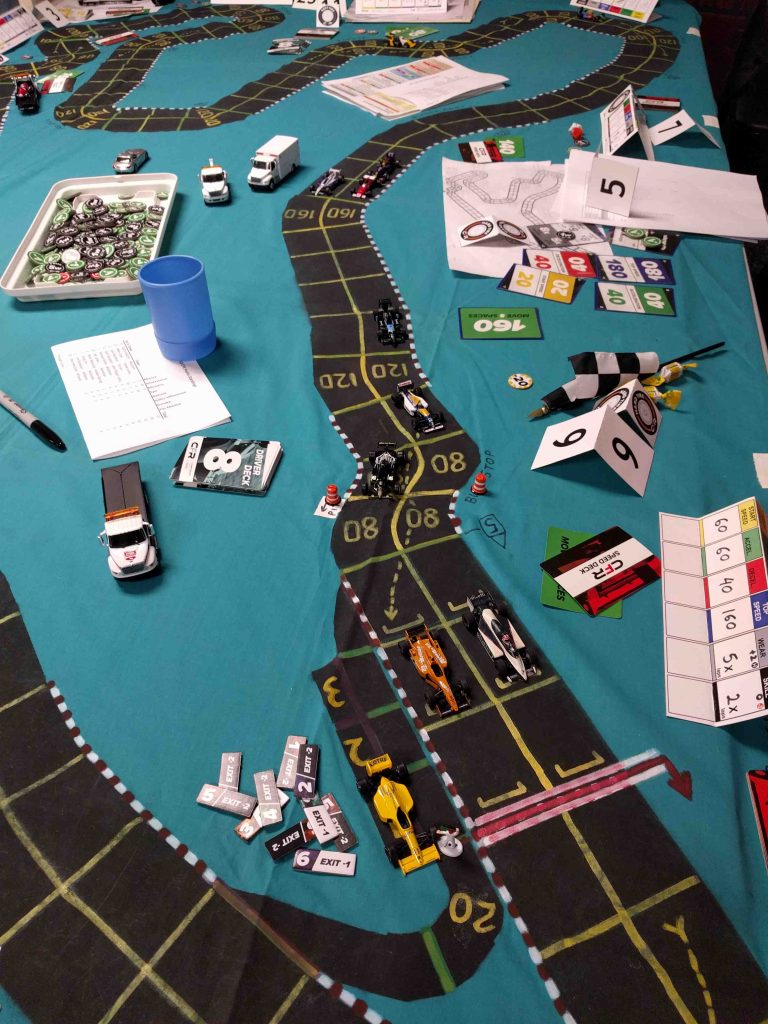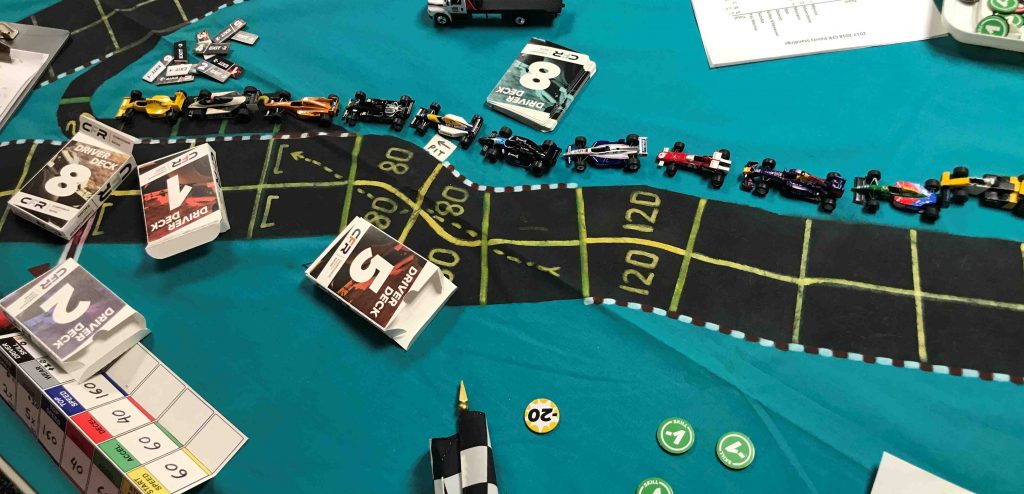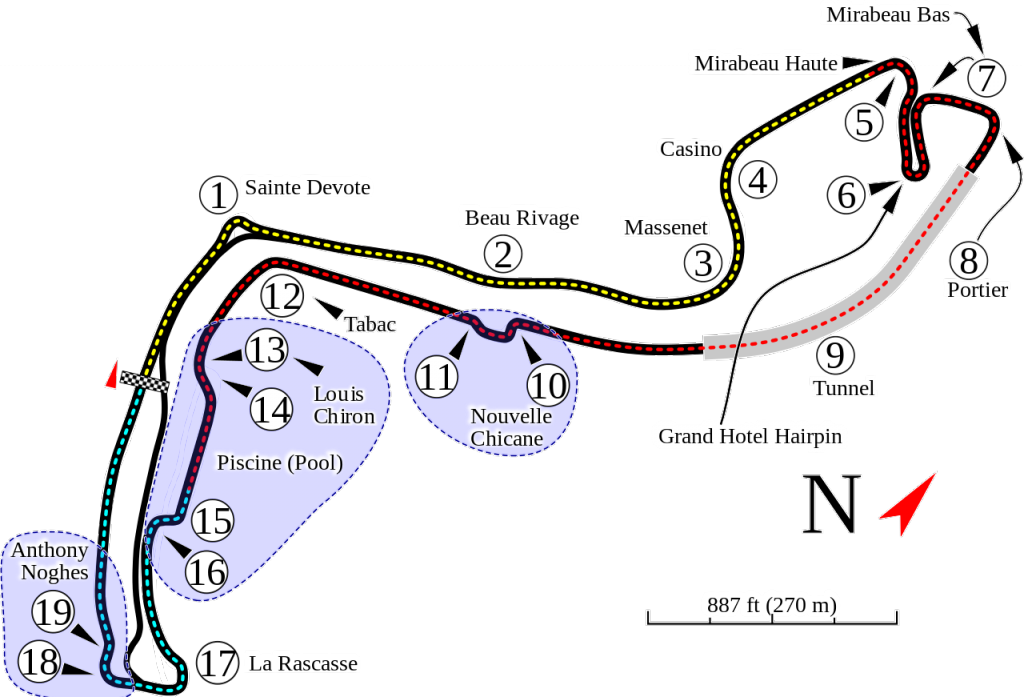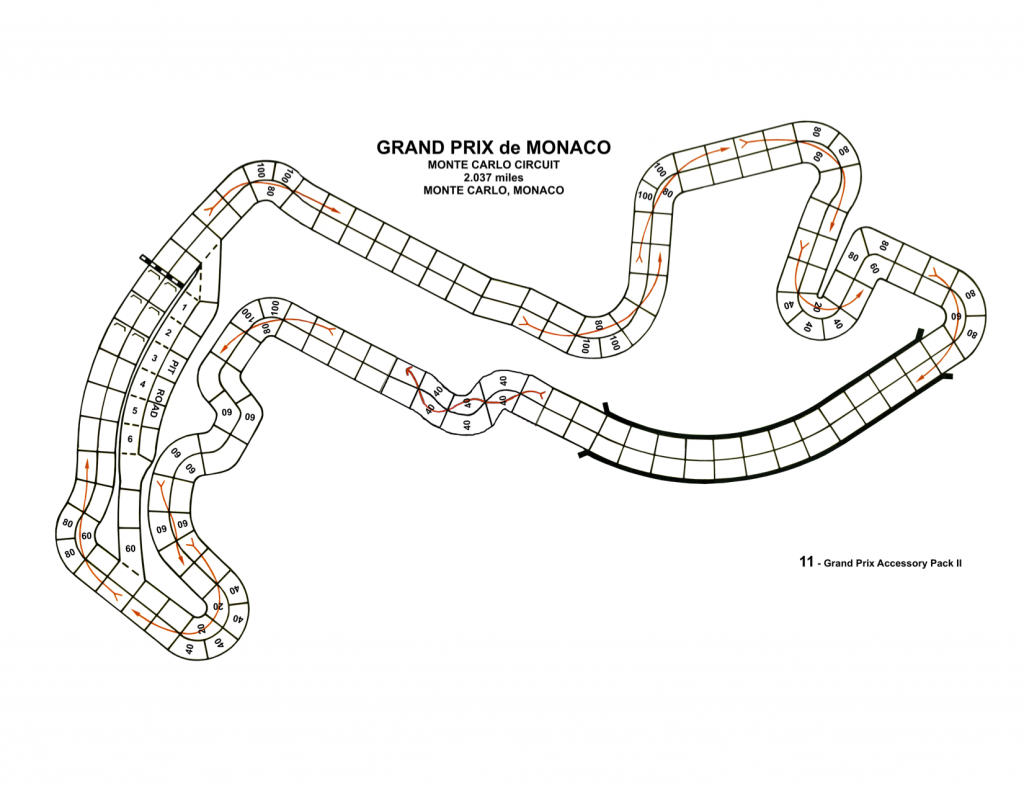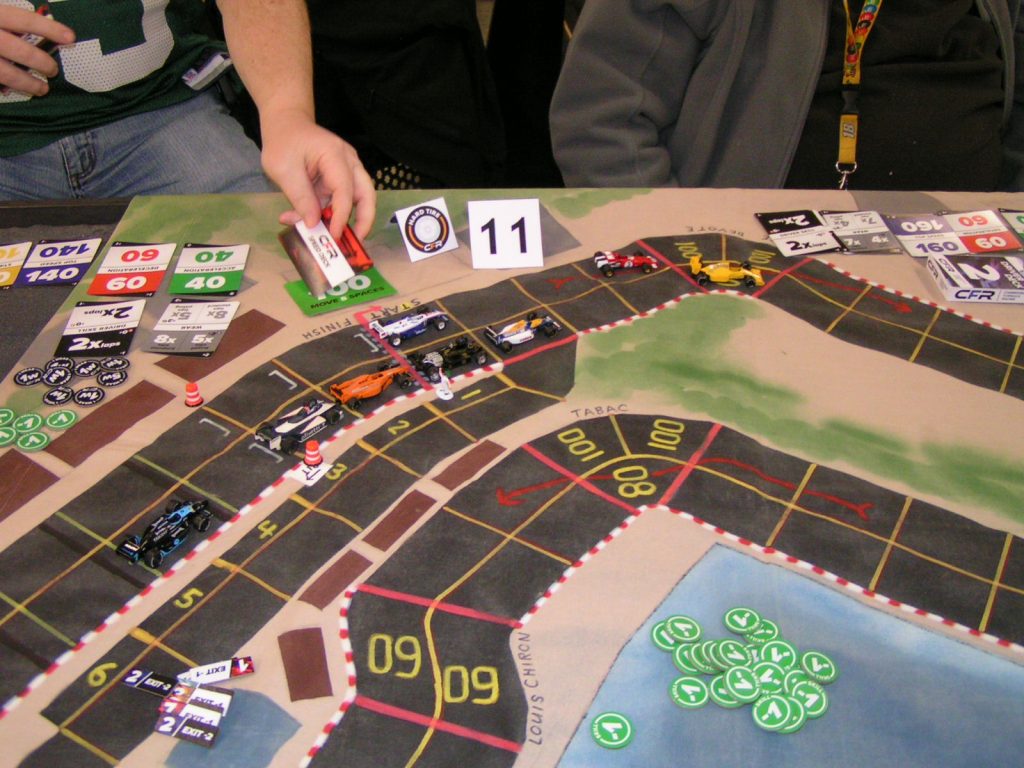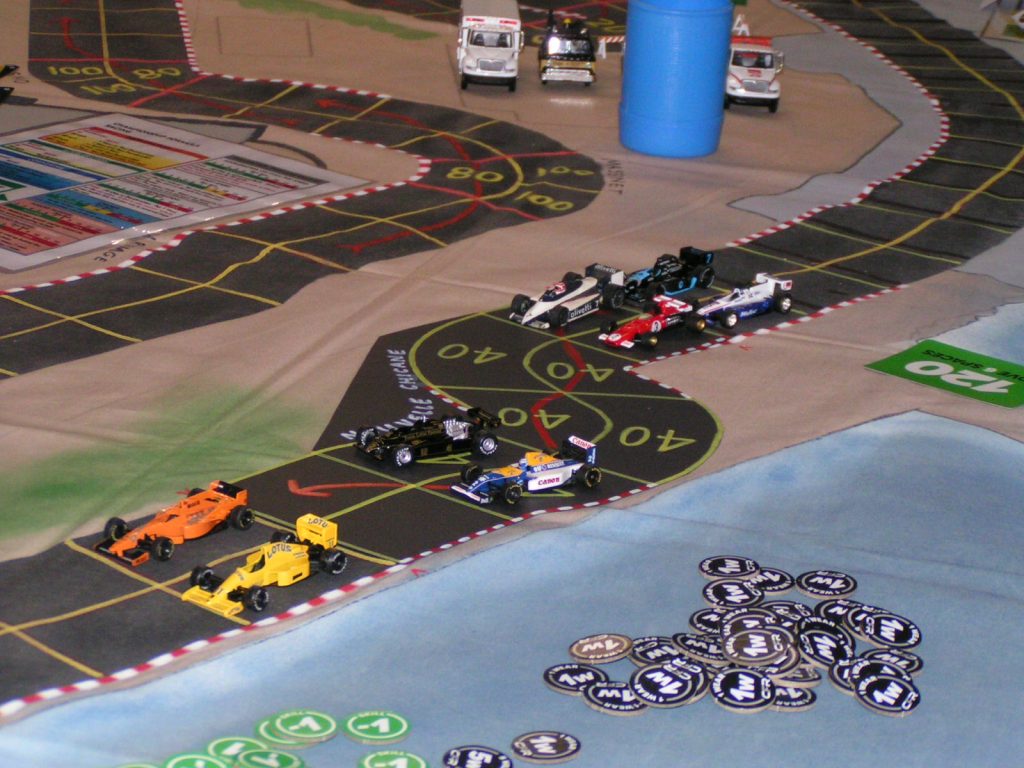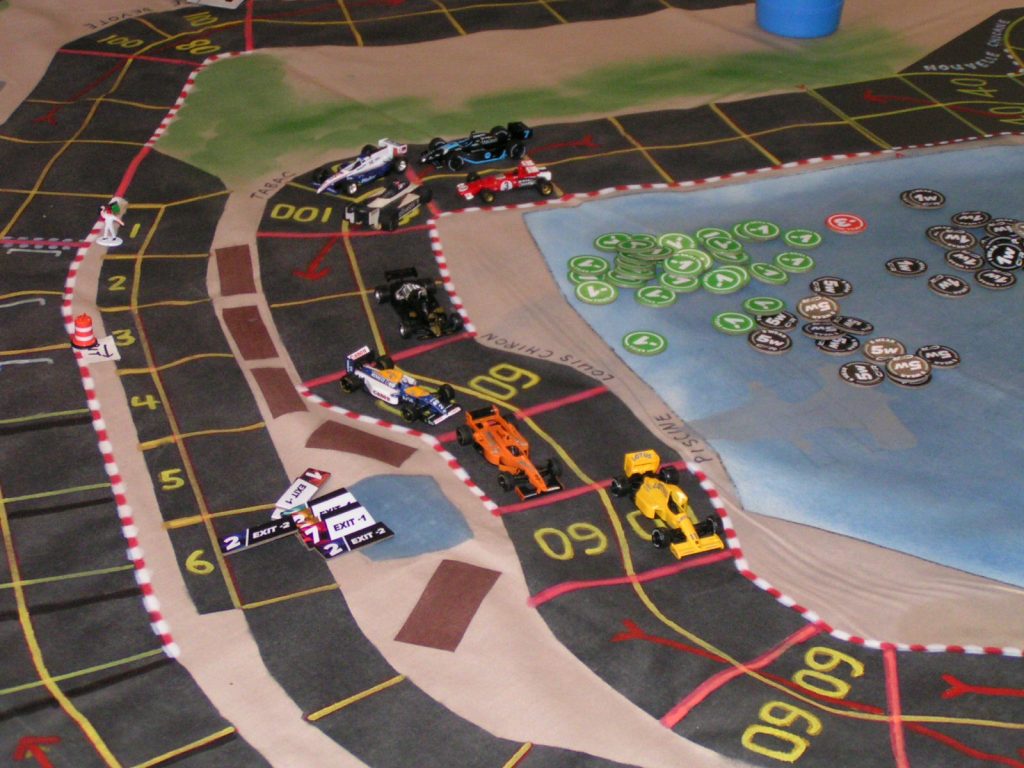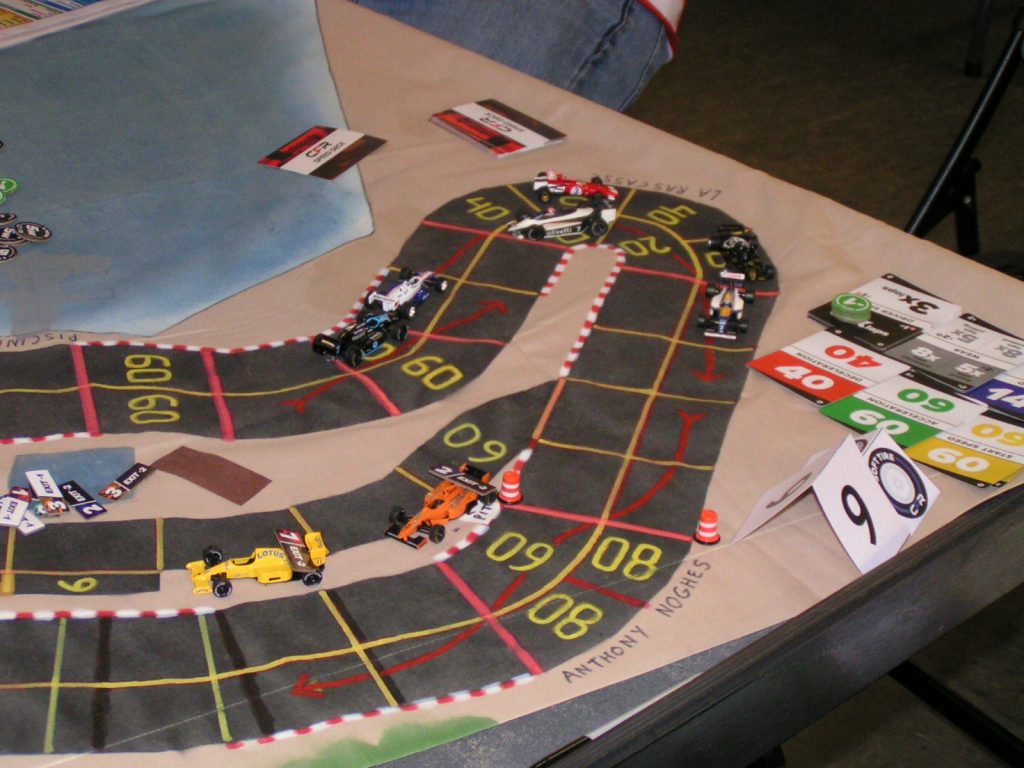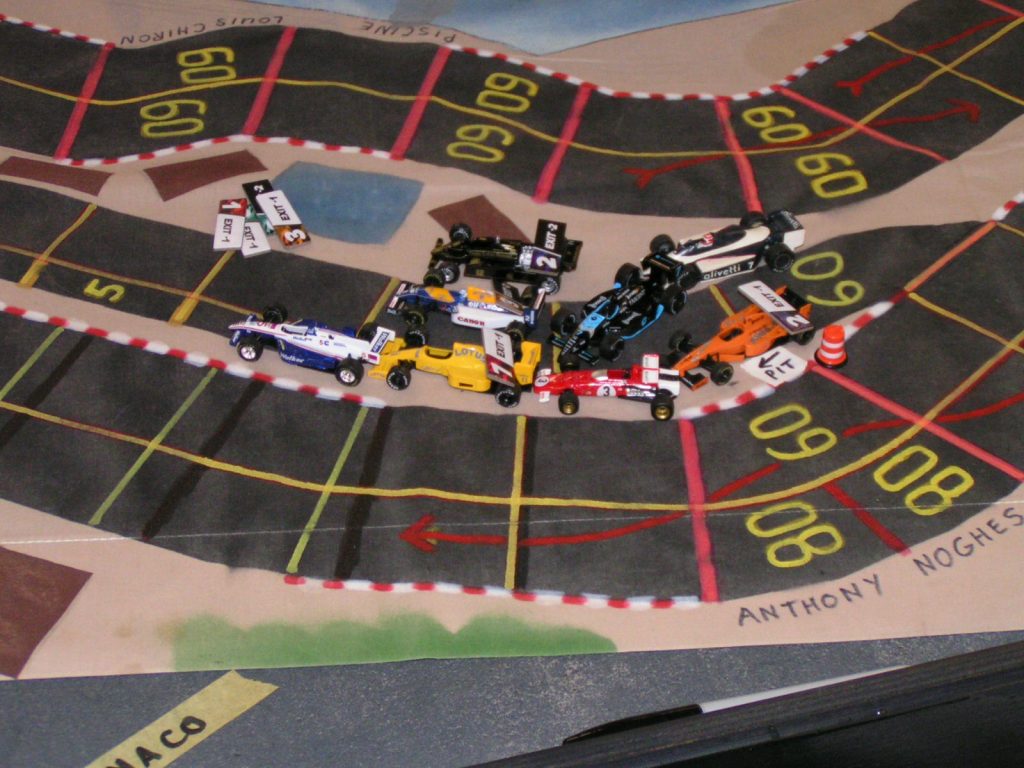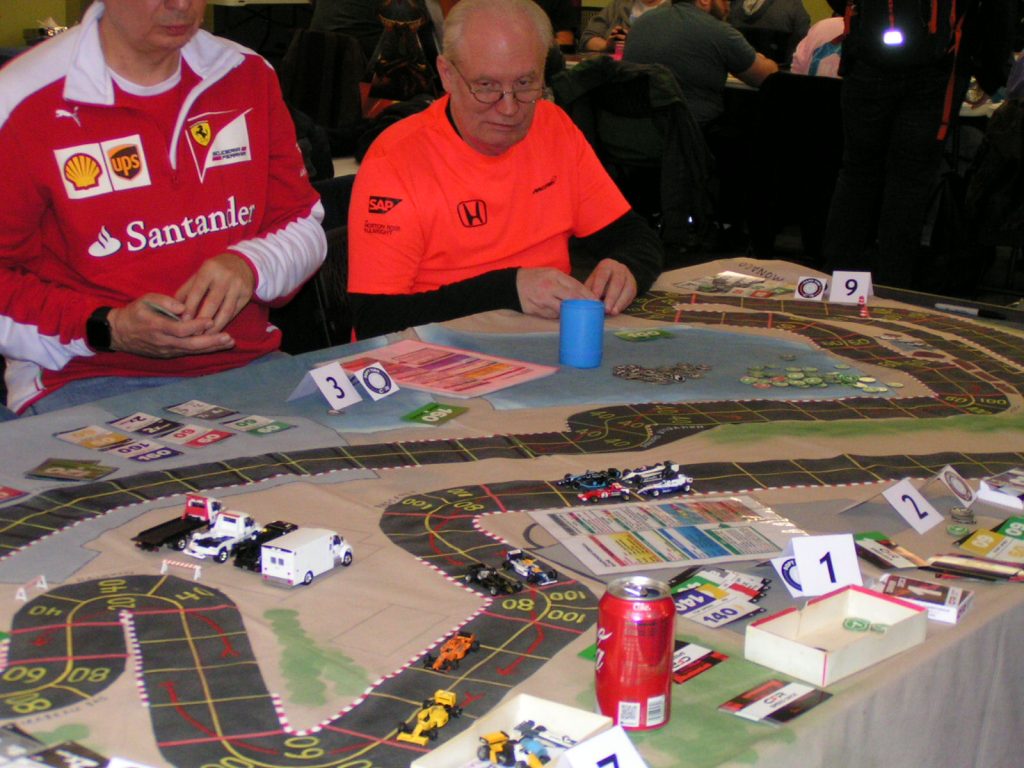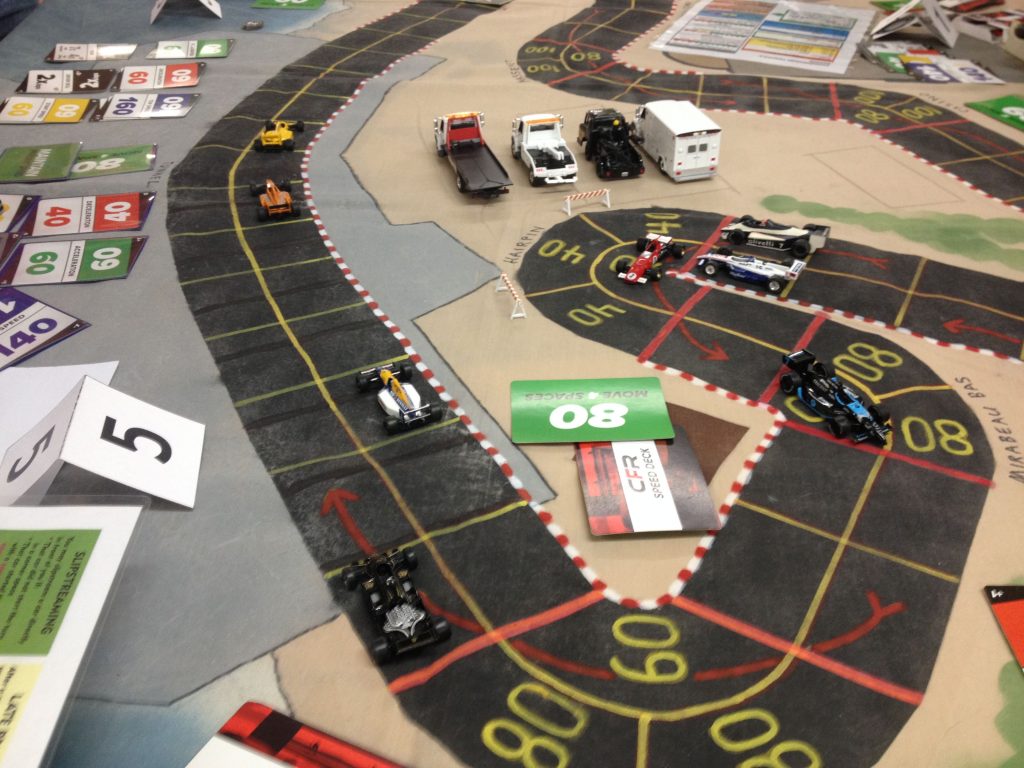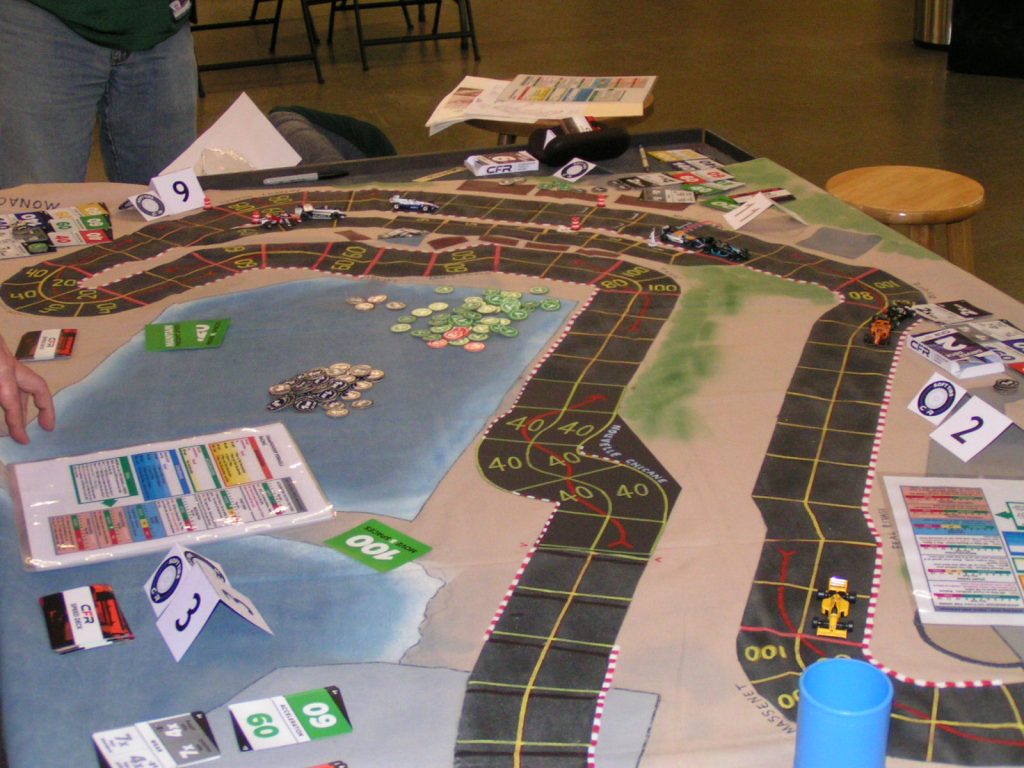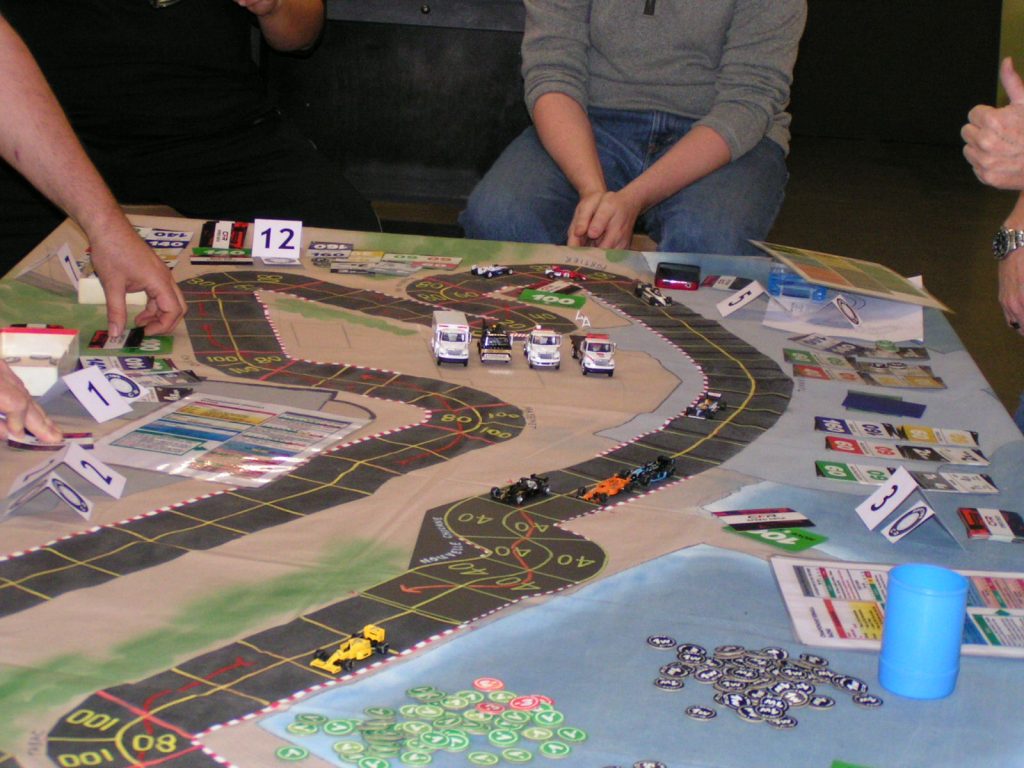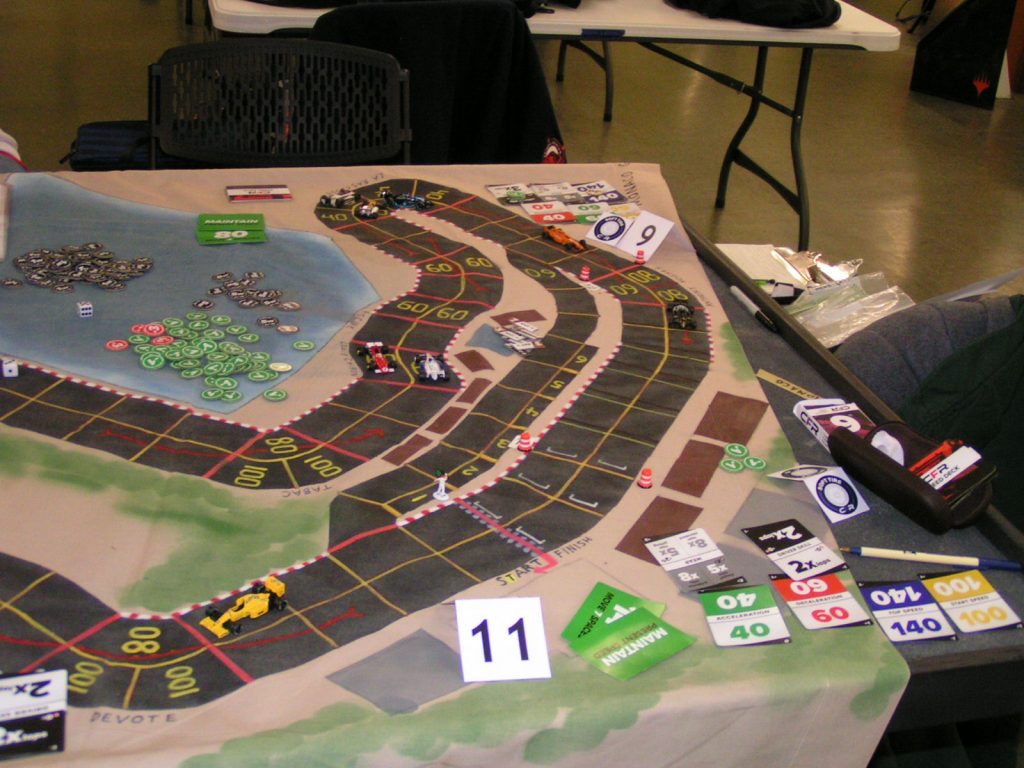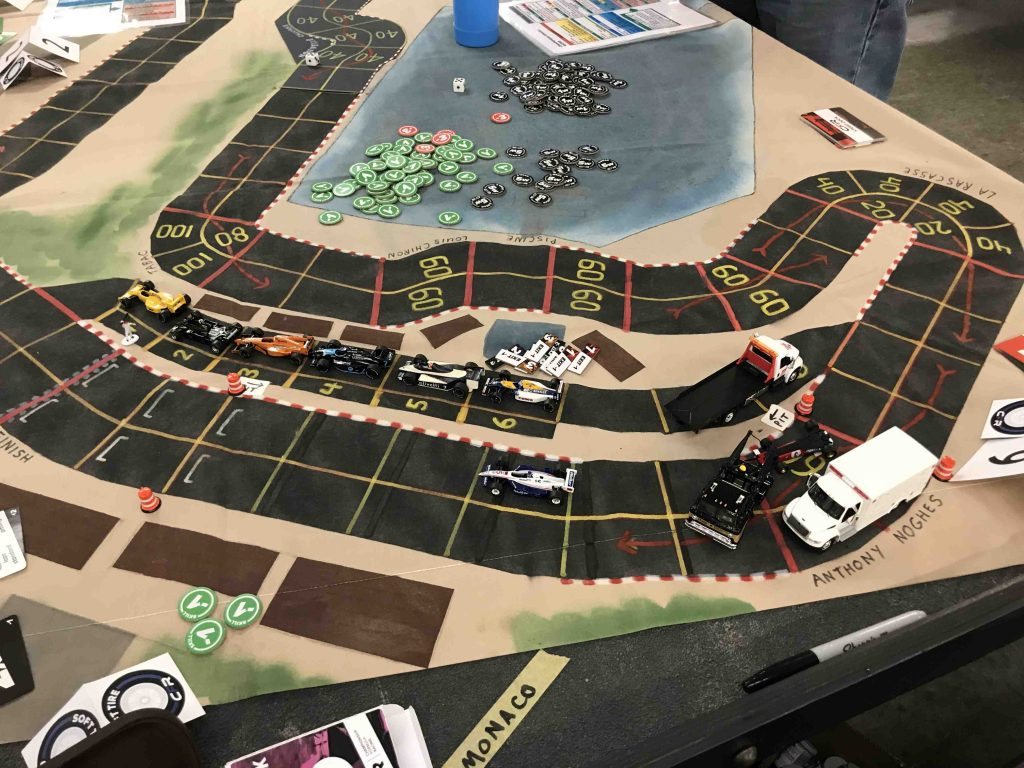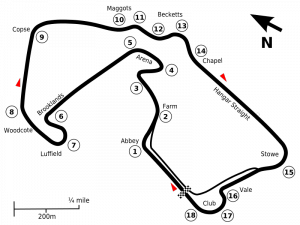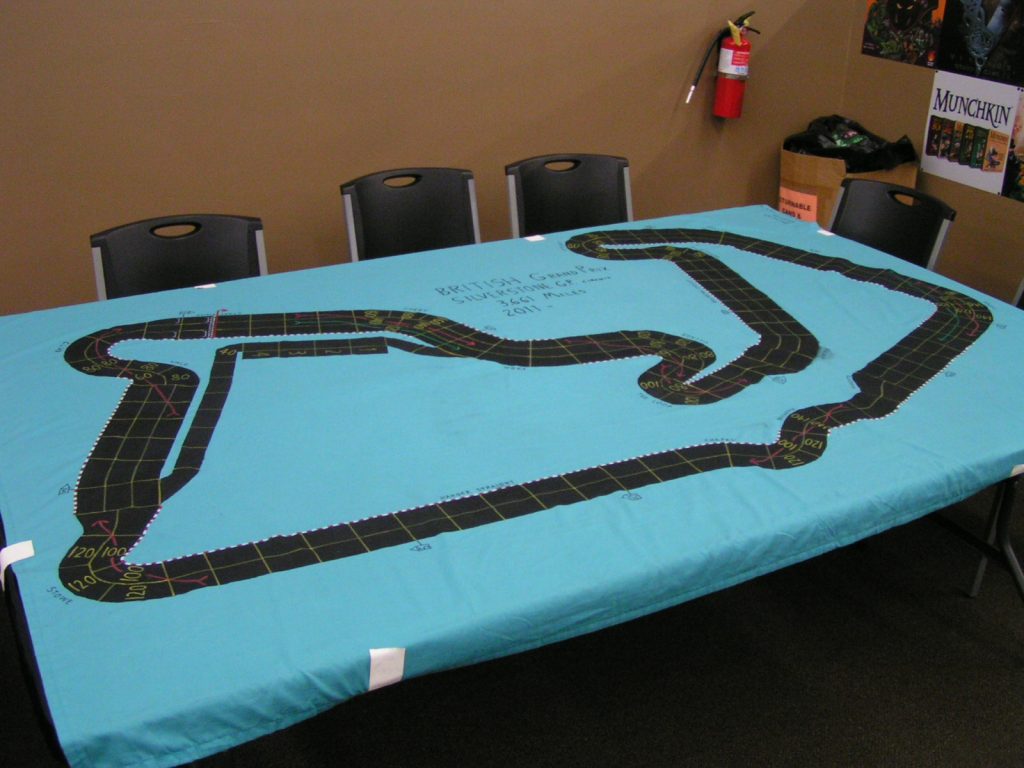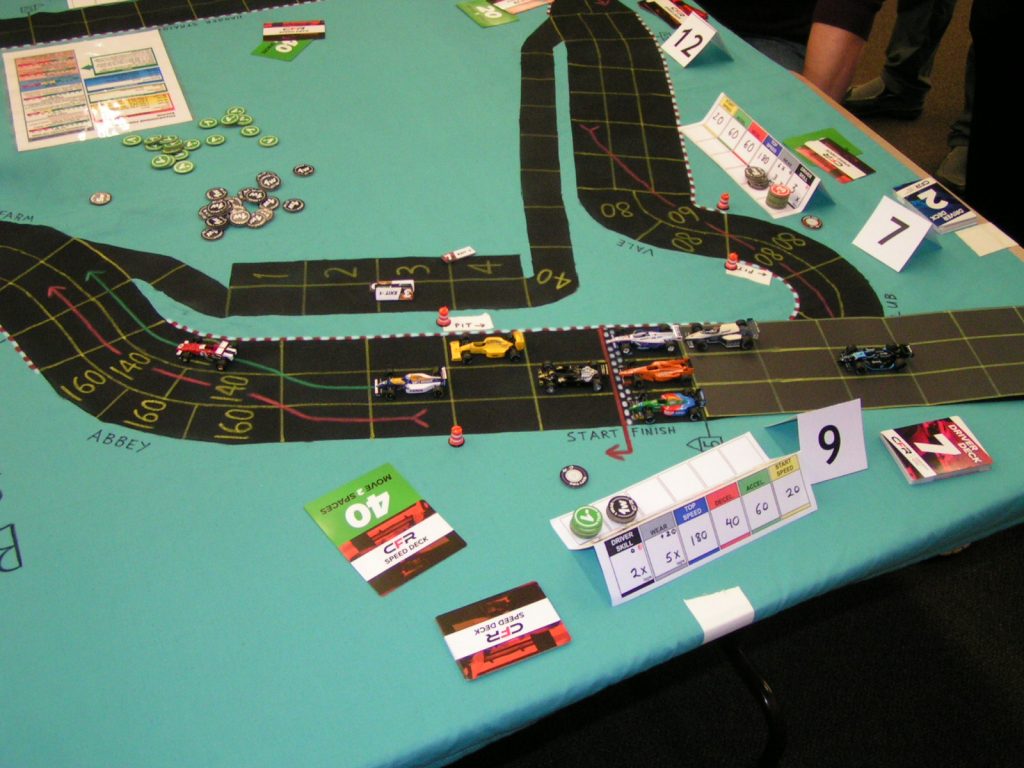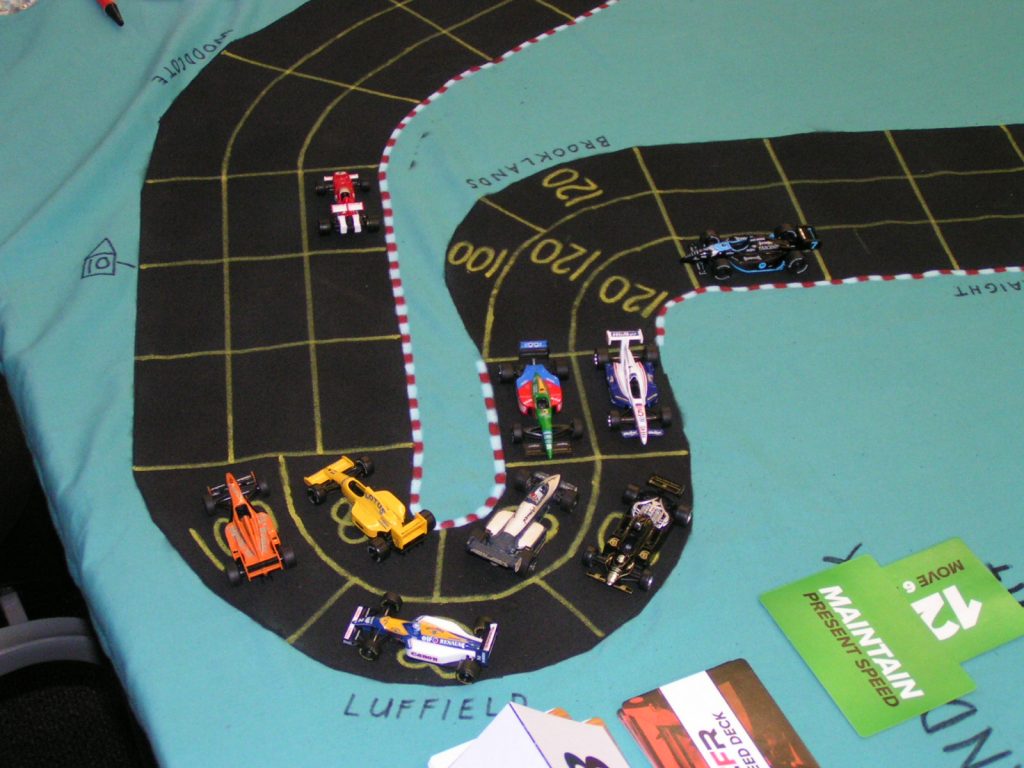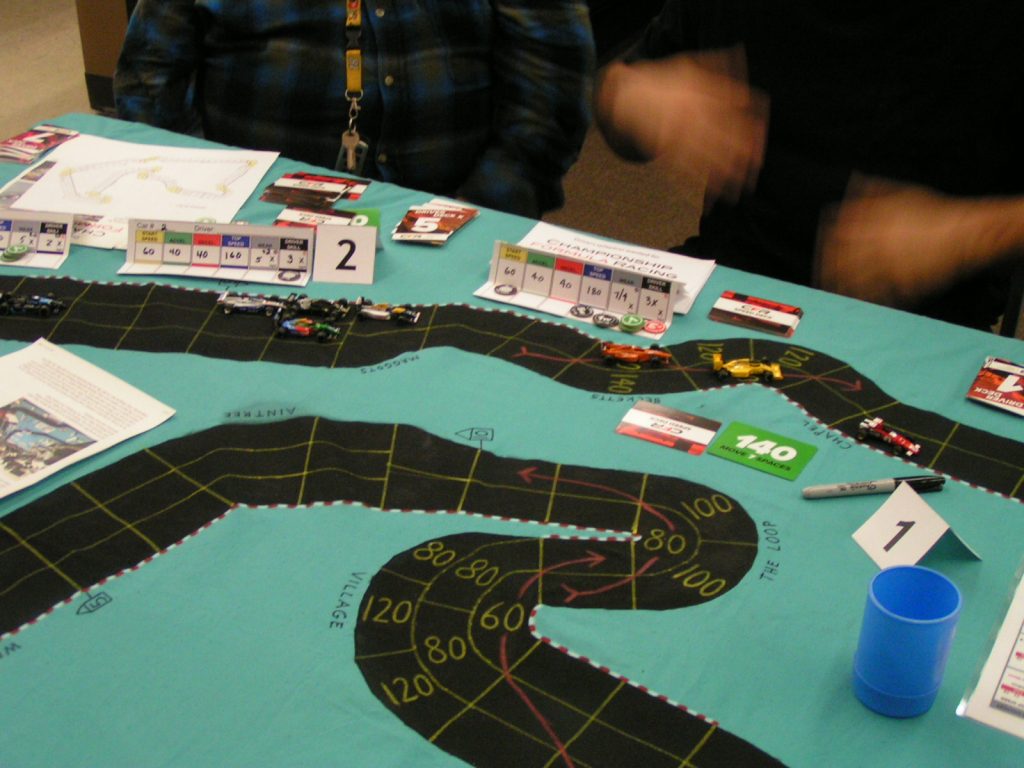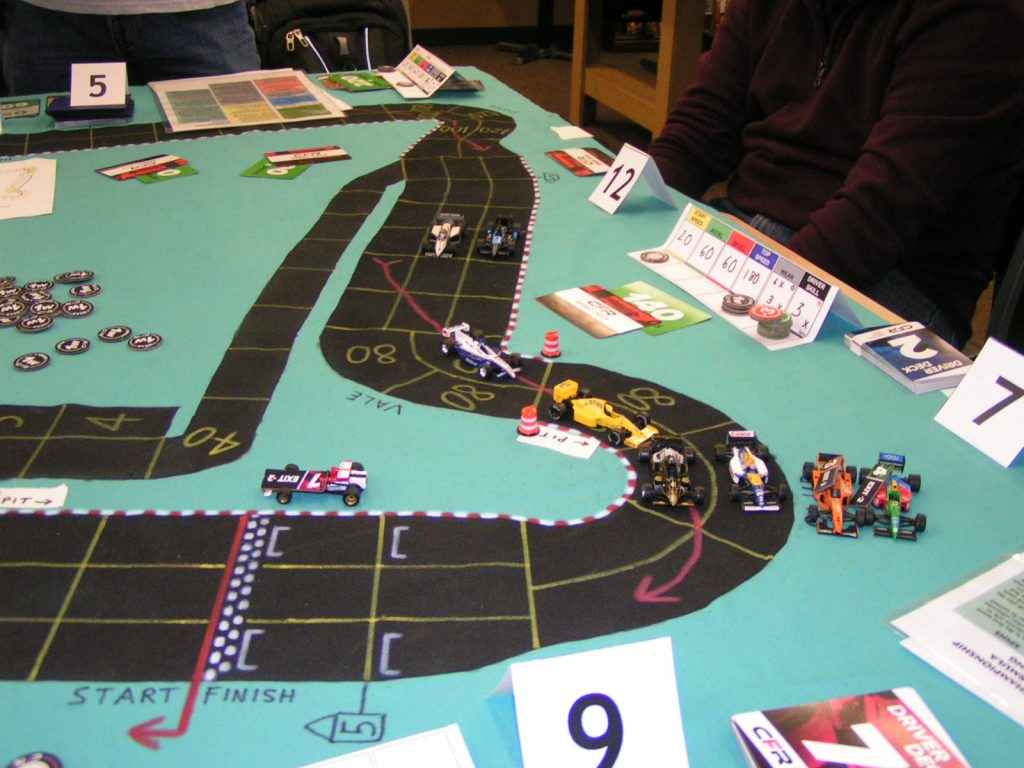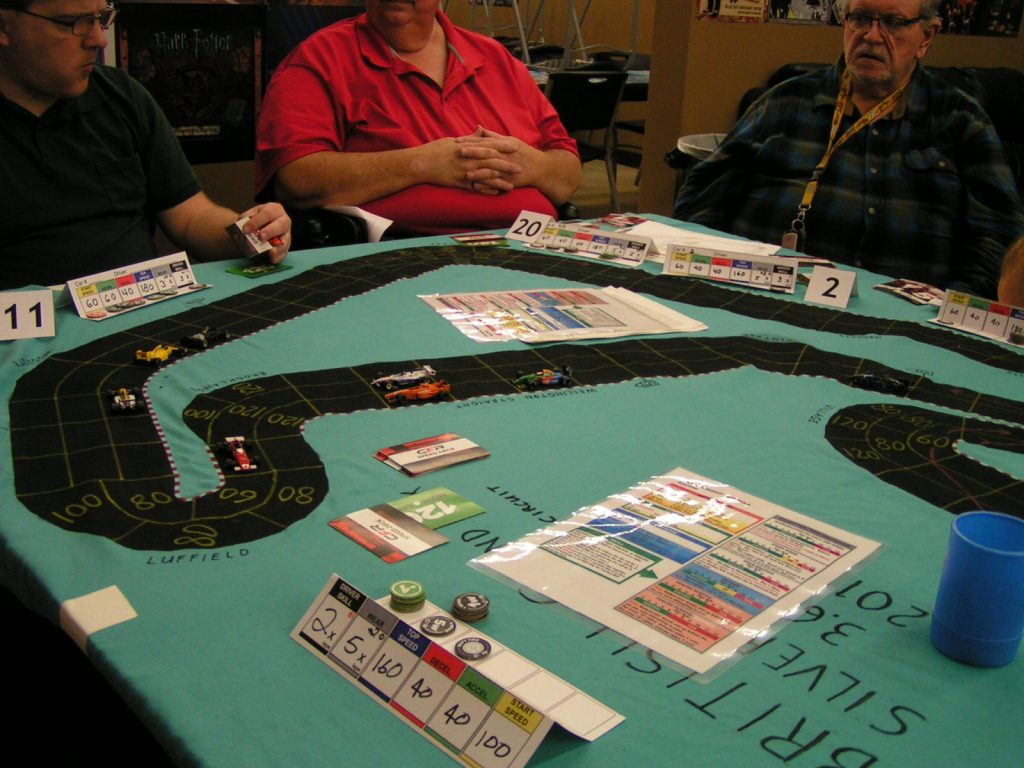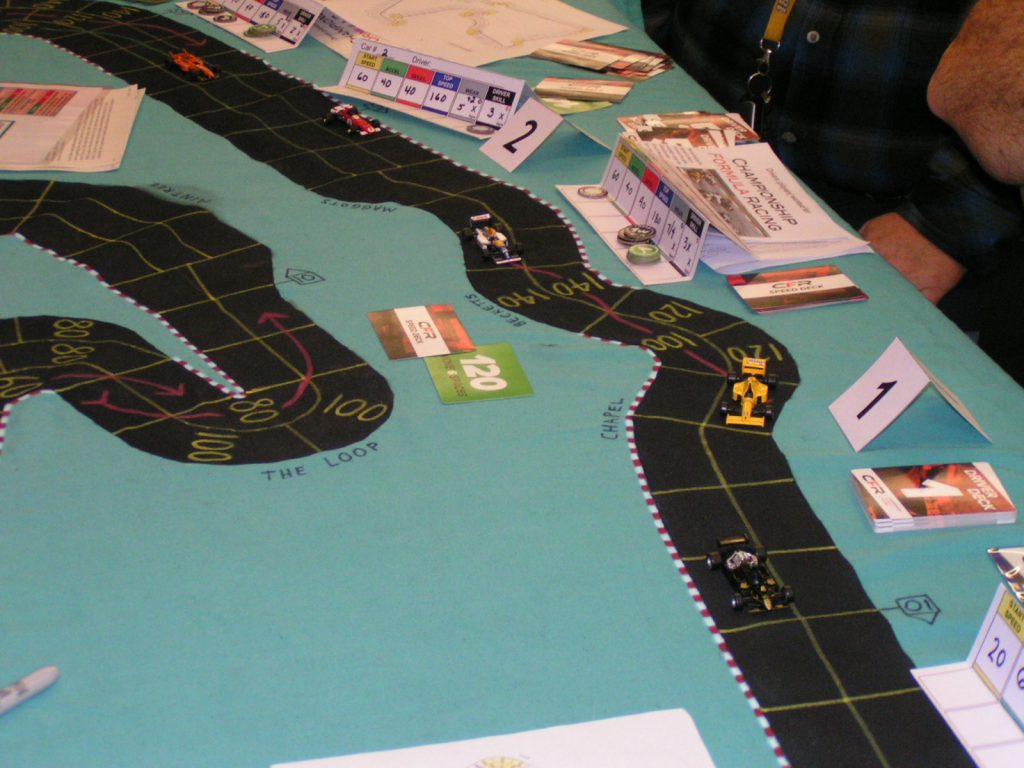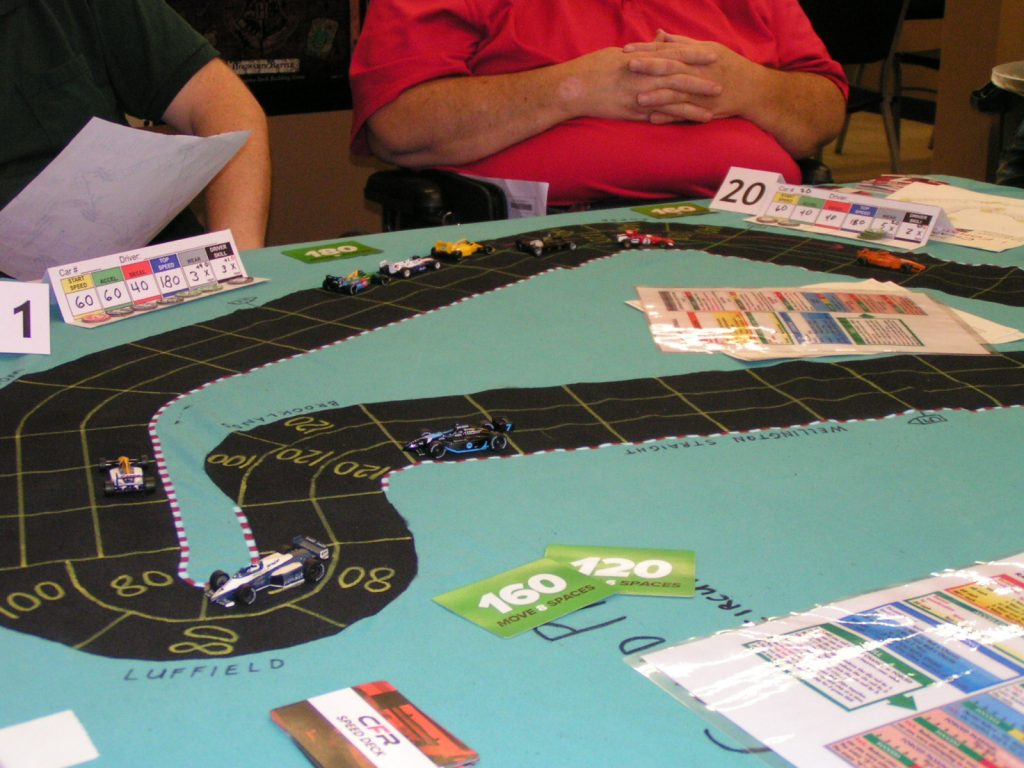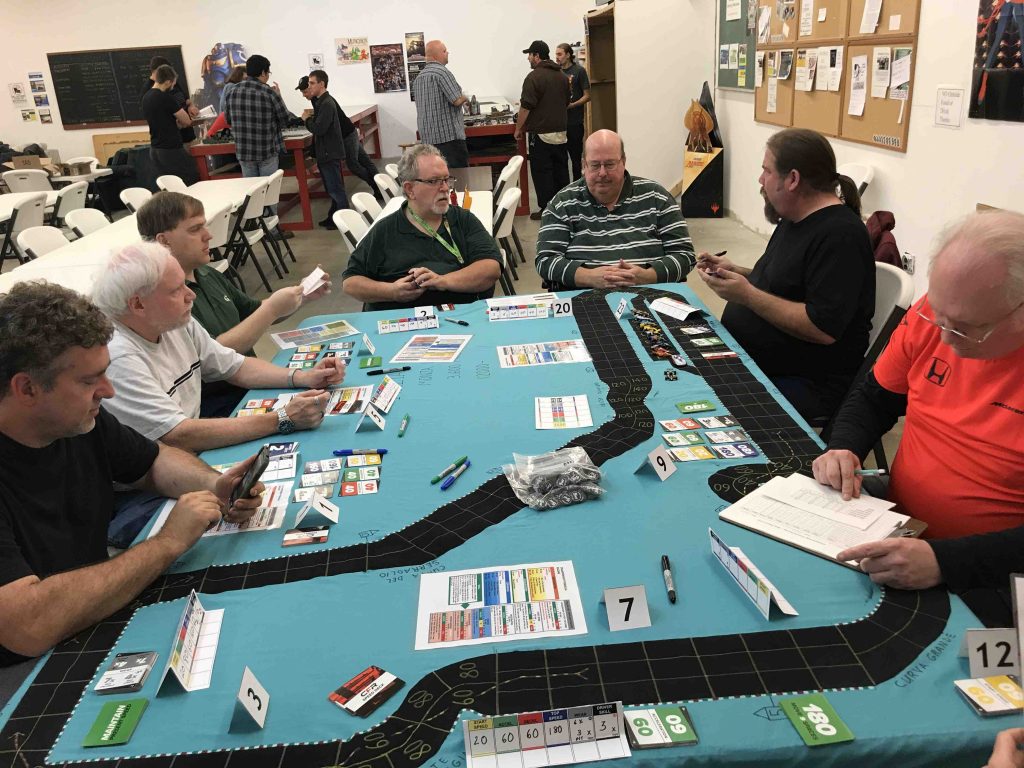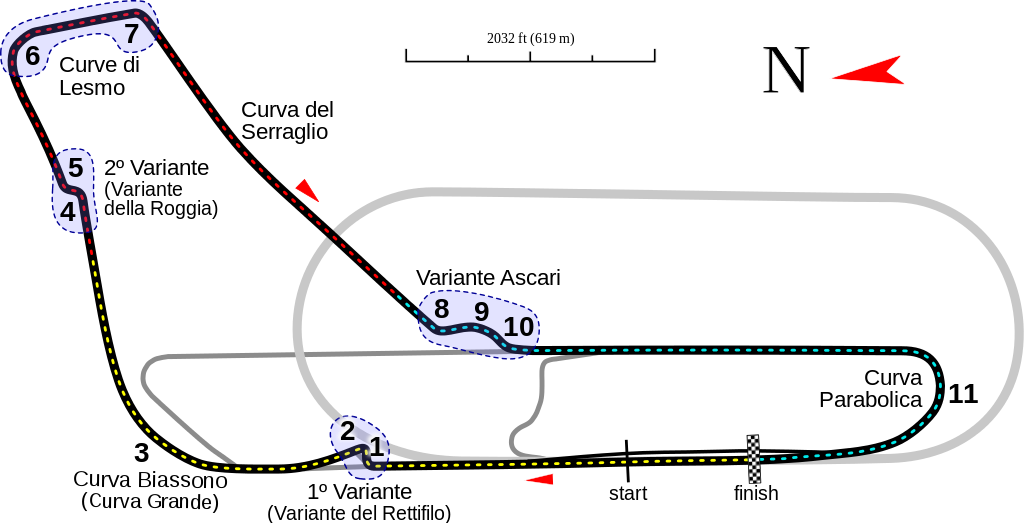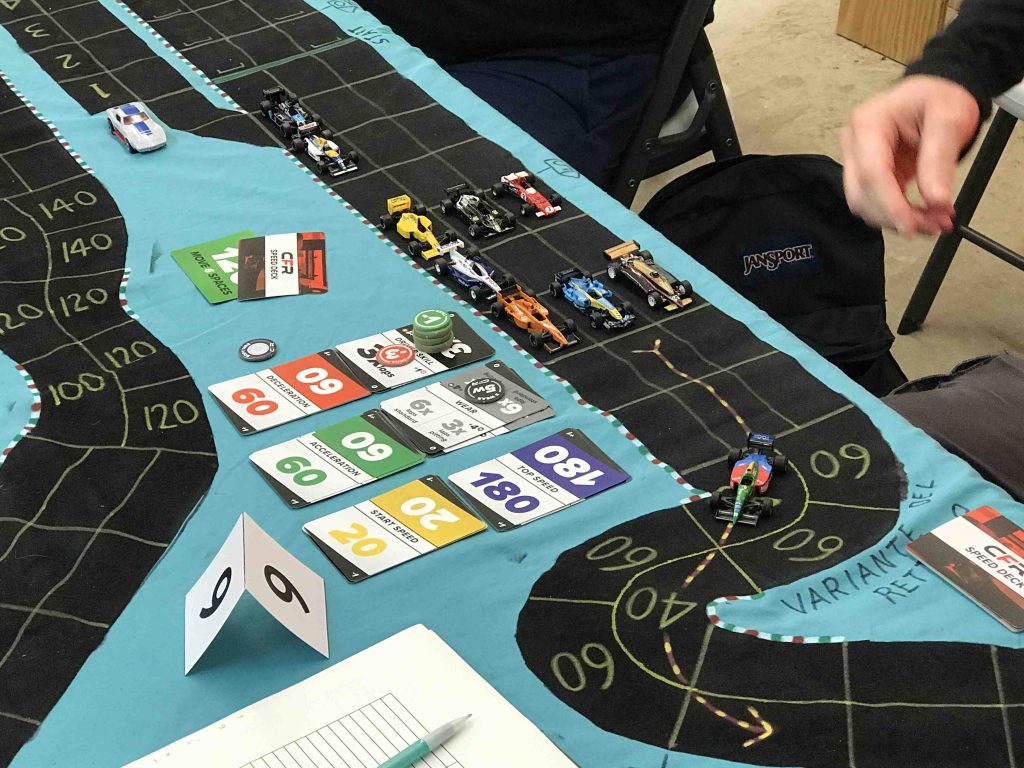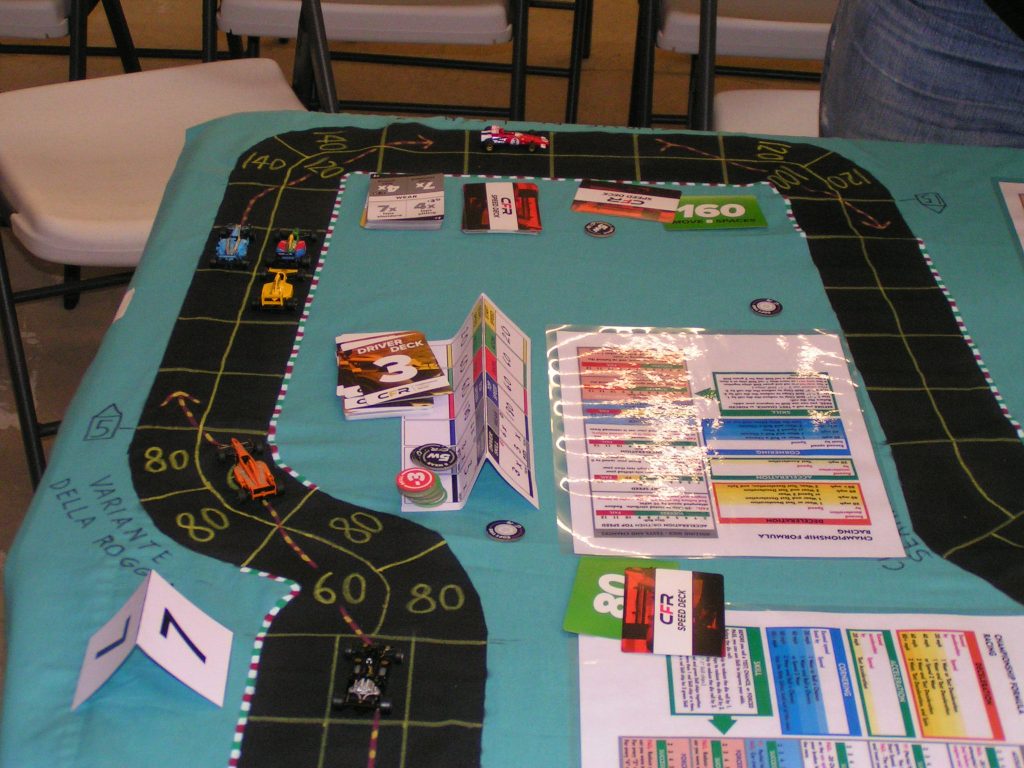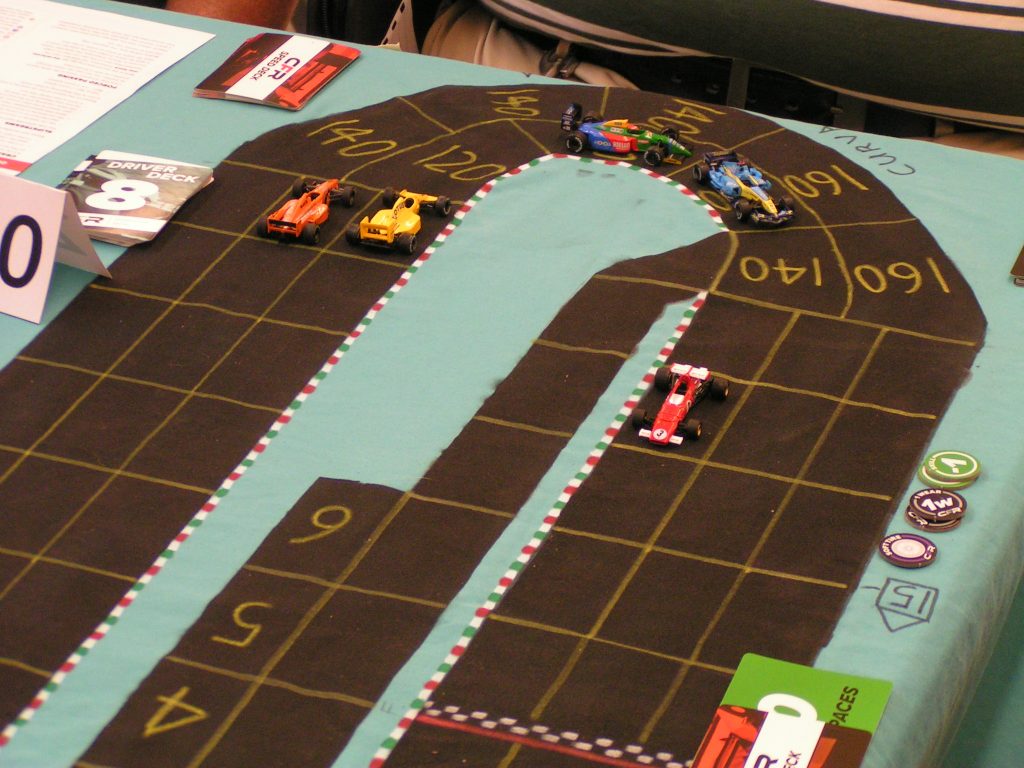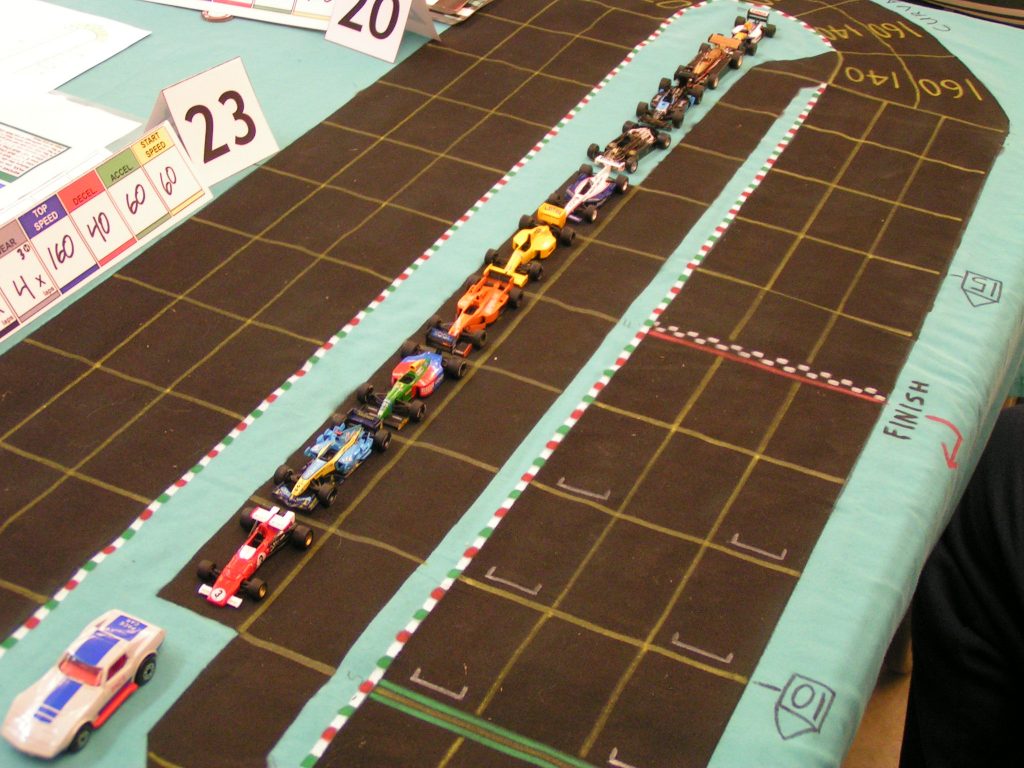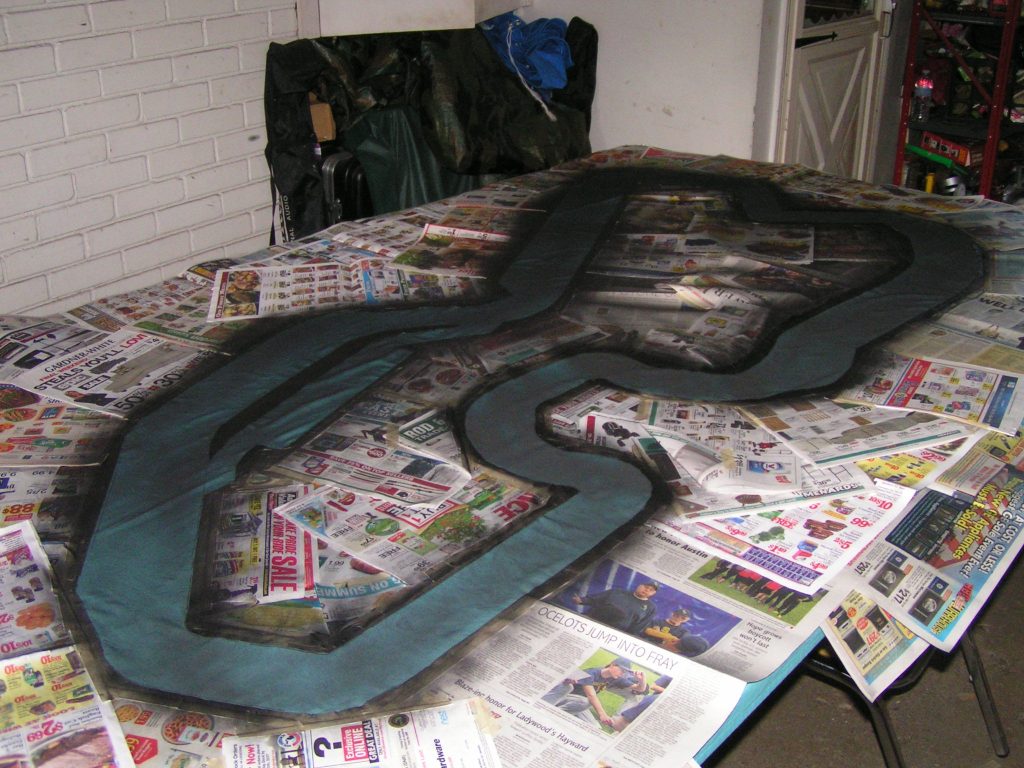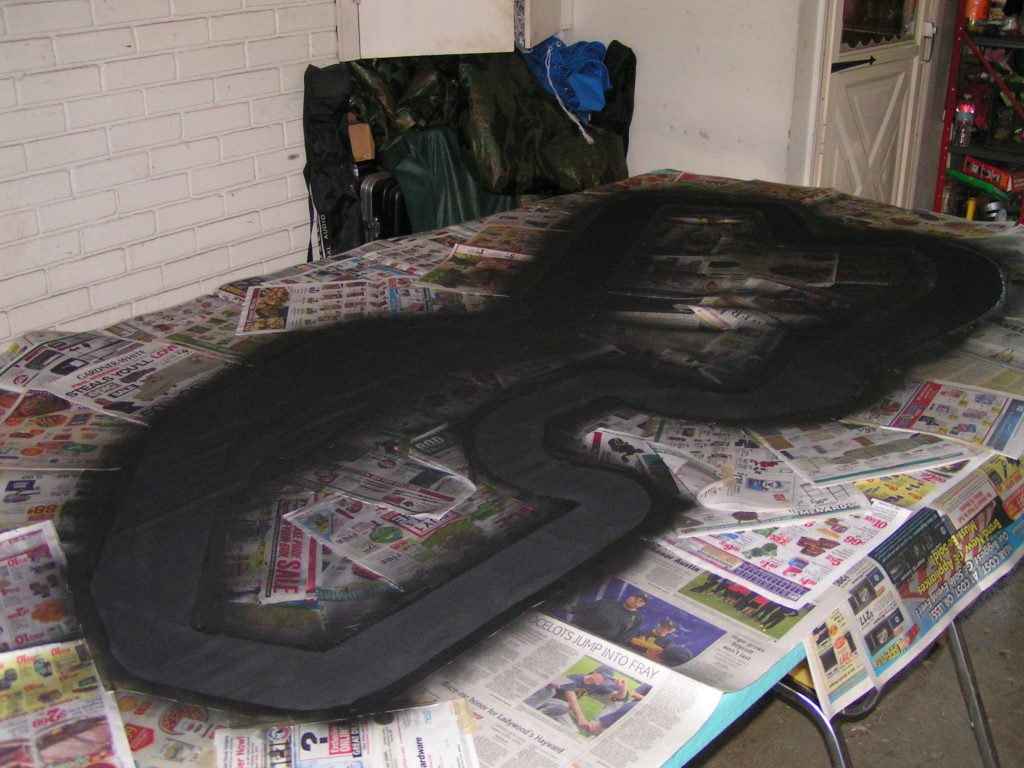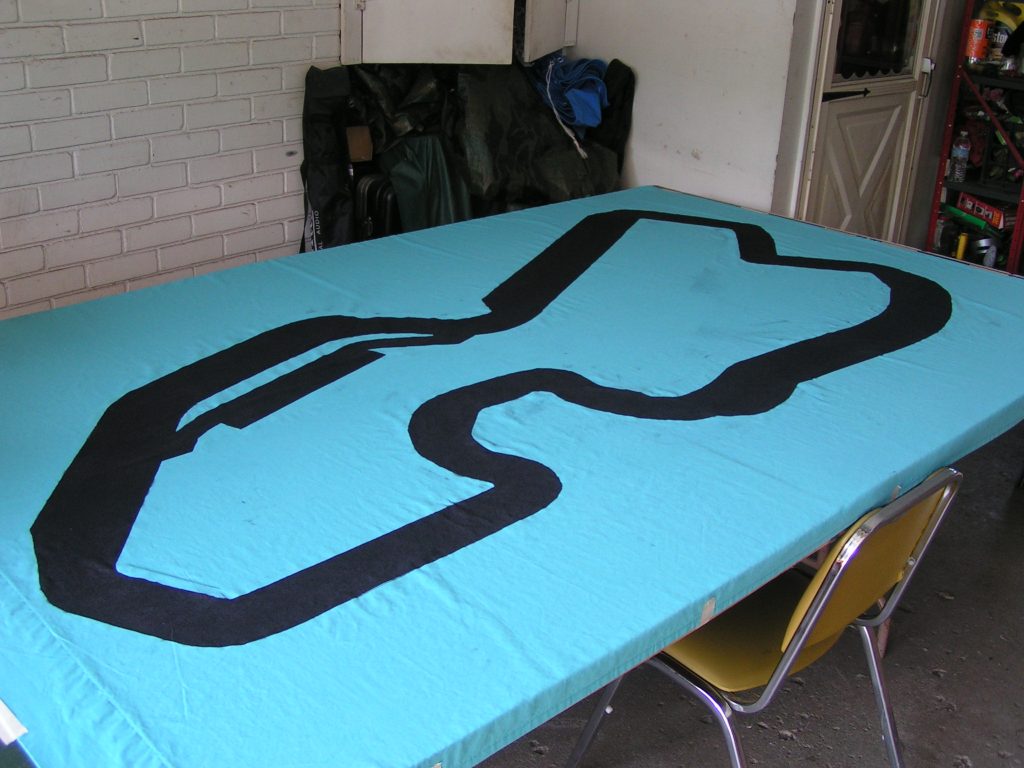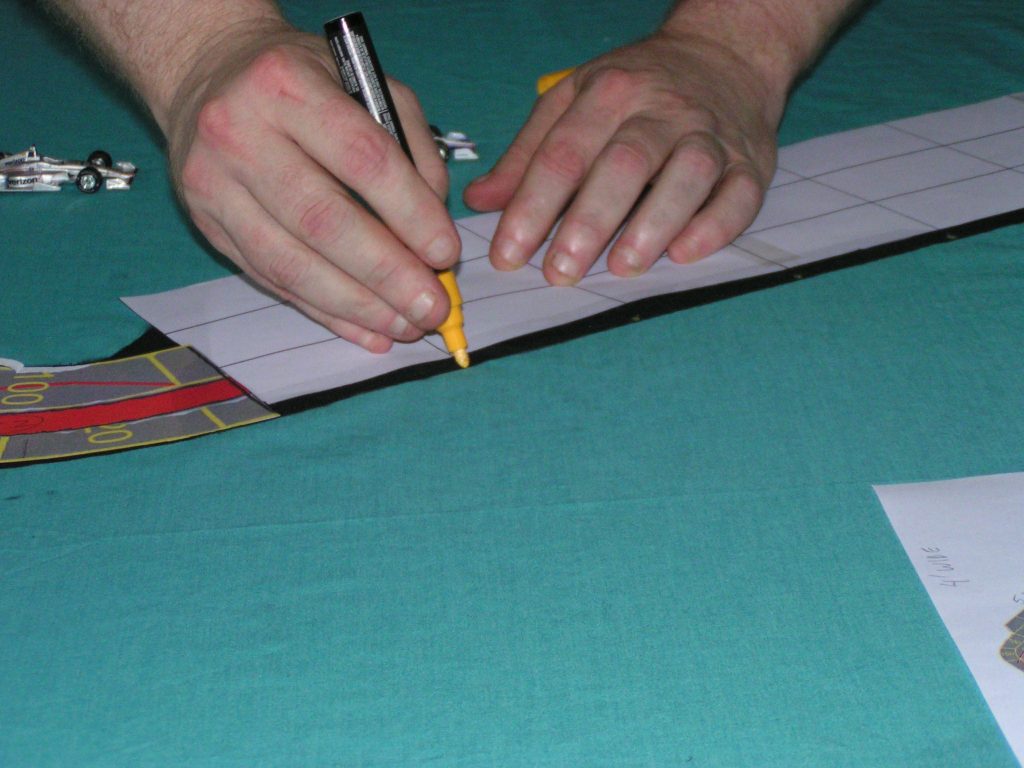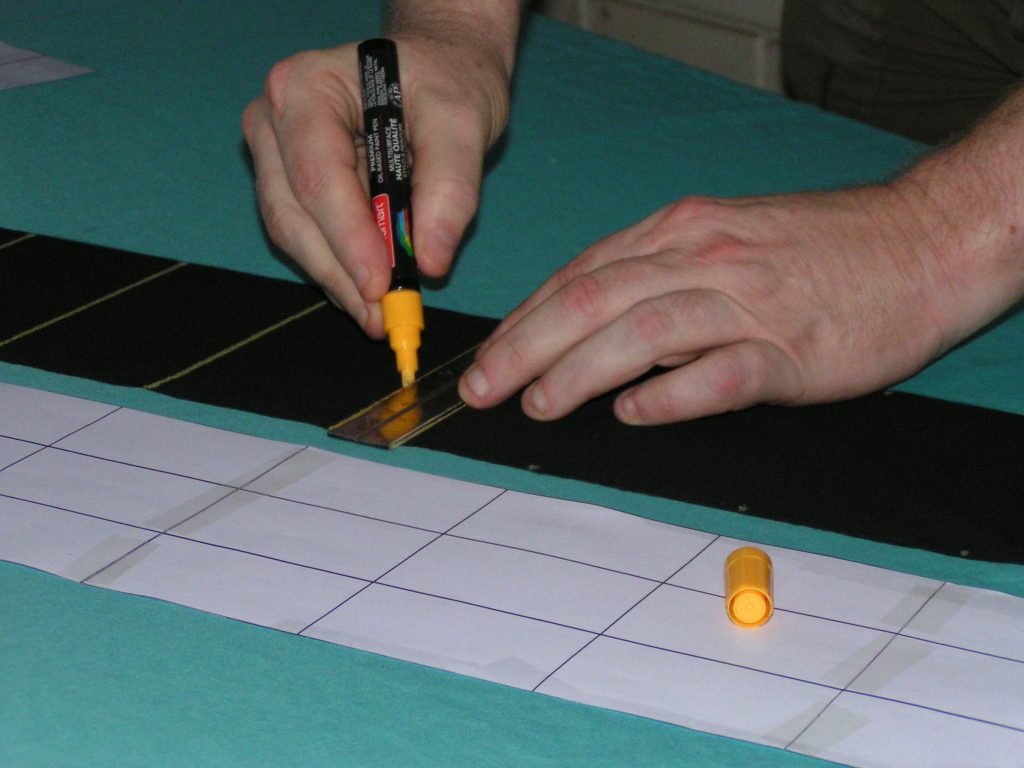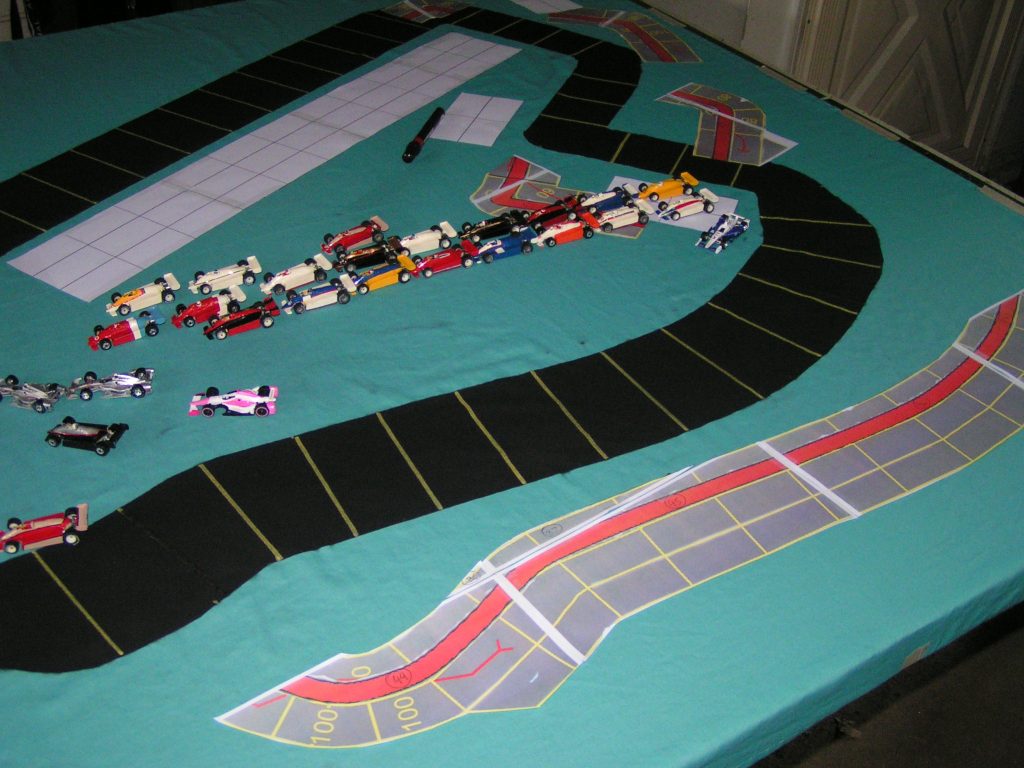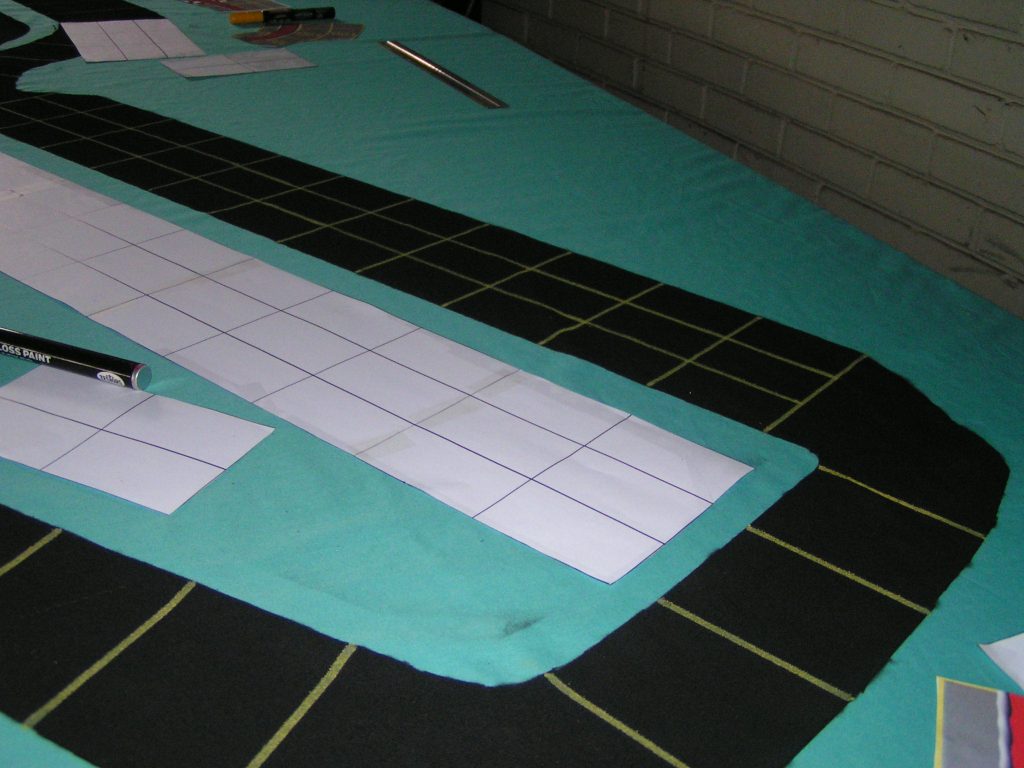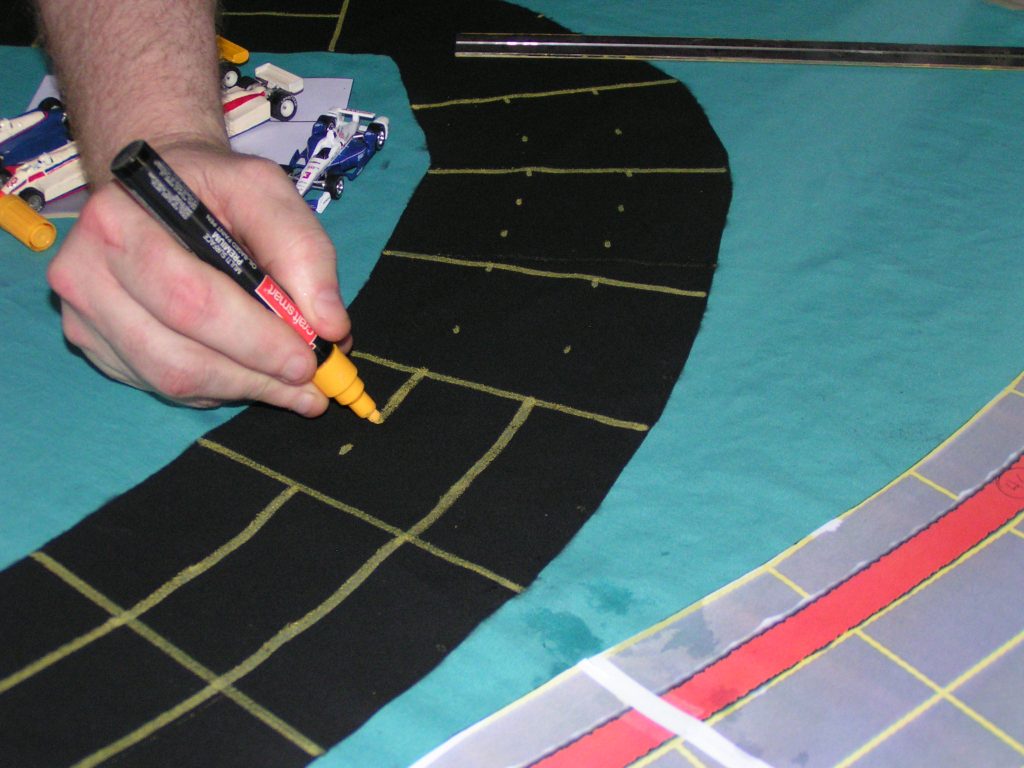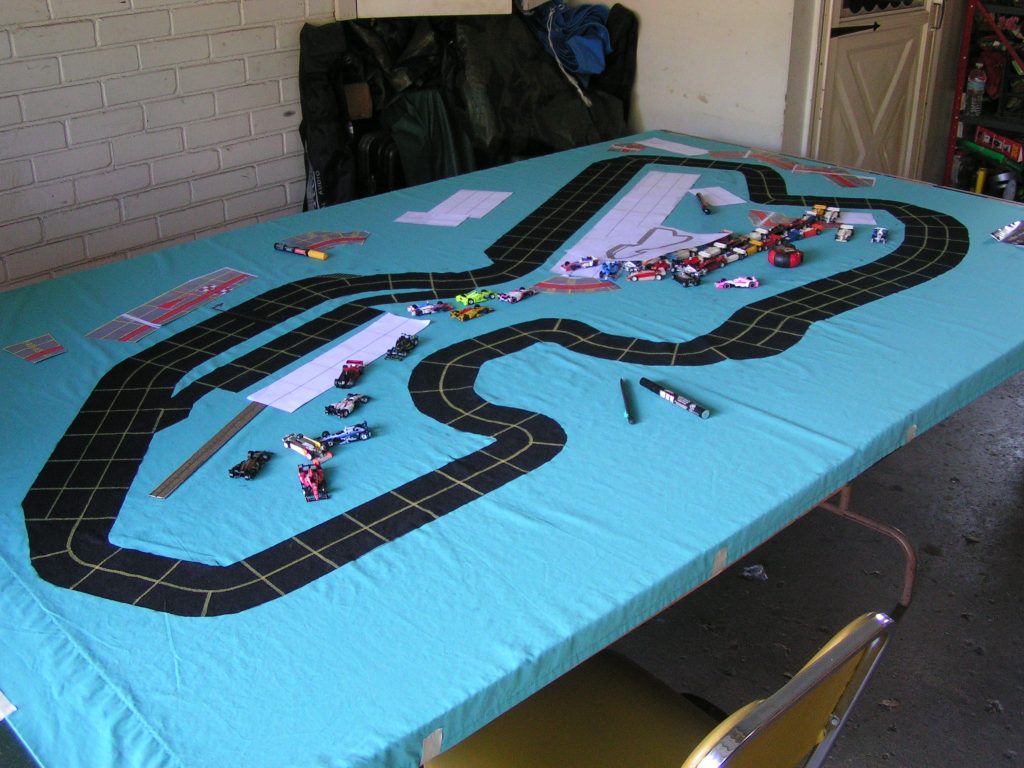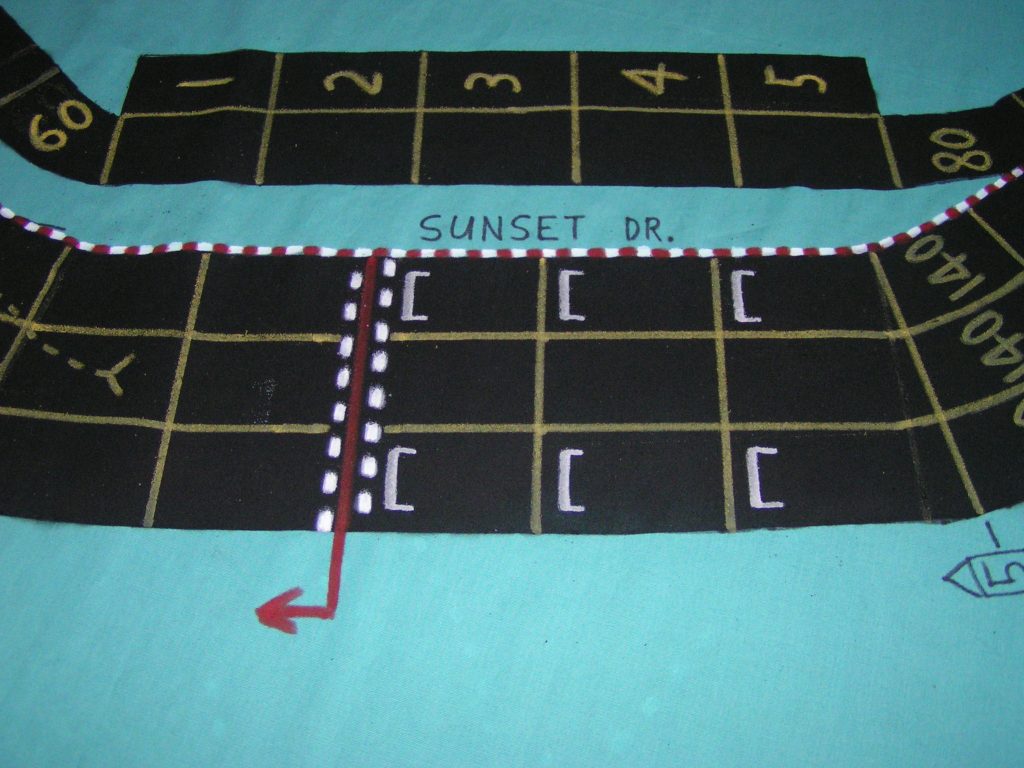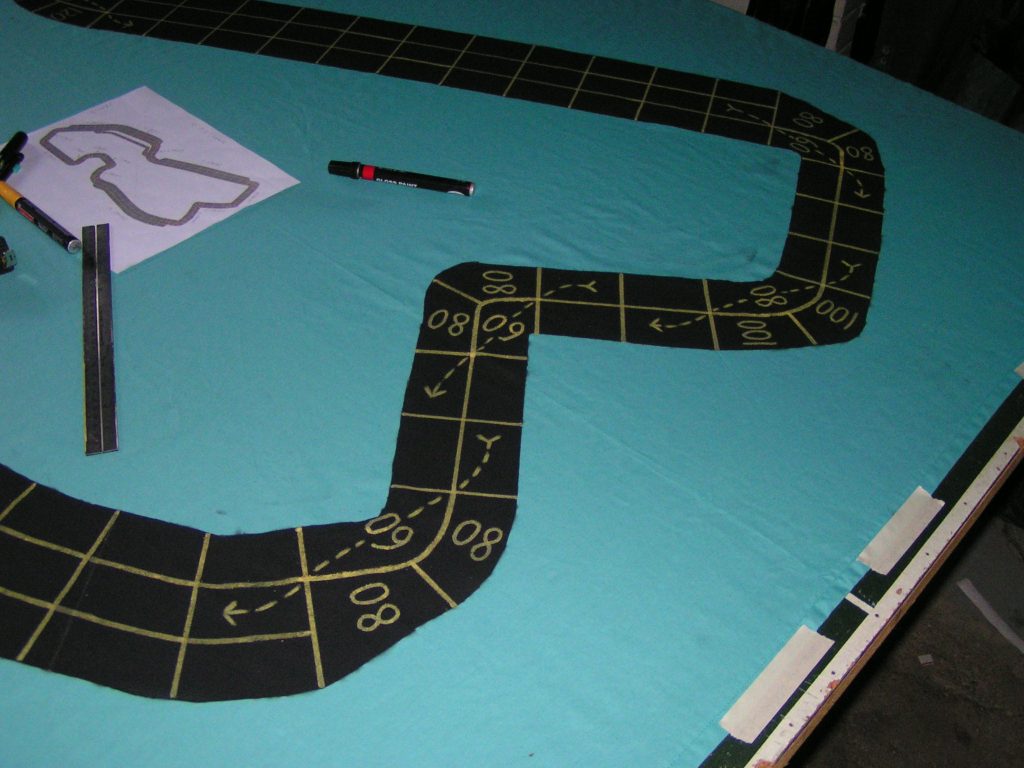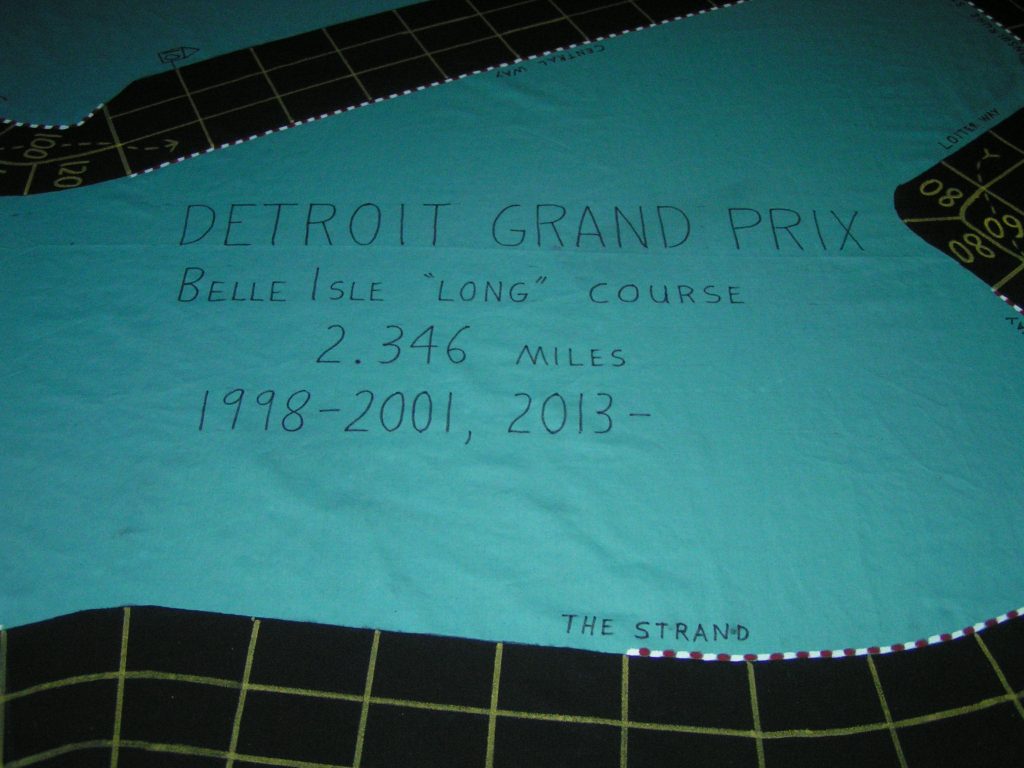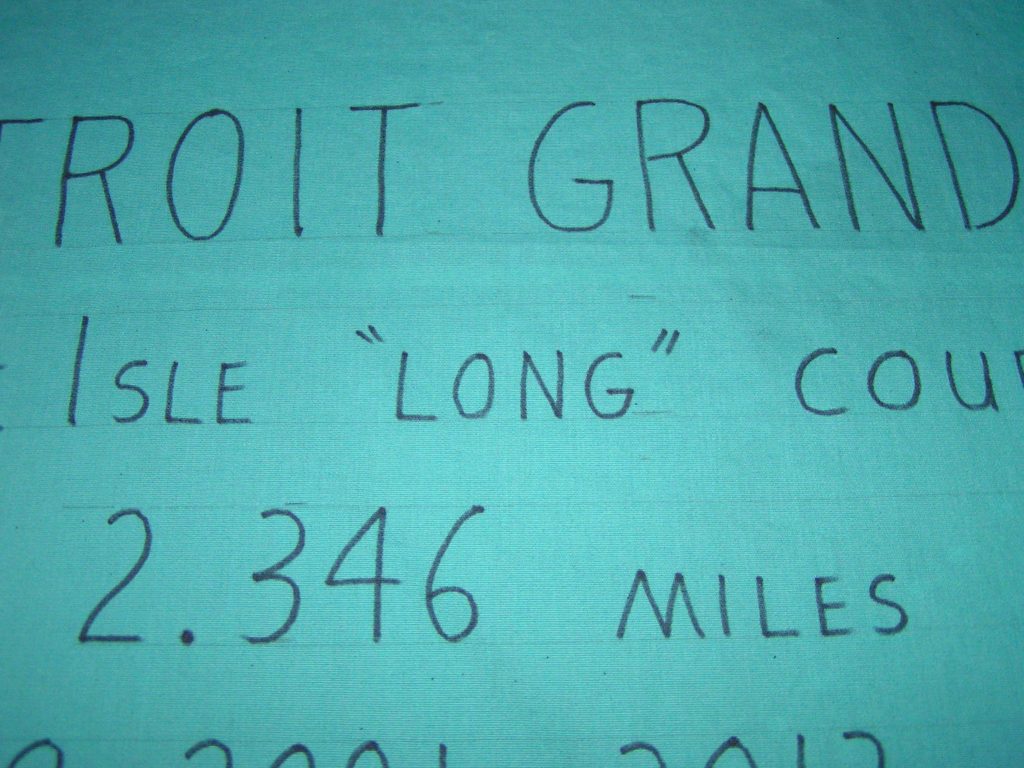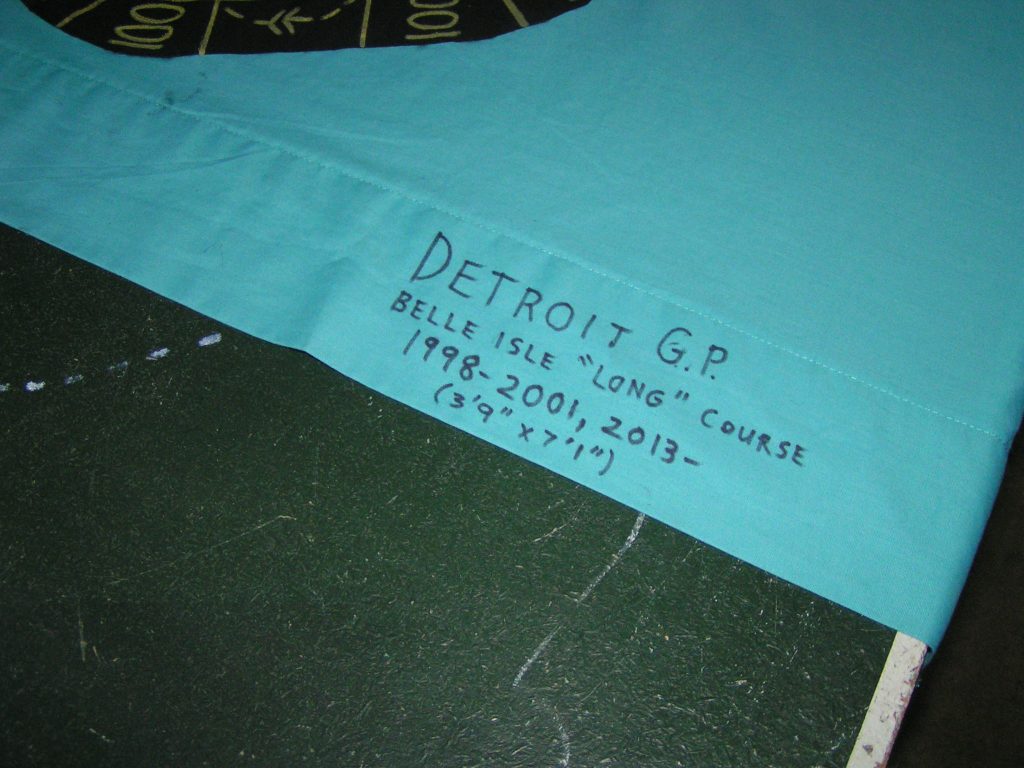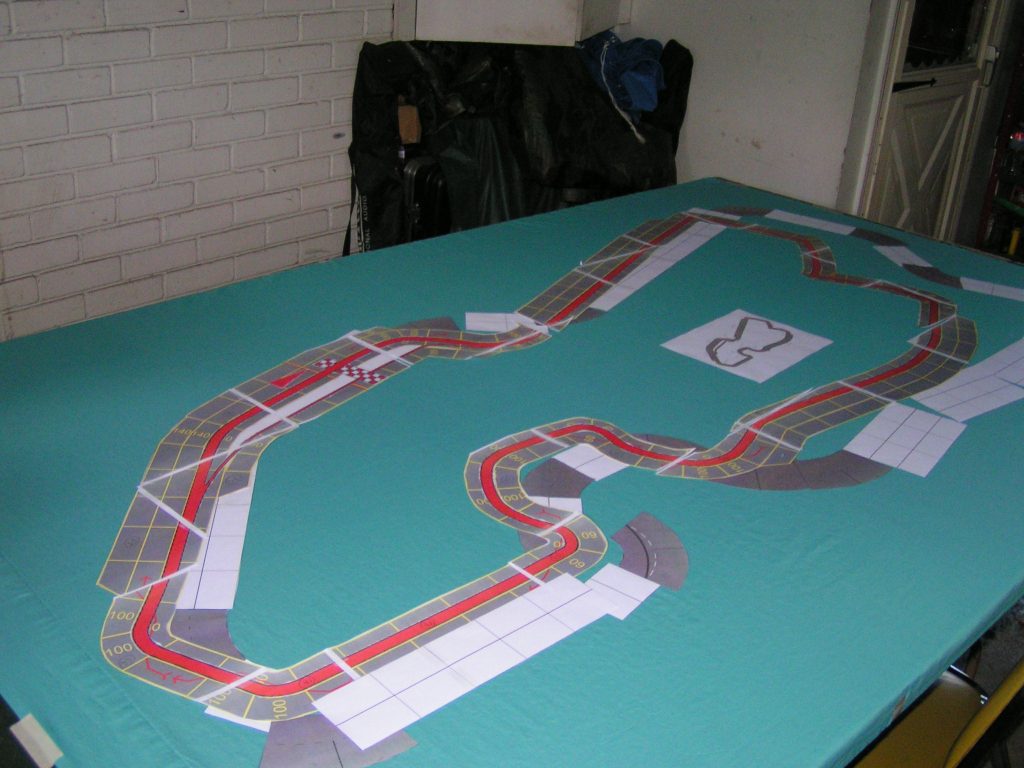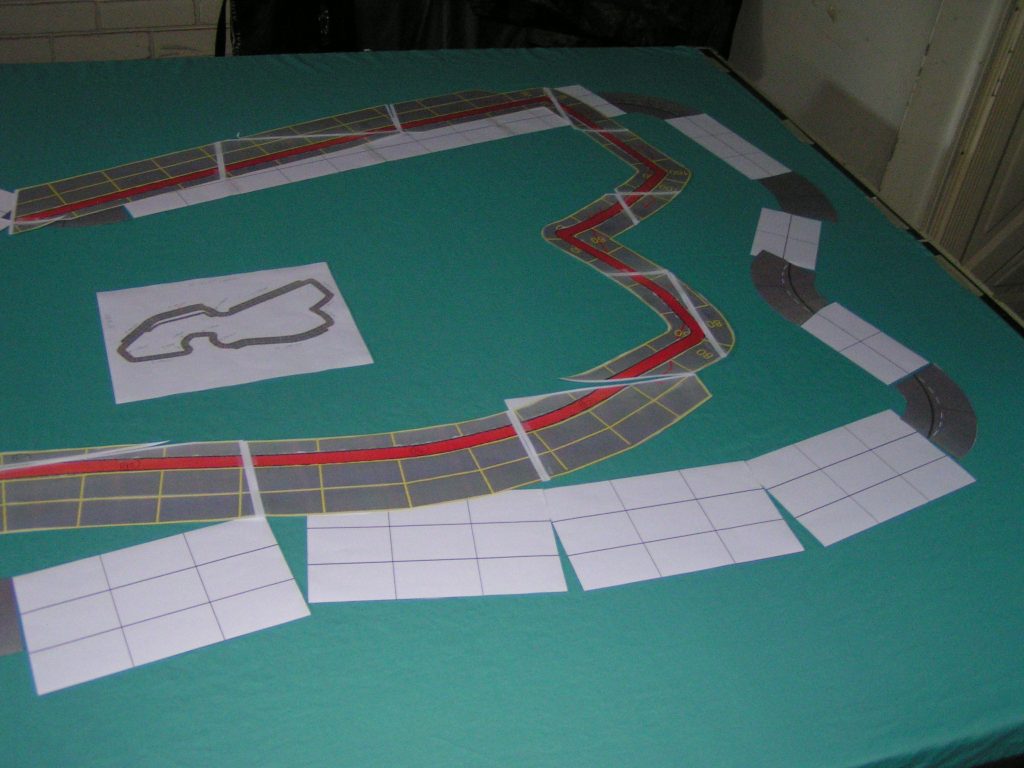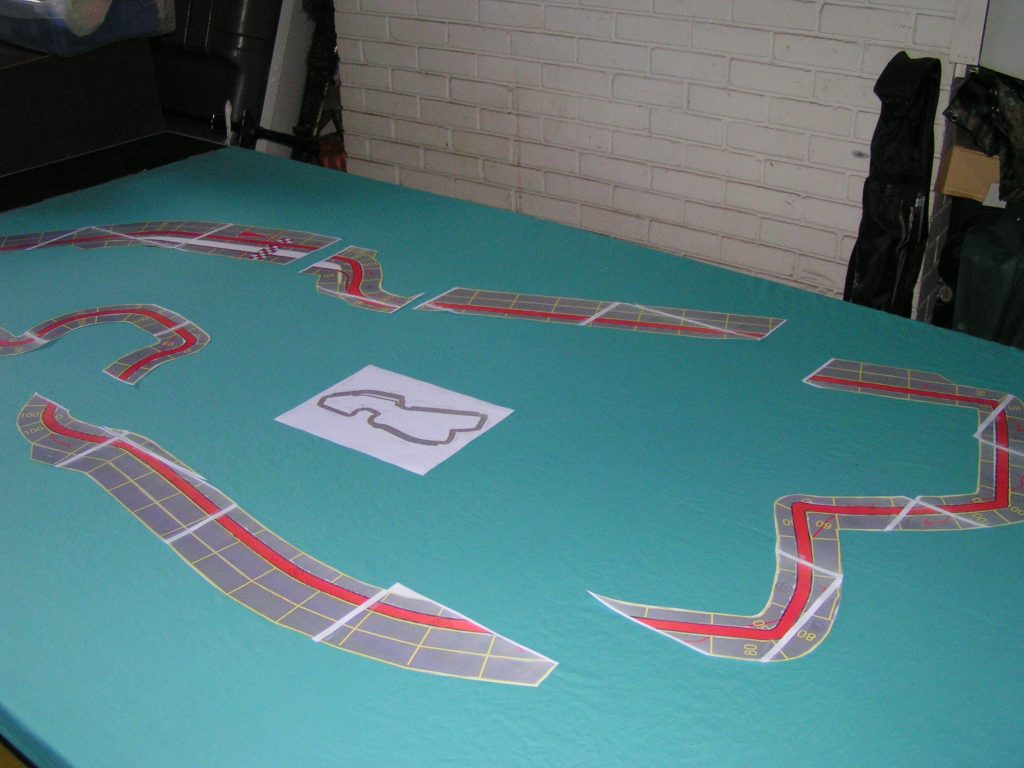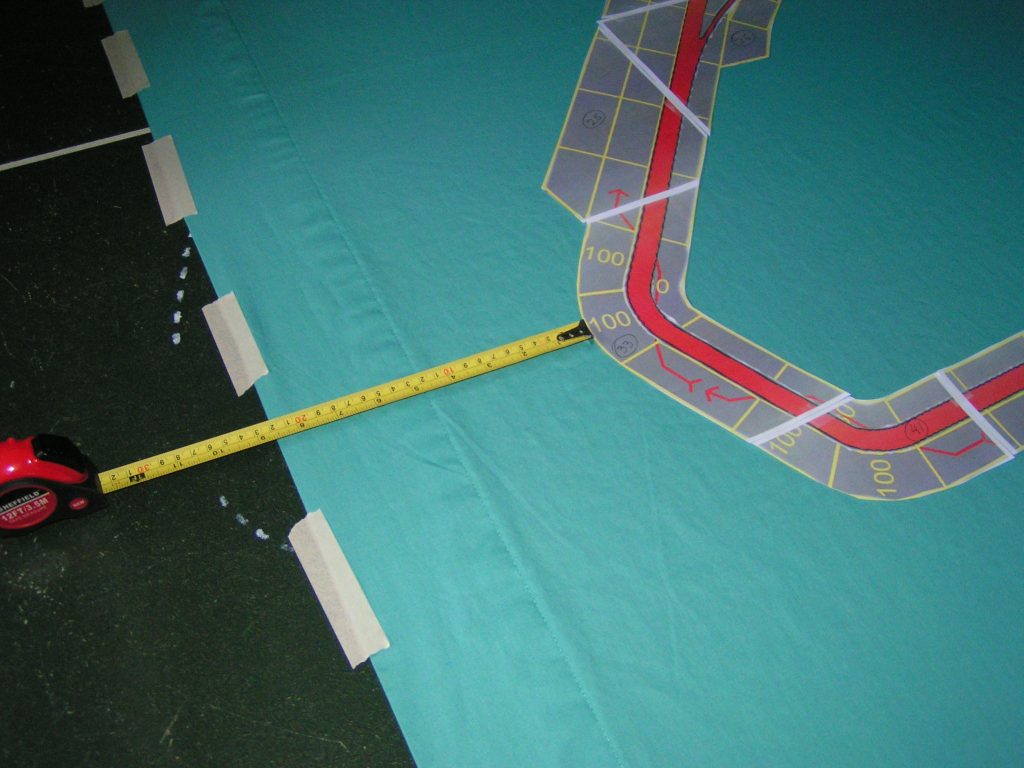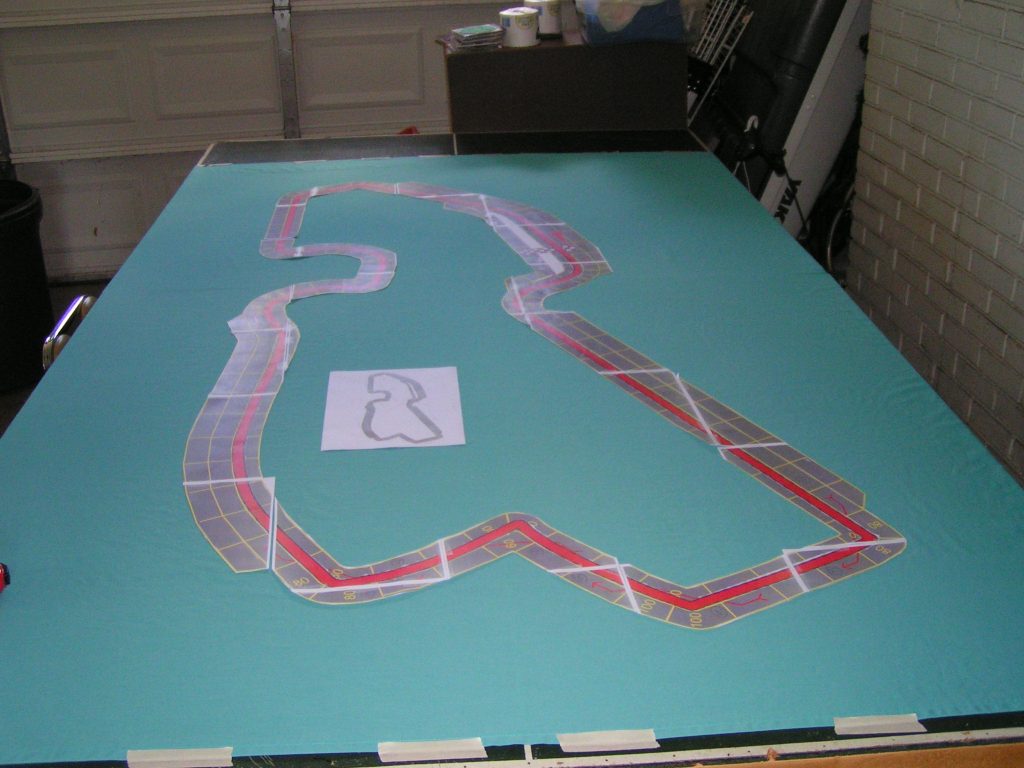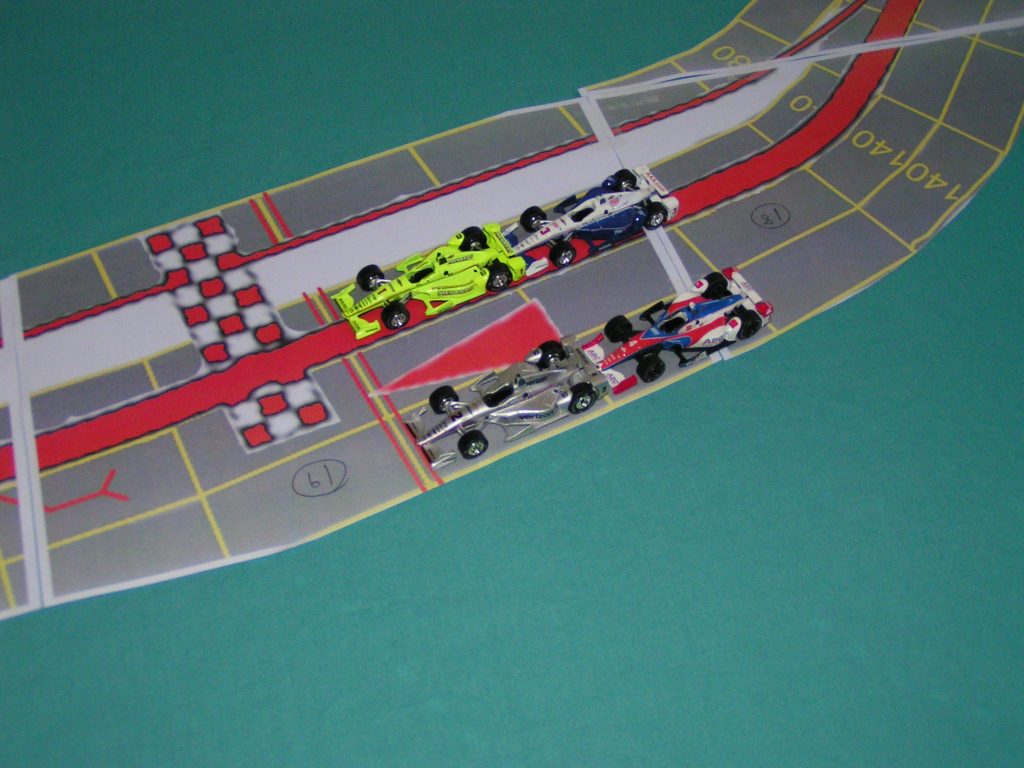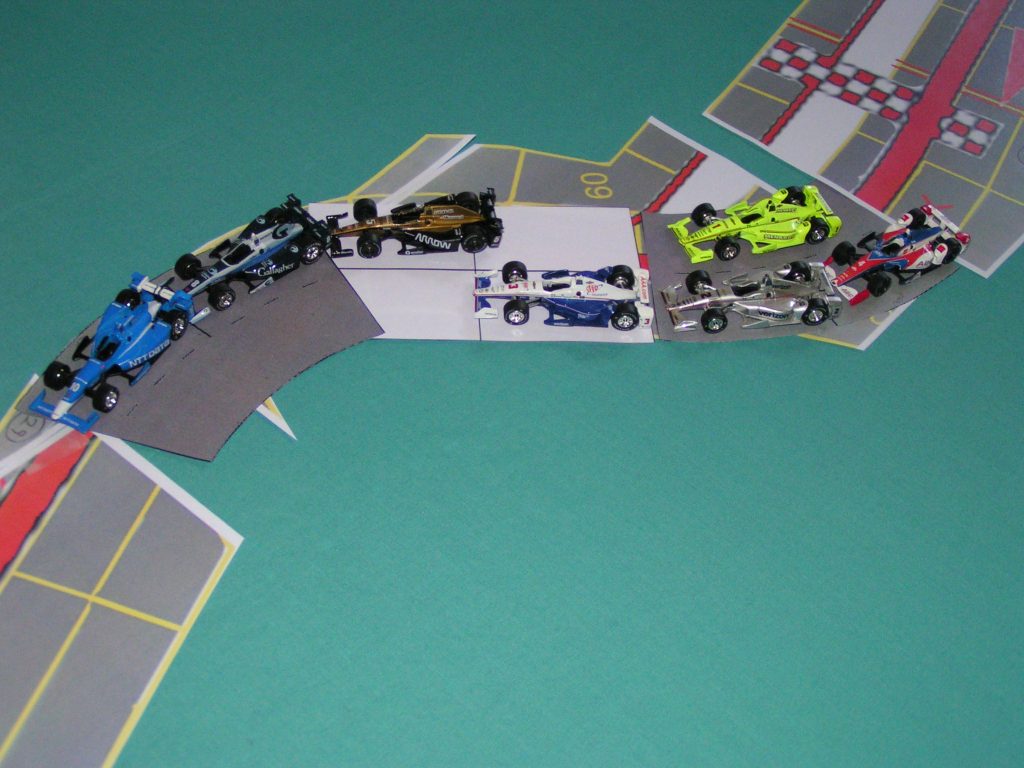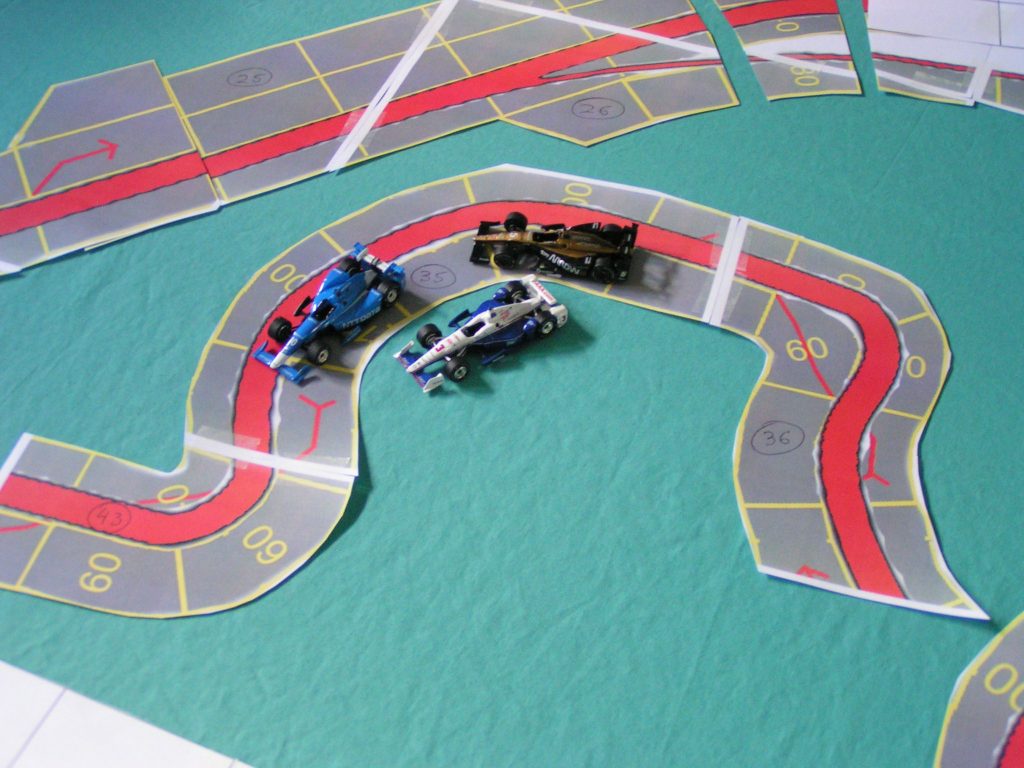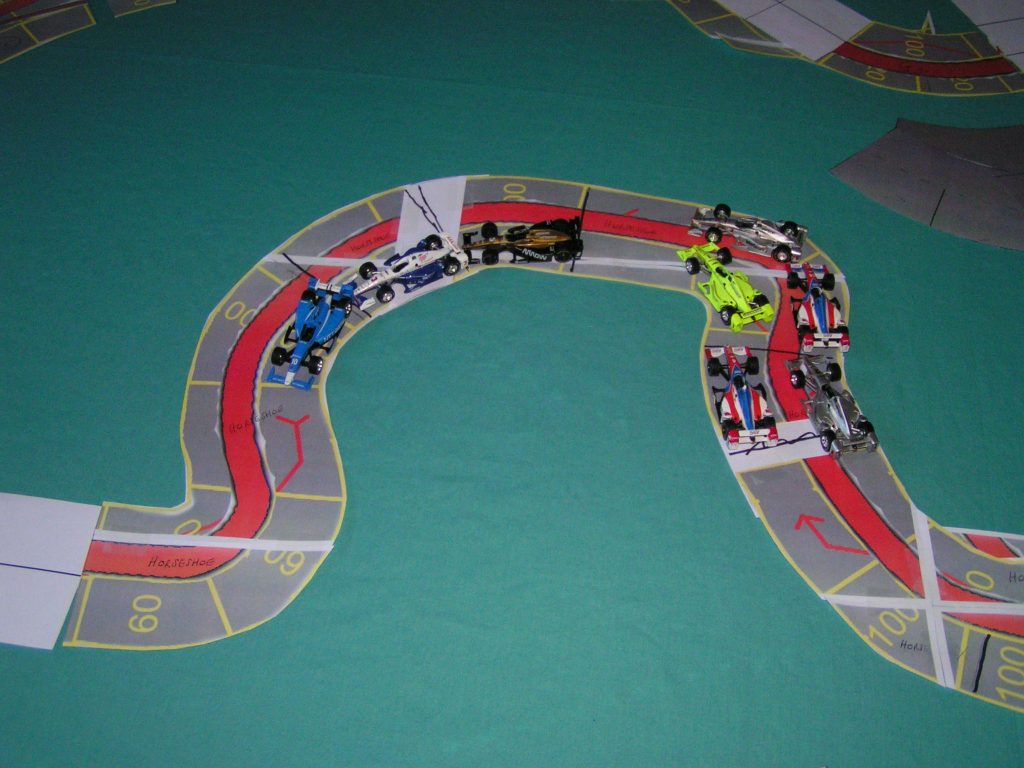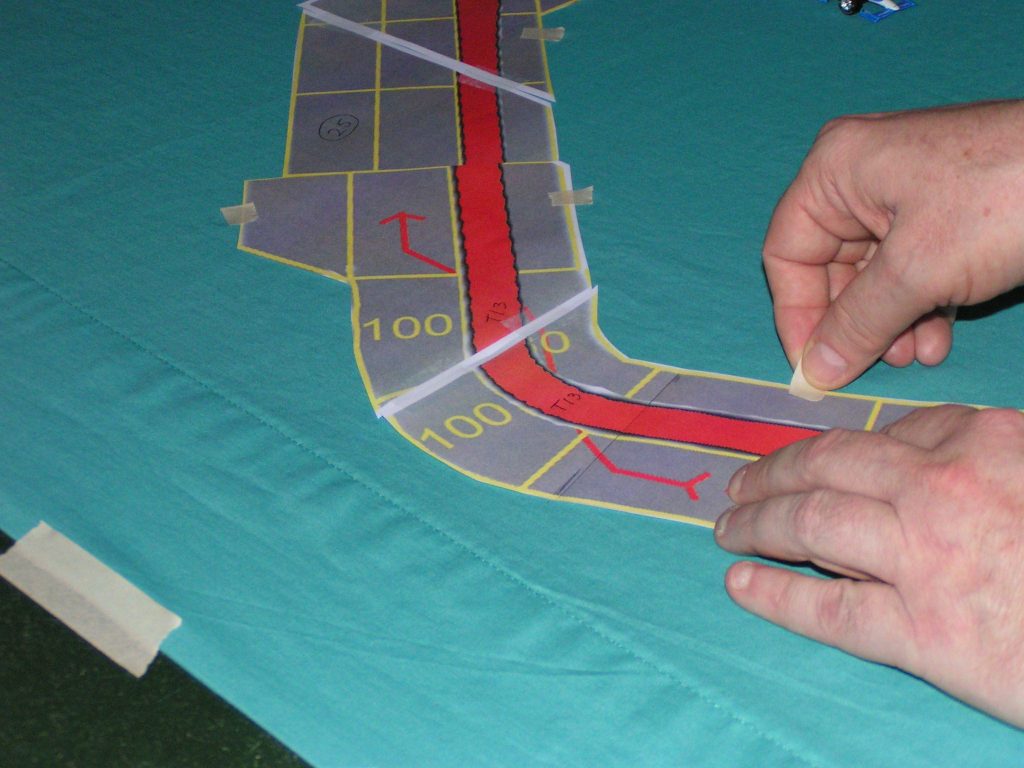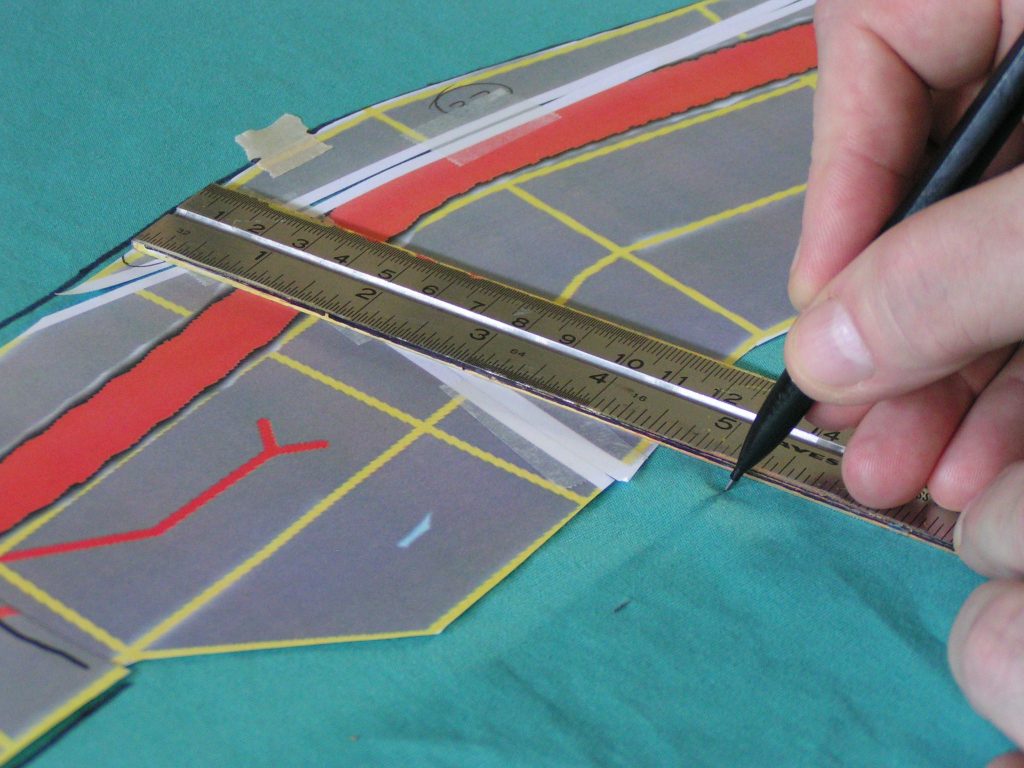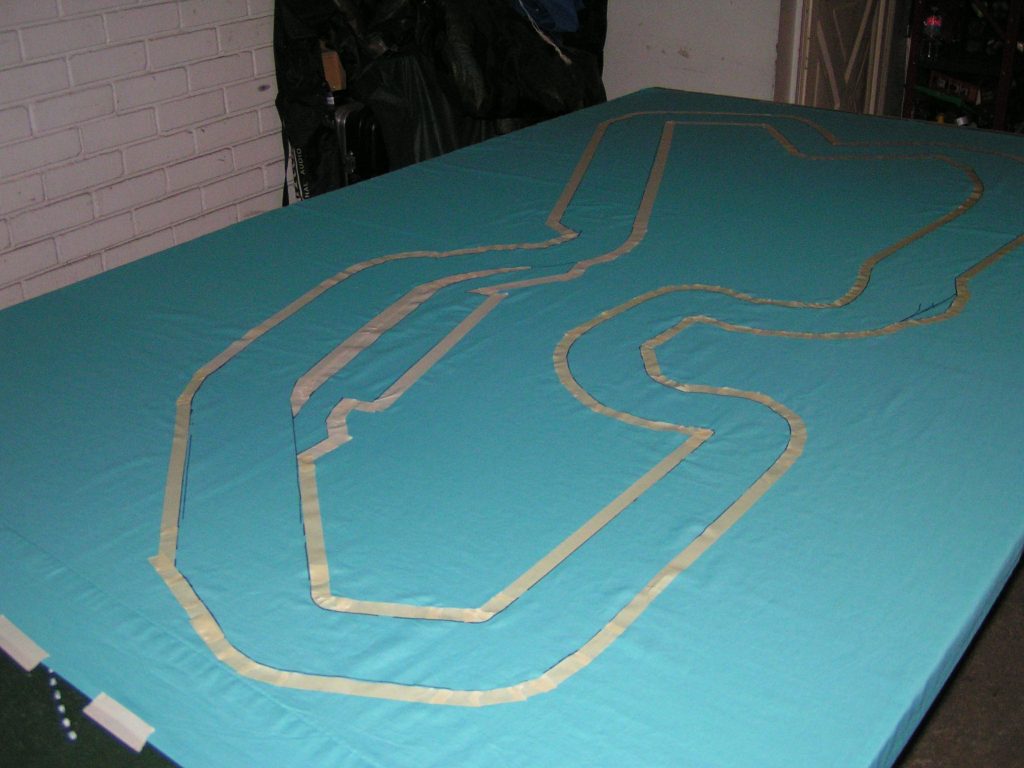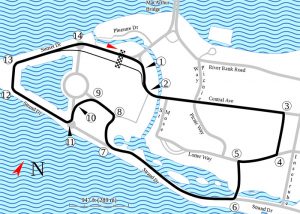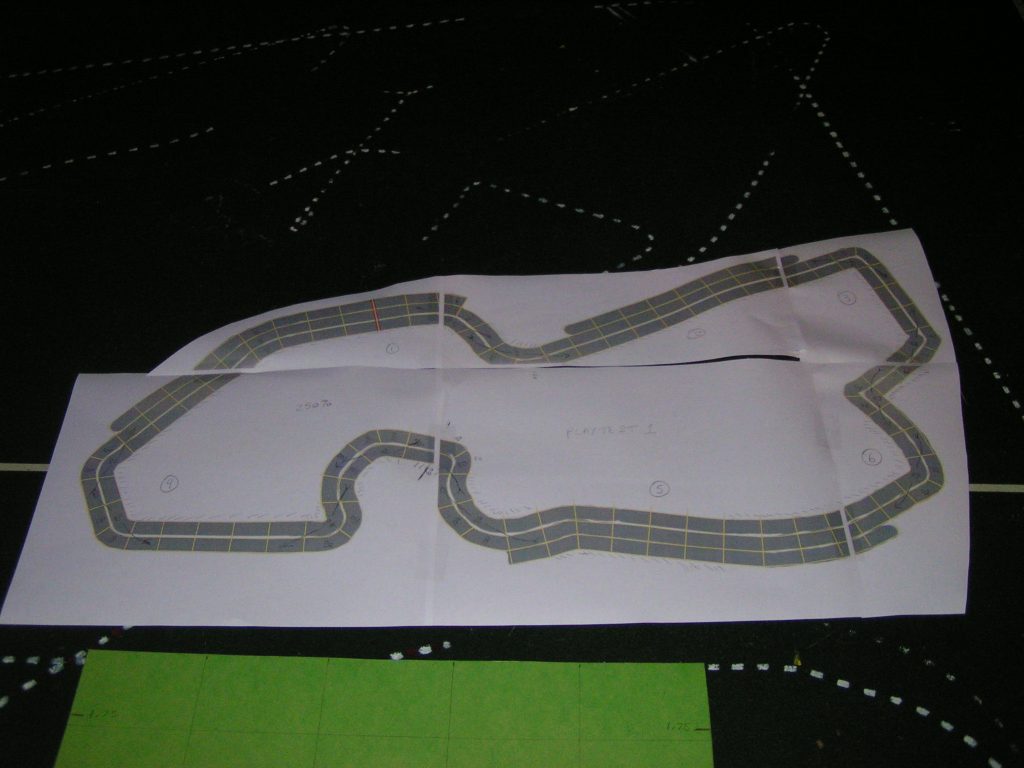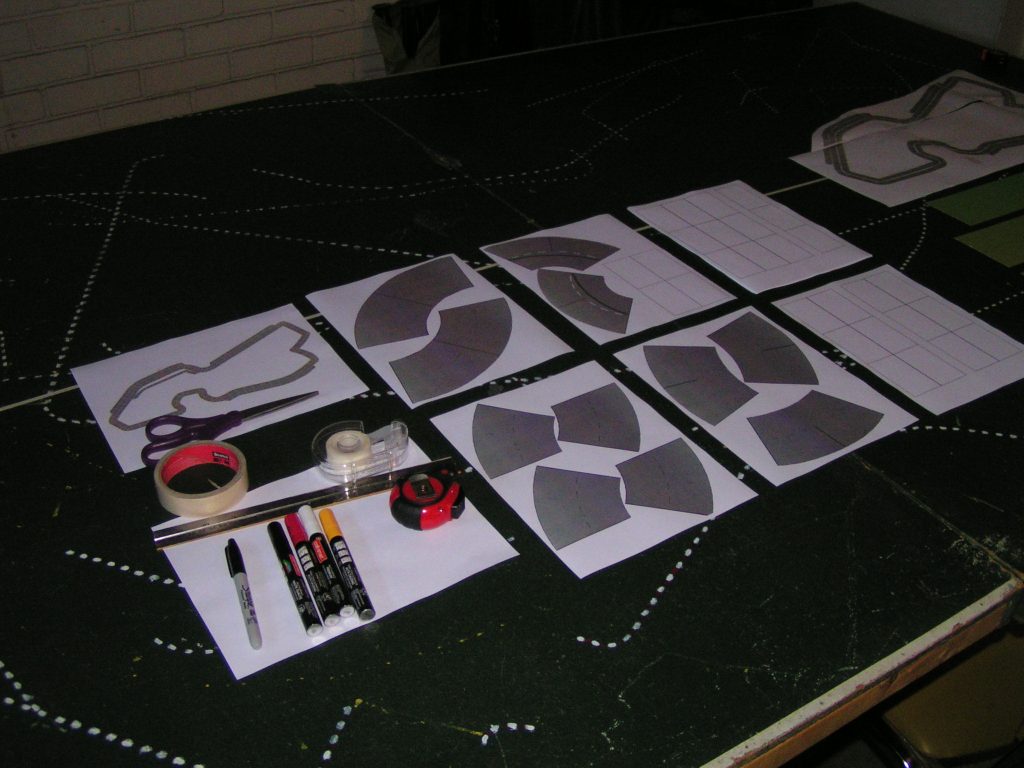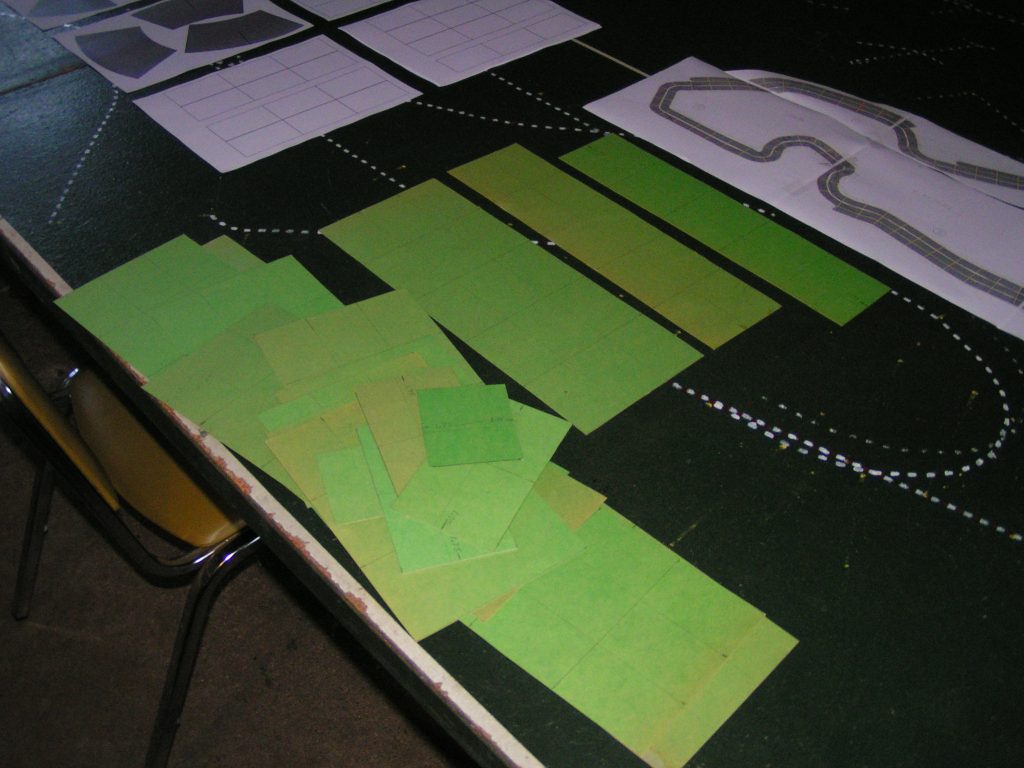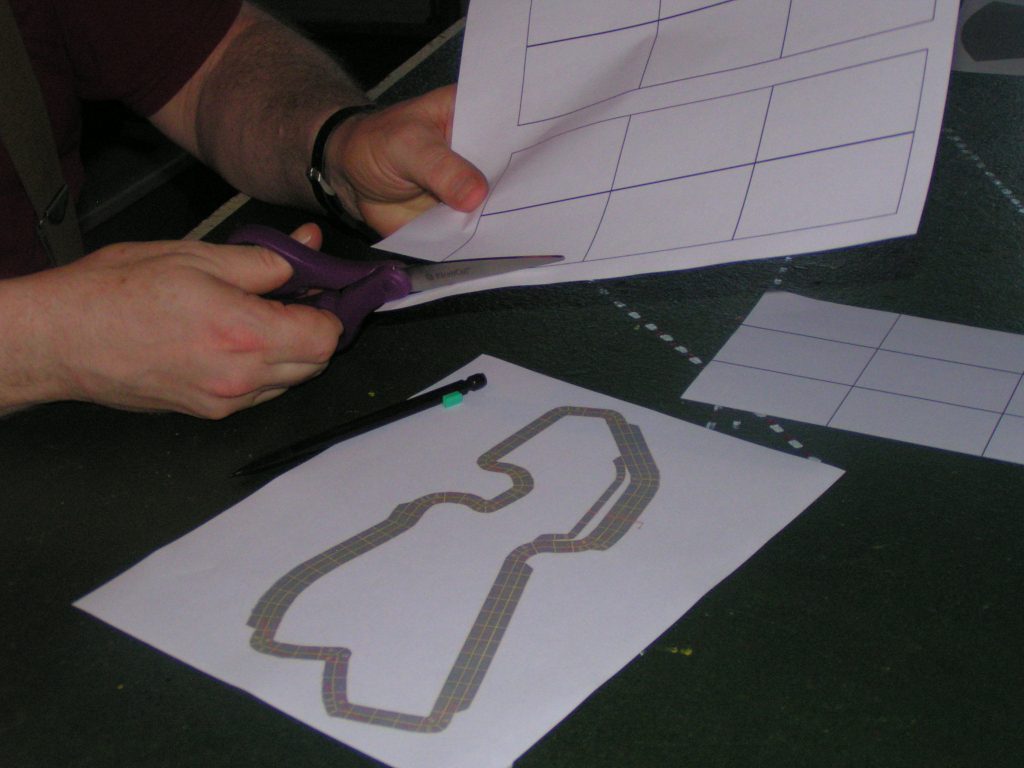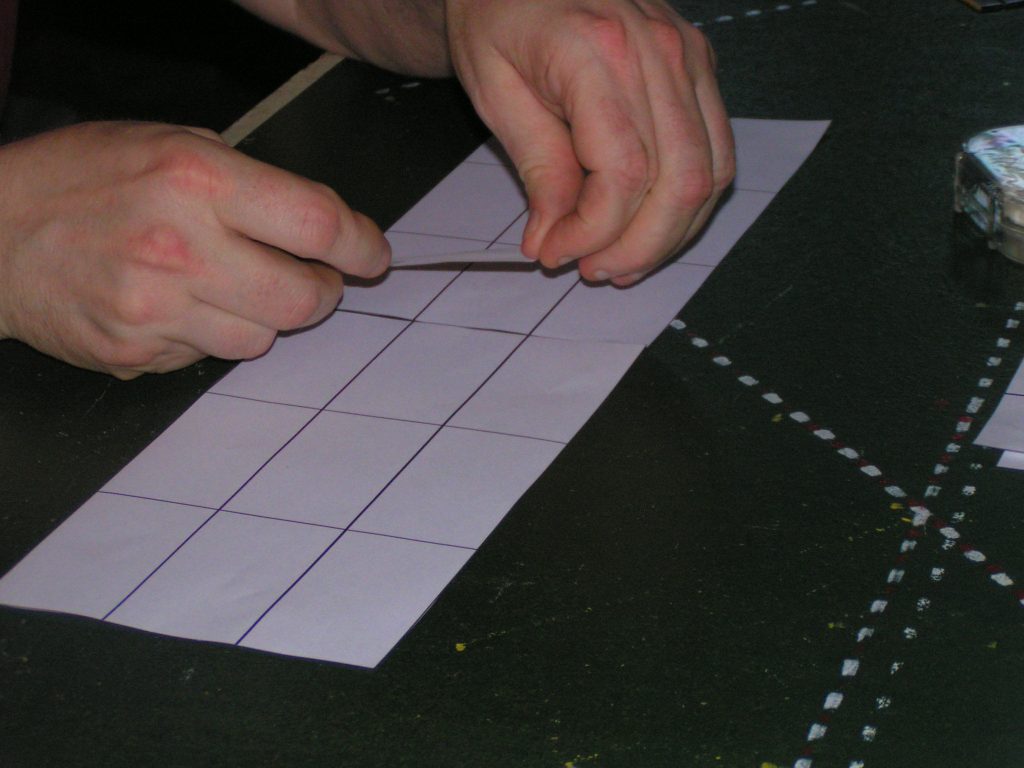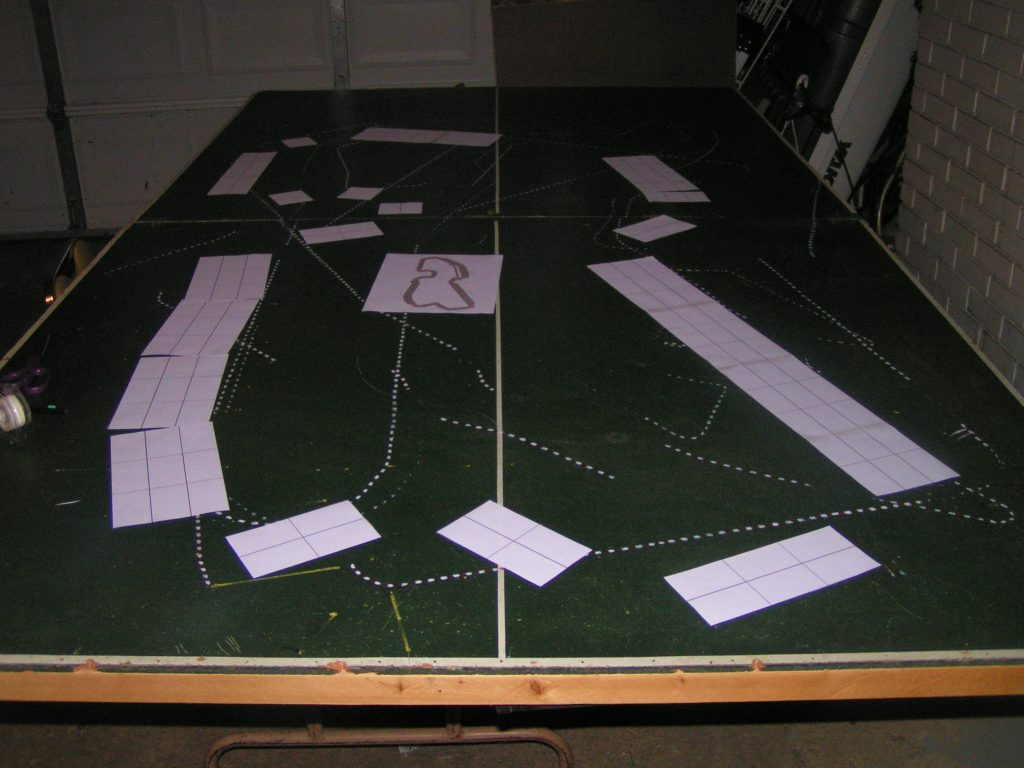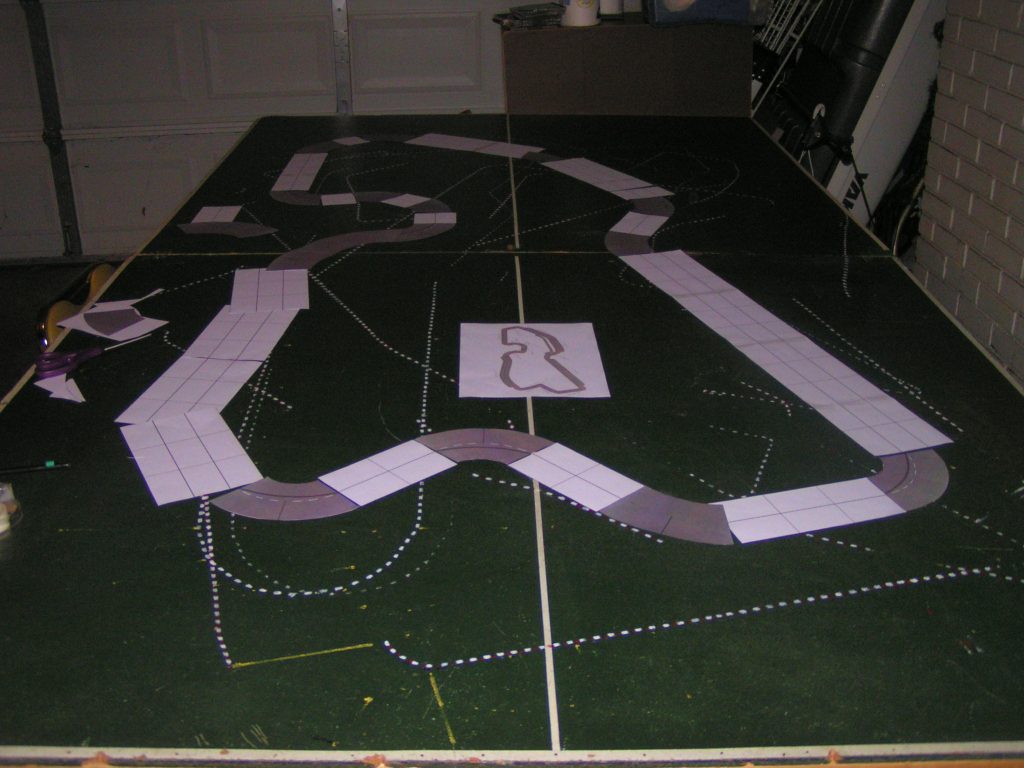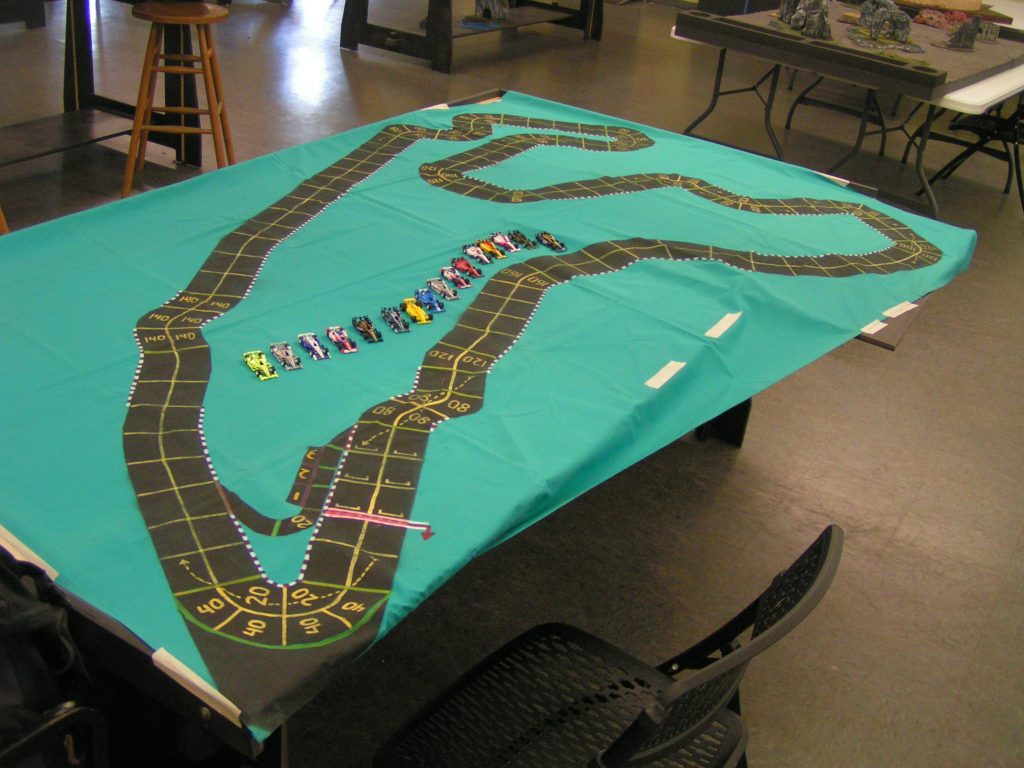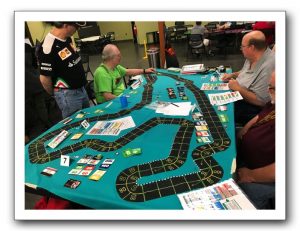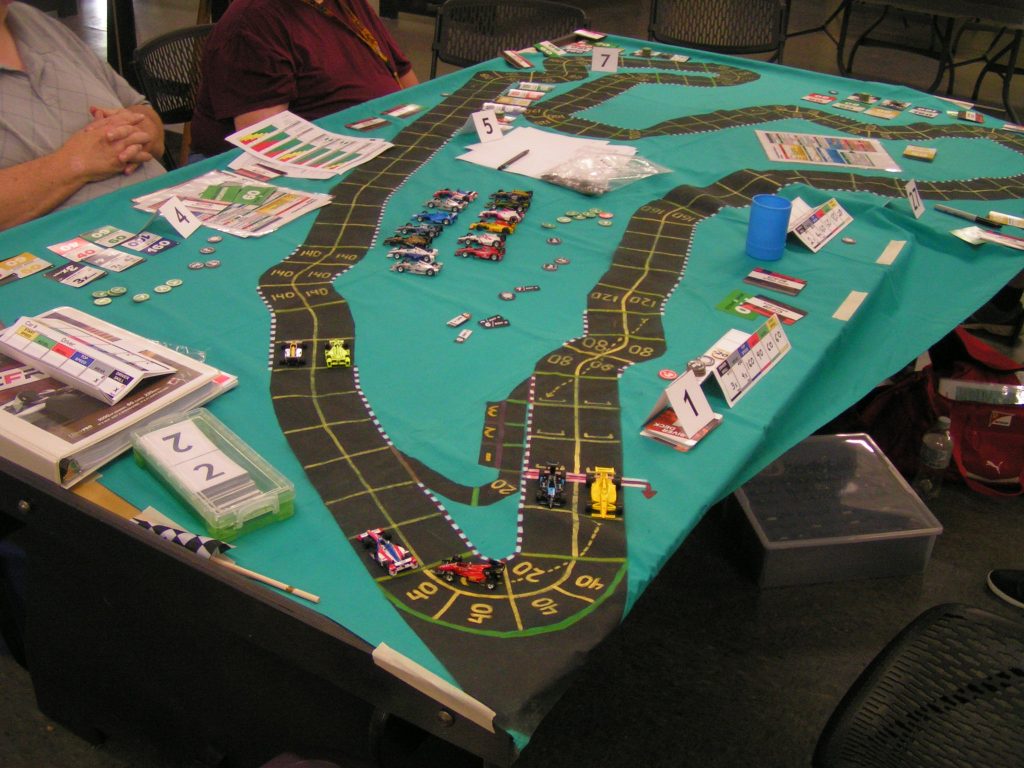January 12, 2018, saw 13 racers compete at the Detroit Grand Prix, racing on the old downtown Detroit track. The race was held at RIW Hobbies & Games in Livonia, Michigan. When the engines stopped revving, Gary Sturgeon had earned his first victory of the season, propelling him into 2nd place in the points standings. Other podium finishers were Jack Beckman (2nd) and Gary Kempen (3rd), aka Team Ferrari.
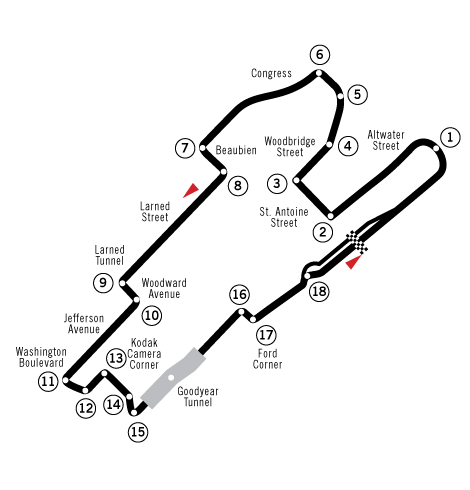
Downtown Detroit track used from 1983 through 1988.
When Avalon Hill was creating extra tracks for Speed Circuit in the 1980s, they created a downtown Detroit Grand Prix track based on the 1982 version of the track that had the hairpin at E. Jefferson Ave, but that track was not all that accurate. So, I (Garry Kaluzny) created a new track for Speed Circuit of the downtown Detroit circuit. Here is that track diagram:
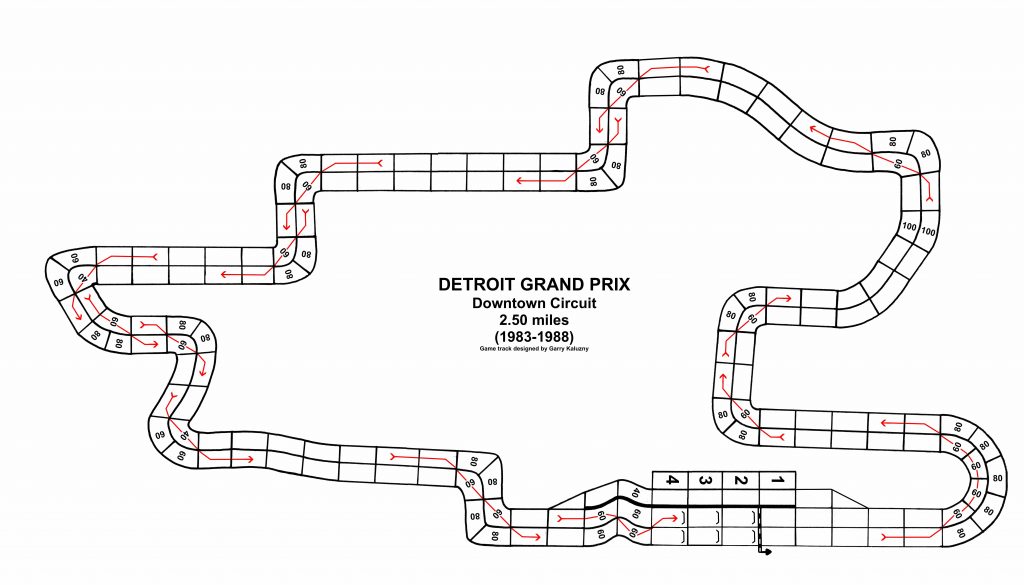
Downtown Detroit track suitable for use with Championship Formula Racing.
While the bidding for Pole Position at most previous races was rather conservative, most racers upped their qualifying bid quite a bit for this track, as everyone wanted to start up front! I was rather shocked, myself, as although I bid 2 Wear and 3 skill for a bid of 3.5, I started way back in the pack in 9th place (out of 13 starters). As a reminder to folks who are not familiar with the CFR board game bidding process, bidding 1 Wear counts as 1.0, bidding 1 Skill counts as 0.5. The entire bidding results:
Pole Position went to Jim Robinson, his first Pole of the season. Jim bid 2 Wear and 12 Skill (all of his -1 Skill markers!) for a bid of 8.0. Four drivers, Gary Sturgeon (0 Wear, 12 Skill), Jack Beckman (1 Wear, 10 Skill), Greg Lim (0 Wear, 12 Skill), and Mike Cook (2 Wear, 8 Skill), all bid 6.0. They then all rolled percentage dice, rolling 91, 73, 64, and 07, respectively, so Sturgeon was 2nd on the grid, Beckman was 3rd, Lim 4th, and Cook was 5th. Two drivers, Gary Kempen (2 Wear, 5 Skill) and Chad Marlett (3 Wear, 3 Skill) bid 4.5, with Kempen winning the percentage dice roll-off by 44 to 39, thus giving Kempen the 6th starting spot on the grid and relegating Marlett to 7th. Jim Landis slotted into the 8th starting spot with a bid of 4.0 (1 Wear and 6 Skill), and Garry Kaluzny grabbed 9th after bidding 3.5 (2 Wear and 3 Skill). 10th place went to Richard White with his bid of 3.0 (3 Wear and 0 Skill). 11th place was contested by identical bids of 2.5 by Mike Manderachia (2 Wear, 1 Skill) and Brian Robinson (0 Wear, 5 Skill), with Manderachia winning the roll-off by 93 to 90, thus placing Brian Robinson in 12th place. Newcomer Tim Gould started 13th with a bid of only 1.5 (1 Wear and 1 Skill).
The starting grid and their car stats:
# Driver (Car) Start/Accel/Decel/Top/Wear/Skill/Tires
2 Jim Robinson (Williams) 60 40 40 140 5x 4x soft
12 Gary Sturgeon (John Player Lotus) 60 40 40 140 5x 4x soft
3 Jack Beckman (Ferrari) 100 40 20 140 5x 4x hard
7 Greg Lim (Motorola) 60 40 40 140 5x 4x soft
11 Mike Cook (Camel Lotus) 100 40 40 140 5x 3x hard
4 Gary Kempen (Ferrari) 20 60 40 140 5x 4x soft
71 Chad Marlett (Red Bull) 60 60 60 140 4x 3x soft
20 Jim Landis (Benetton) 60 40 40 140 5x 4x soft
9 Garry Kaluzny (McLaren) 60 60 40 140 5x 3x hard
1 Richard White (Brabham) 60 60 40 140 5x 3x soft
25 Mike Manderachia (Ligier) 60 60 40 140 5x 3x soft
5 Brian Robinson (Walker Racing) 20 80 40 140 5x 3x soft
10 Tim Gould (McLaren) 60 60 40 140 5x 3x soft
Start = Start Speed (in miles/hour); Accel = Acceleration (in mph); Decel = Deceleration (in mph); Top = Top Speed (in mph); Wear = # of Wear markers per lap raced; Skill = # of Skill markers per lap raced; Tires = hard or soft tires to begin the race. (Since the race was 3 laps, a car with 5x of Wear would receive 15 Wear markers to start the race (as an example).)
It was nice to have Mike Manderachia race with us. Although this was his first race using the Championship Formula Racing rules, Mike used to race with us using the Advanced Speed Circuit rules back in the late 1980s. We also had newcomer Tim Gould in his first race, and Gary Kempen and Chad Marlett were in only their 2nd races.
It was interesting that two cars (Beckman and Cook) opted for a 100 mph Start Speed, while two others (Kempen and B. Robinson) chose 20 mph as their Start Speed. All drivers went with a 140 mph Top Speed (taking a point out of that characteristic so they could use it elsewhere) since Detroit only has one place where a car could conceivably go 160 mph (and probably wouldn’t get the chance if it was in traffic), and all drivers but one (Marlett) went with the maximum Wear of 5x, meaning they would start with 5 x 3 Wear = 15 Wear to start the race (minus any Wear they used in bidding for starting position).
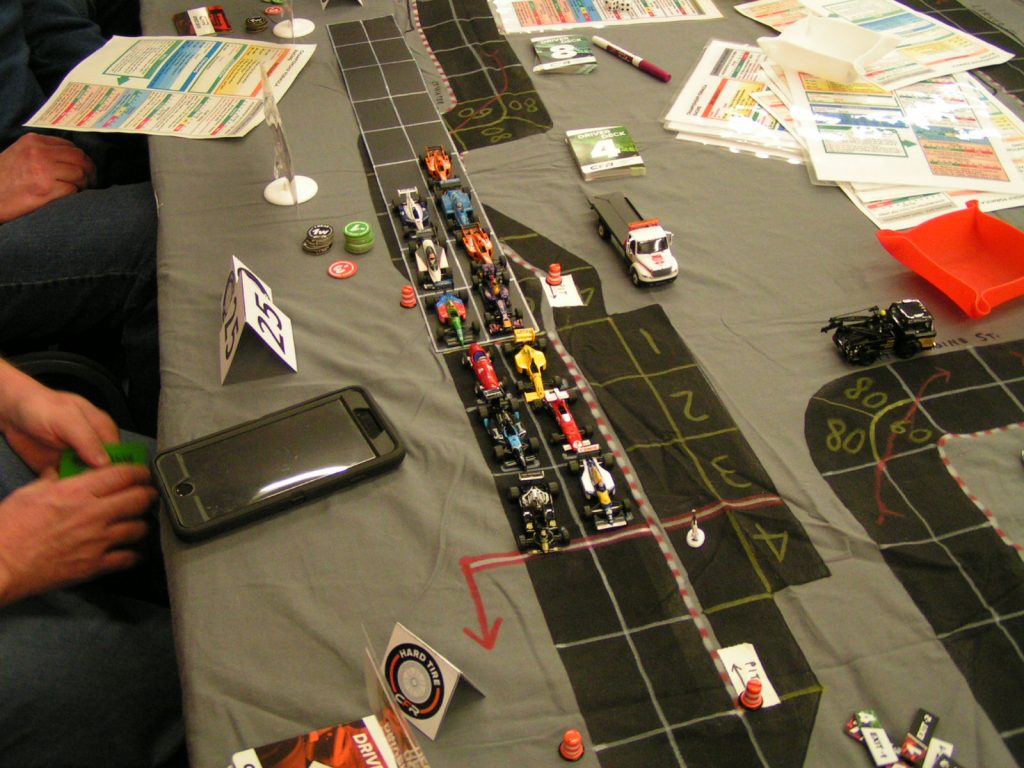
The starting grid for the Detroit Grand Prix: Jim Robinson (white/yellow/blue Williams) is to the inside of the track, Gary Sturgeon (black John Player Lotus) is to the outside.
When the green flag dropped to start the race, the front row cars of J. Robinson and Sturgeon both boosted their Start Speed to 80 mph, both using wear since they were both on soft tires. As Jim Robinson was to the inside of the track on the starting grid, he moved first, opting to take the cornering arrow for the first turn, thus allowing Sturgeon to take the inside position (and the lead). Beckman’s 100 mph start availed him nought, as he had to brake down to 80 mph to stay behind the two leaders. (Note: If Beckman had pushed his start speed to 120 mph, he could have attempted a forced pass and could possibly have taken the lead.) Greg Lim also boosted his Start Speed of 60 mph t0 80 mph by using a wear. Mike Cook also had to slow to 80 mph from his Start Speed of 100. The top five cars had now opened a two-space gap over the rest of the field. In the back pack, both Landis and White were balked and had to forced decelerate from 60 to 40 mph.
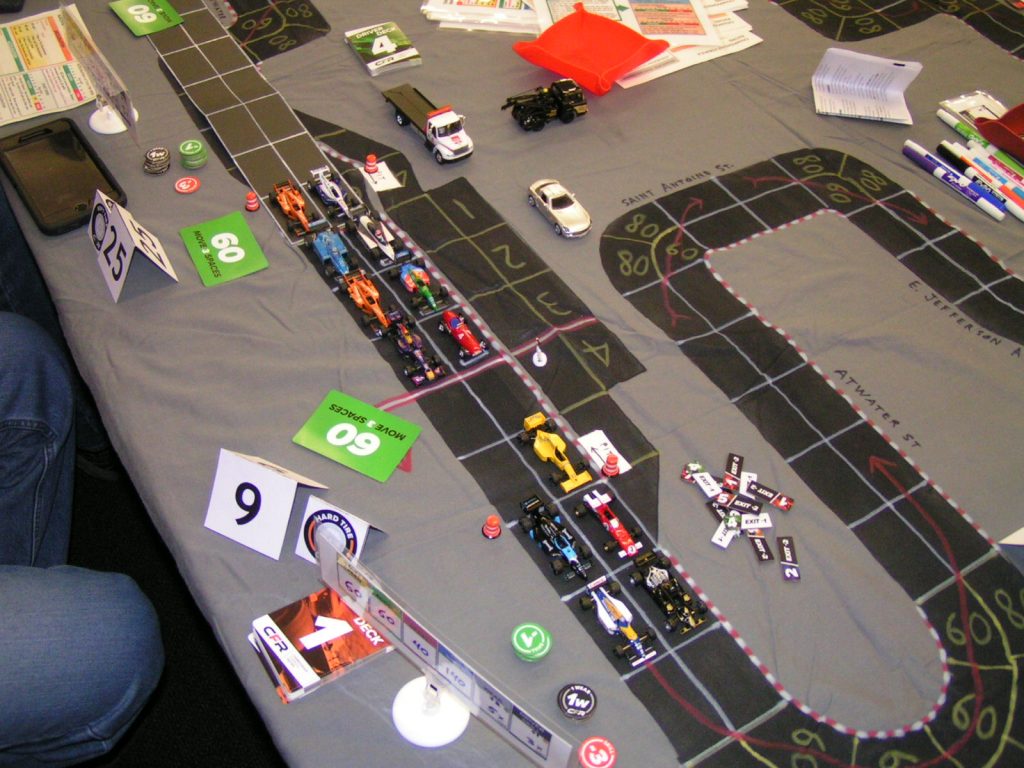
Roaring off at the start of the Detroit G.P. Sturgeon (black car) has taken the lead from J. Robinson. Then Beckman, Lim, and Cook are close behind the leaders. The 2nd pack is Kempen, Marlett, Landis, Kaluzny, White, Manderachia, B. Robinson, and Gould.
On the 2nd move, Sturgeon plotted 120 mph and went around the outside of the 1st turn. J. Robinson plotted 100 mph and stayed to the inside (thus retaking the lead). Both cars were ready to exit that corner. Lim was right behind J. Robinson’s tailpipe, while Beckman was right behind Sturgeon. Cook had moved just 80 mph (4 spaces on the track) and had just entered the corner. Then came the rest of the field, with B. Robinson lagging back a bit, just to see how things would sort out at this first corner.
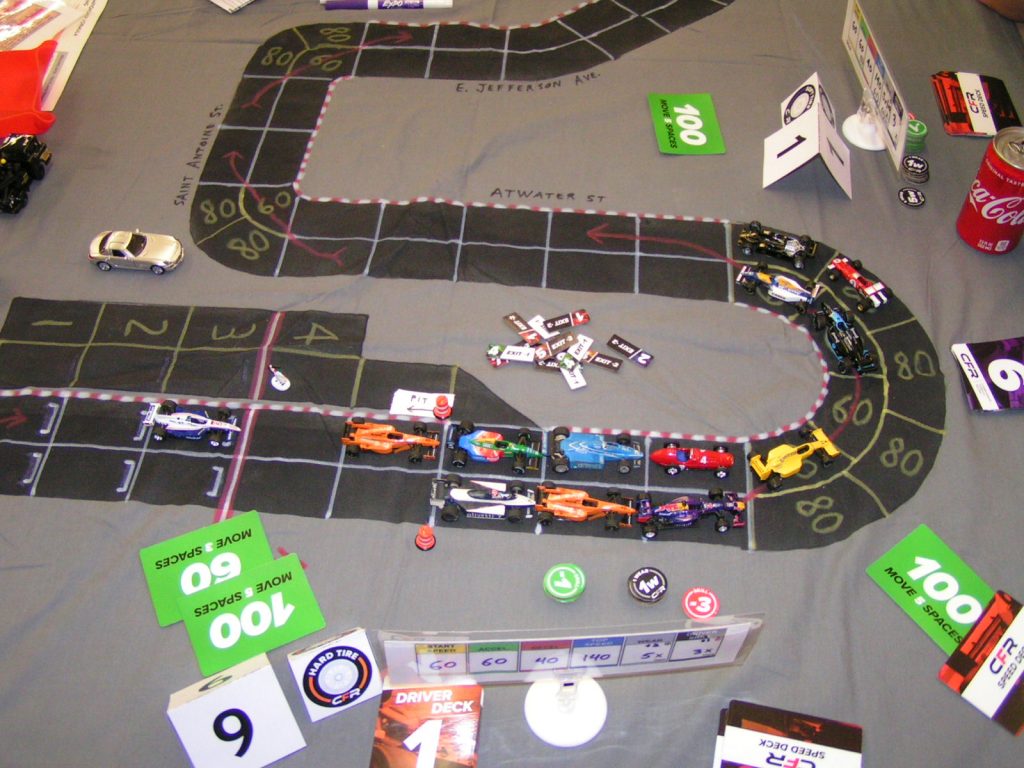
Through the 1st corner, the running order is: J. Robinson; Sturgeon; Beckman; Lim; Cook; Kempen; Marlett; Manderachia (up 3 positions); Kaluzny; Landis (down 2 positions); White; Gould, and B. Robinson.
The pack roared down Atwater Street, then turned right onto Saint Antoine, turned right again onto E. Jefferson Ave., then followed the lazy left-hand curve onto Chrysler Drive, which is the service drive for the I-375 expressway. Then a sharp left-hand turn onto E. Congress Street came next. At the sharp left hand turn onto Beaubien, Sturgeon (+1) narrowly led Jim Robinson (-1). Then came Beckman (0), Cook (+1), Marlett (+2), Lim (-2), Kempen (-1), Manderachia (+3), Landis (-1), Kaluzny (-1), Gould (+2), White (-2), and Brian Robinson (-1). The +/- indicates how many positions a driver has gained (+) or lost (-) from their qualifying position.
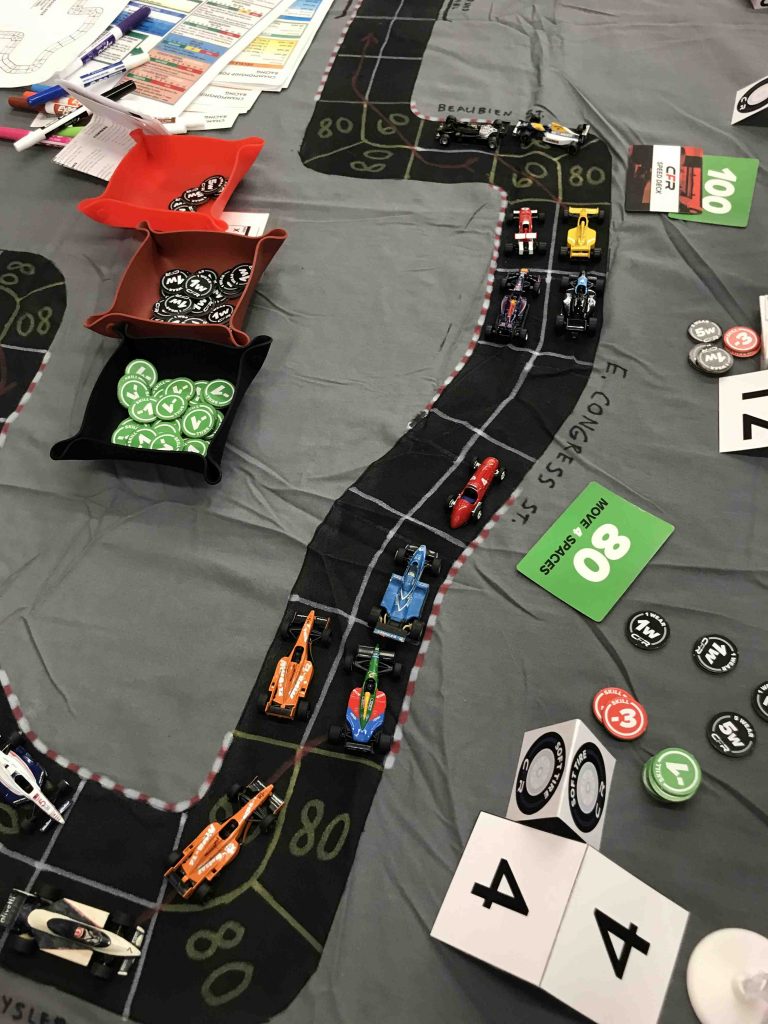
Rolling down Congress St. and turning left at Beaubien St. for the 1st time. (Greg Lim photo)
After the left turn onto Beaubien came a right turn onto Larned St. Coming out of that corner, Jim Robinson regained the lead from Sturgeon. Then after a short straight, there was a left onto Woodward Avenue followed by a right onto W. Jefferson Ave. Just at the turn onto W. Jefferson, Beckman and Cook had got right up with J. Robinson and Sturgeon. Manderachia was up to 5th place, having gained 6 positions since the start of the race.
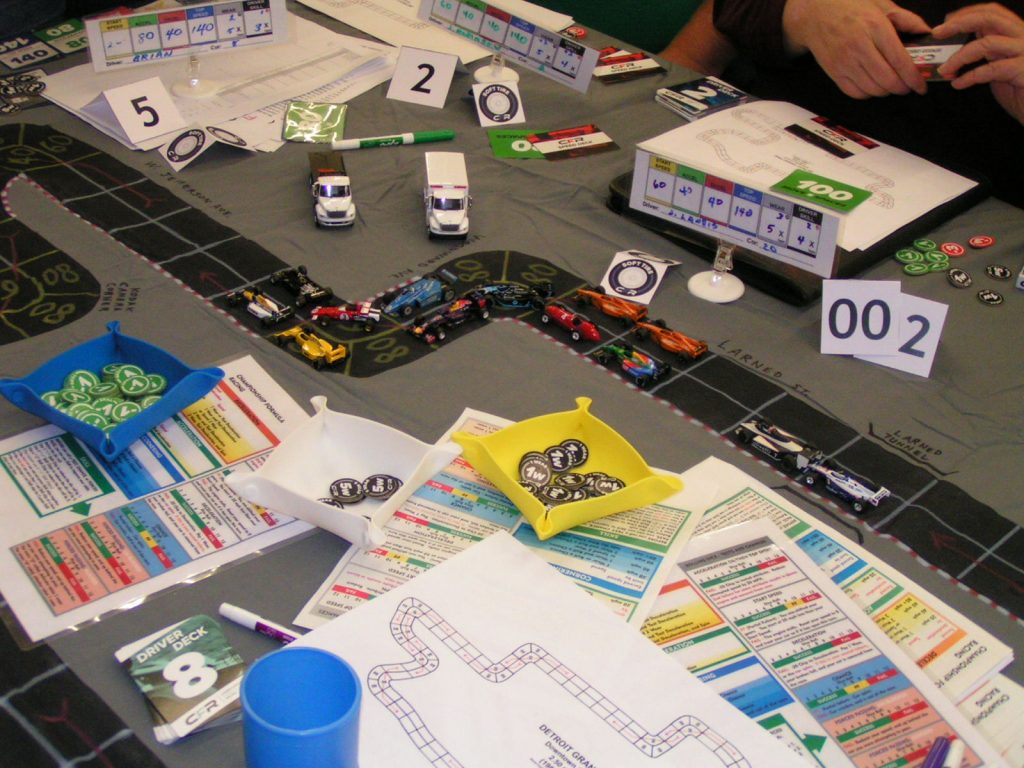
Turning onto W. Jefferson. The pack has bunched up.
The pack raced down the short straight on West Jefferson, passing the Pontchartrain Hotel on their right just before making a sharp left turn onto Washington Boulevard right in front of Cobo Hall (before it was renamed Cobo Center). They raced down the steep incline around Cobo Arena, then turned right at the more than 90-degree Kodak Camera Corner, followed quickly by a hard left turn onto Atwater. Into the Goodyear Tunnel under Hart Plaza for the first time, it was Sturgeon with a two-space lead over Jim Robinson. Then came Cook in 3rd, Beckman in 4th, then Manderachia, Marlett, Kempen, Landis, Kaluzny, Lim, Gould, White, and Brian Robinson.
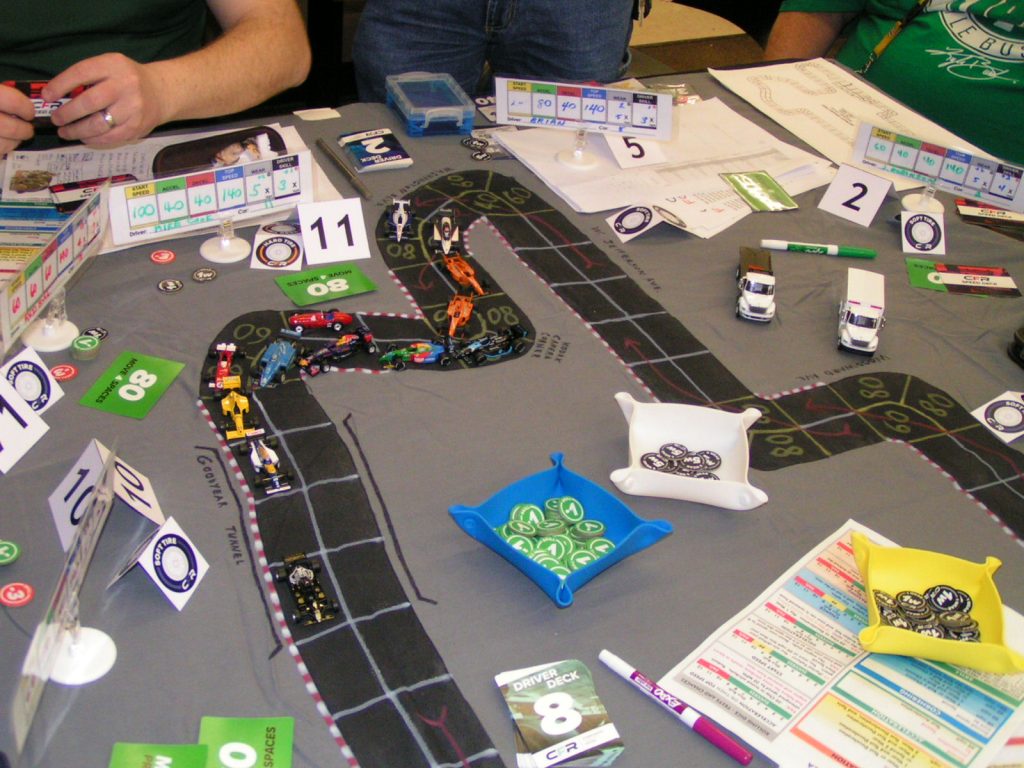
Through the Goodyear Tunnel, Sturgeon leads the pack.
Coming out of the Goodyear Tunnel, Sturgeon led the pack through the right-left Ford Corner, then Sturgeon was the first to pull into the pits. He was quickly followed by J. Robinson, Kempen, Manderachia, Landis, Marlett, and Gould. All of those cars switched from soft to hard tires.
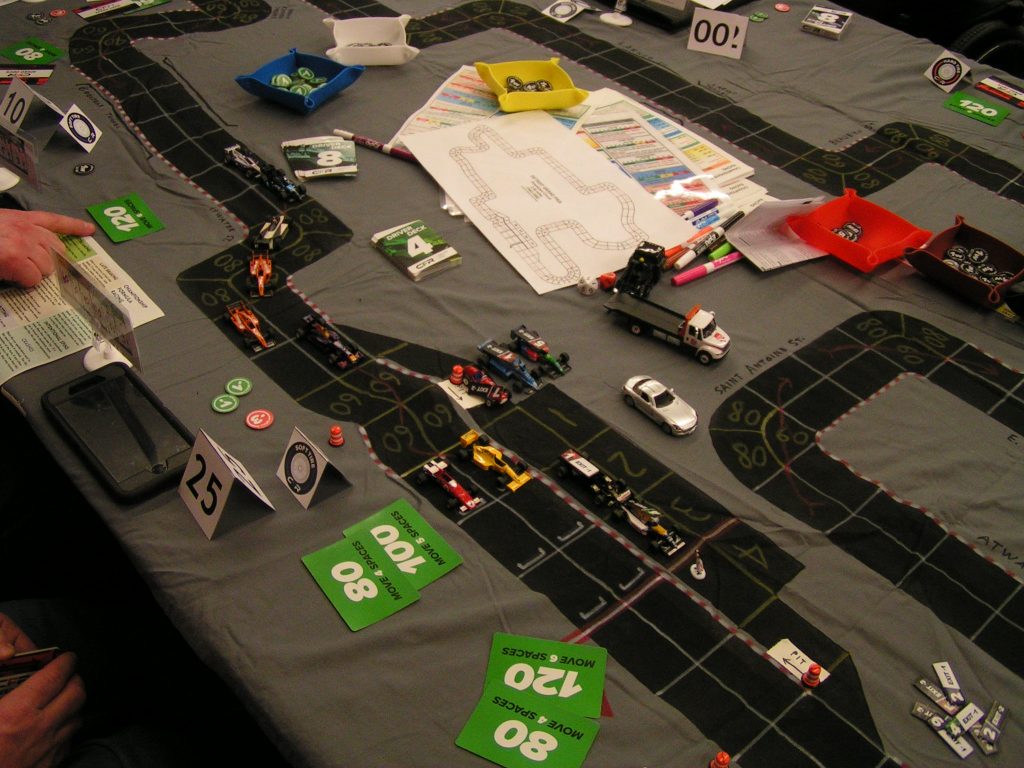
The 1st pit stops are under way. Although Sturgeon pulled into the pits first, technically Jim Robinson leads the first lap as his car’s nose is on the start/finish line.
A couple of turns after the leaders, the cars of Lim, White, and B. Robinson also pitted to switch from soft to hard tires. Cars not pitting were those of Beckman, Cook, and Kaluzny. The official order after one lap was: Jim Robinson (0); Beckman (+1); Cook (+2); Kaluzny (+5); Sturgeon (-3); Brian Robinson (+6); Lim (-3); Kempen (-2); Manderachia (+2); Landis (-2); Marlett (-4); Gould (+1); and White (-3). However, the running order after the pit stops at the end of the 1st lap were all completed was: Beckman, Cook, Sturgeon, J. Robinson, Kaluzny, Kempen, Manderachia, Landis, Marlett, Gould, B. Robinson, White, and Lim.
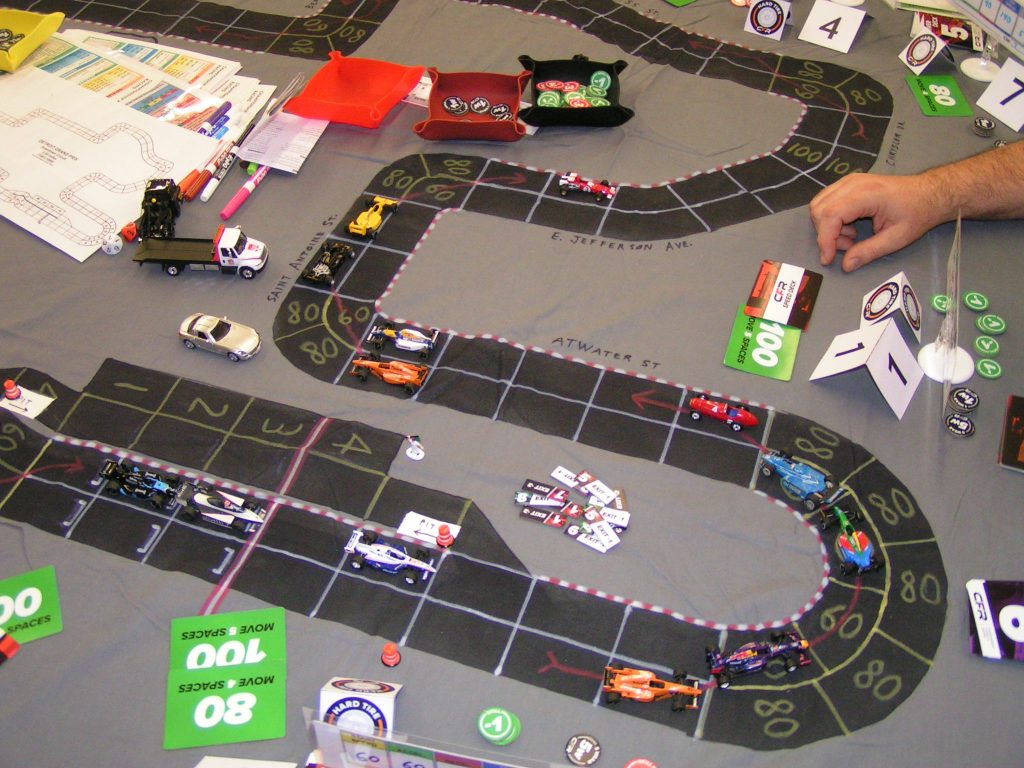
Running order after 1st pit stops: Beckman in the red Ferrari leads from Cook in the yellow Lotus.
During the 2nd lap, the pack got stretched out after the pit stops. Beckman continued to lead for about a half lap, and then Cook took the lead on Larned St.

Cook passes Beckman on Larned St. Faces pictured: Tim Gould (at left); Jim Robinson (green shirt); Jim Landis (burgundy shirt); and Gary Sturgeon (gray shirt).
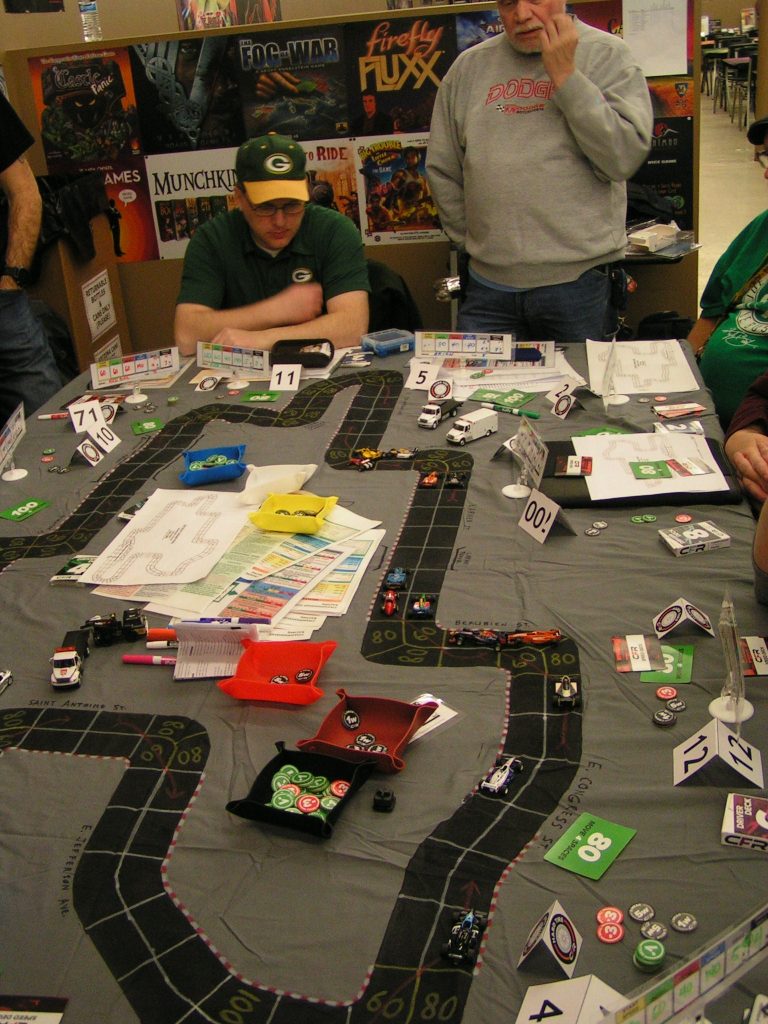
Cook (in the Green Bay cap and shirt) enjoys his lead over Beckman and the rest of the pack. Brian Robinson (Dodge sweatshirt) stands next to Cook.
But Beckman fought back going through the Kodak Camera Corner and through the left-hand corner leading into the Goodyear Tunnel, and retook the lead.

Gamers take their racing seriously! Pictured, from left: Mike Manderachia; Tim Gould; Chad Marlett (standing); Mike Cook; Brian Robinson.
Beckman led through the Ford Corner and then into the pits where he was joined by Cook and Jim Robinson. J. Robinson was pitting for the 2nd time in the race. Garry Kaluzny was feeling frustrated that he couldn’t make it into the pits on the same turn, and his ending up two spaces short of being able to pit on the same turn with the leaders cost him, as when he did finally come out of the pits, the rest of the pack swallowed him up. Those four drivers all switched from hard to soft tires for the final lap.
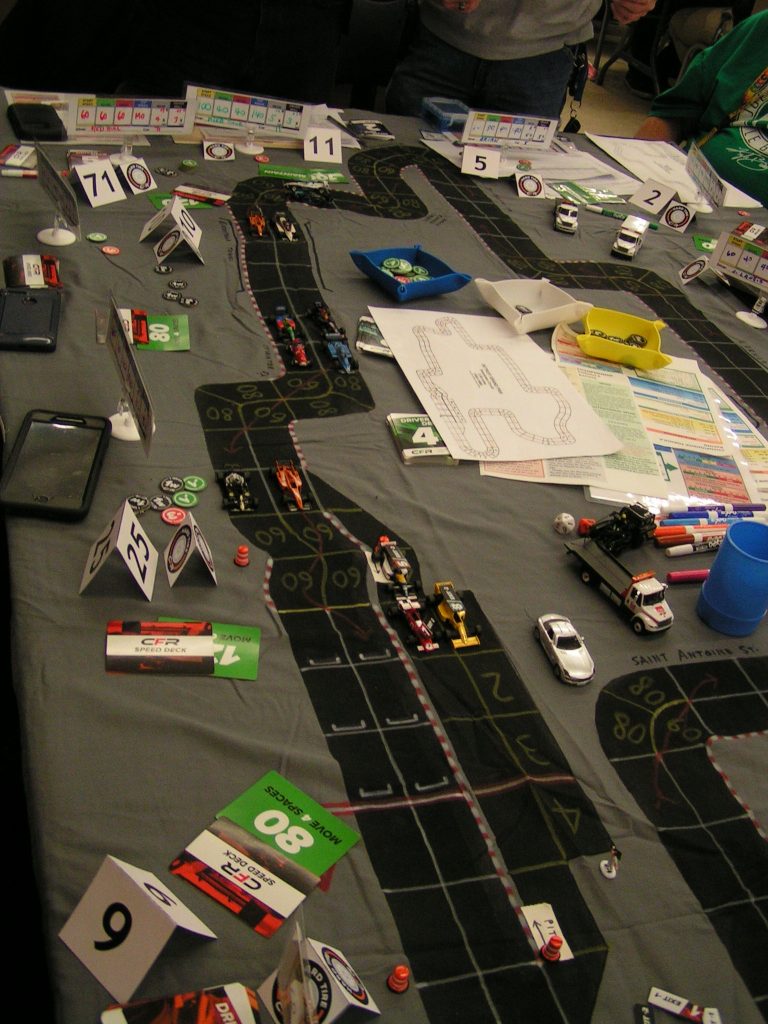
The 2nd round of pit stops begin. Beckman, Cook, and Jim Robinson have pulled off the track and into the pits. Kaluzny’s orange McLaren is two spaces short of being able to pit. The first space where cars can pull into the pits is the 60 mph space just this side of the orange barrel; the final space is at the lower edge of the picture, two spaces past the finish line.
Kaluzny did get some satisfaction after his next move, though, as when he did pull into the pits he was officially the leader of the 2nd lap, although that lead was very short-lived.
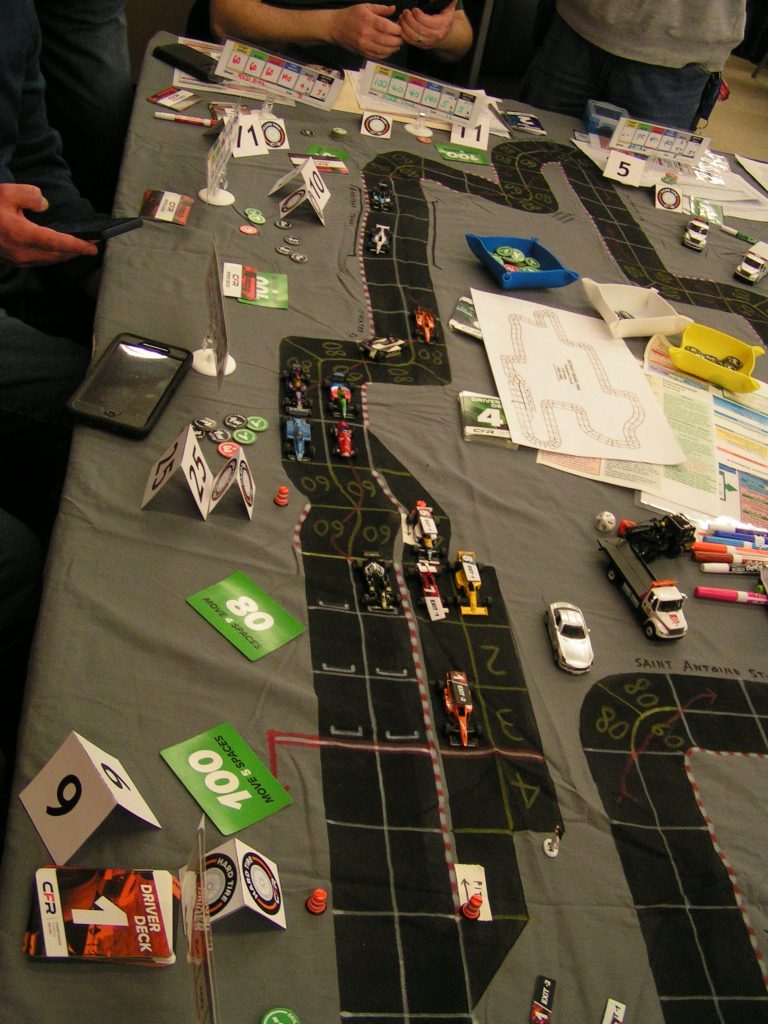
Kaluzny takes the lead after pulling into the pits, as his car has reached the finish line. Too bad for him there is another lap to go!
When the cars in the pits finally got back on the track, Gary Sturgeon had built a 5-space lead over his closest pursuers, Marlett and Kempen.
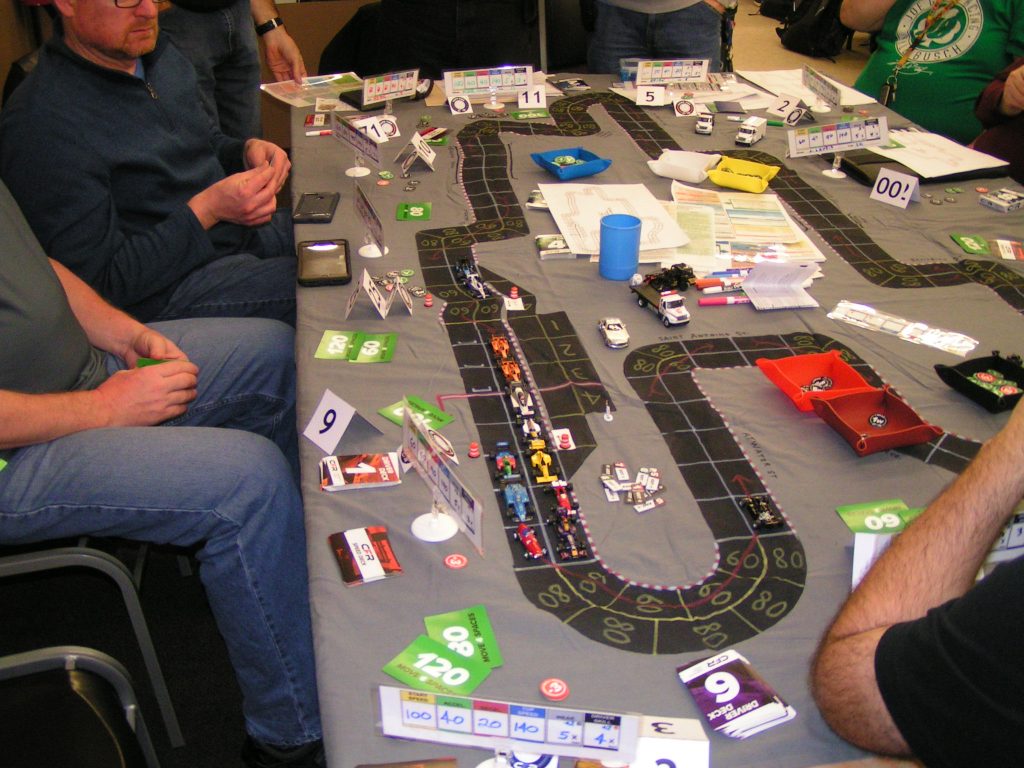
Gary Sturgeon takes the lead at the start of the final lap!
The official order at the end of the 2nd lap was: Kaluzny (+8); Sturgeon (0); Marlett (+4); Kempen (+2); Beckman (-2); Manderachia (+5); Cook (-2); Landis (0); J. Robinson (-8); White (0); Gould (+2); B. Robinson (0); and Lim (-9). However, after the pit stops were well and truly sorted out, the running order on the track was: Sturgeon; Marlett; Kempen; Beckman; Manderachia; Cook; Landis; J. Robinson; White; Kaluzny; Gould; B. Robinson; and Lim.
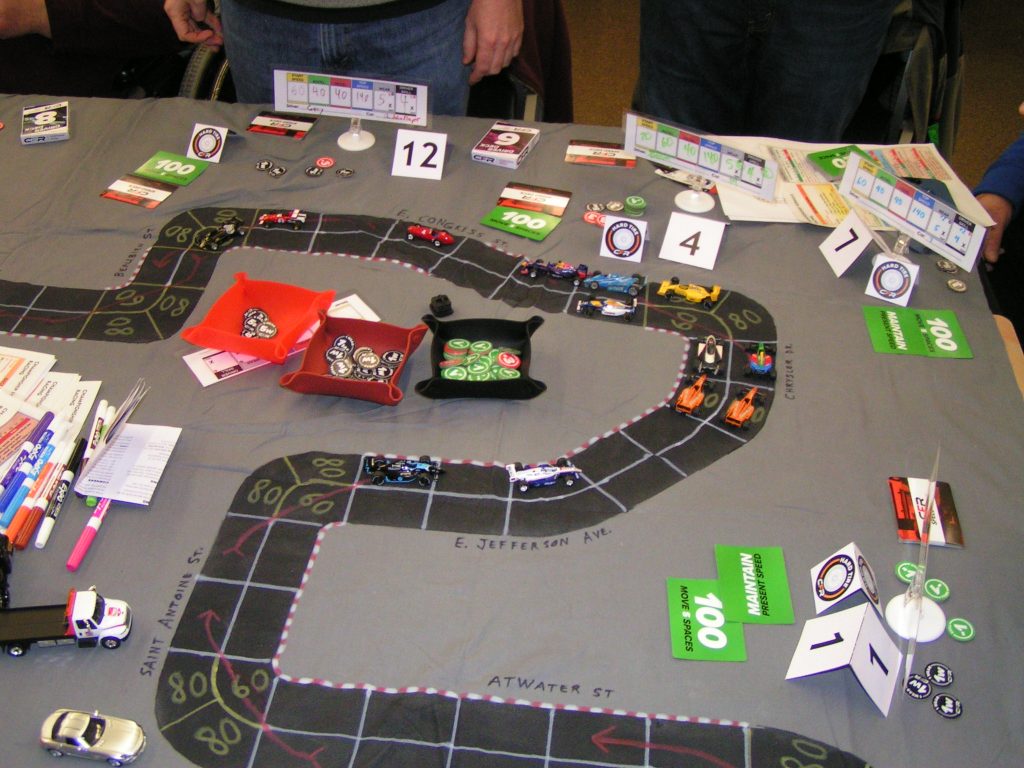
Sturgeon’s lead has shrunk to one space over Beckman at the end of Congress St.
Beckman then made a supreme effort to pass Sturgeon, and succeeded by out-braking Sturgeon at the end of Larned Street. Beckman then did everything he could to hold his lead, while points leader Cook leap-frogged a couple of competitors and got into 5th place.
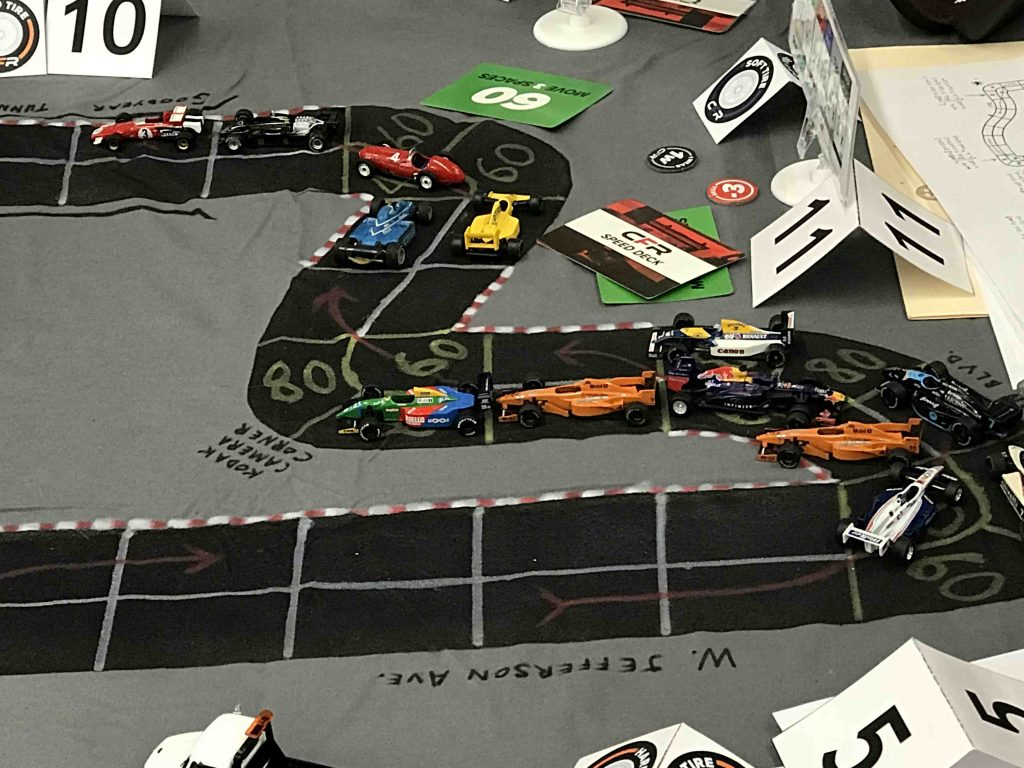
Beckman holds his lead over Sturgeon heading into the Goodyear Tunnel for the last time. Note that Marlett’s Red Bull has spun between the two orange McLarens of Kaluzny and Gould. (Greg Lim photo)
Kaluzny successfully made a forced pass of Marlett on the ramp leading down to the Kodak Camera Corner from Washington Blvd. Marlett attempted to block, but Kaluzny rolled low enough on the Forced Pass table to not only get by Marlett but Kaluzny also passed Jim Robinson with that same move. However, one of the dice showed a “3” which meant that the defending car (Marlett) had to lose a wear. But Marlett’s car was out of wear, and that meant his car spun out. (See the above picture to see Marlett’s Red Bull car facing the wrong way on the track.) Marlett had also spun on the previous corner, and the two spins dropped him from 5th to 8th, and then he fell further to 9th place by the time he got back up to speed.
The drama continued of what would be a nail-biting finish to the race! Through the Goodyear Tunnel, the 2nd Ferrari of Gary Kempen got by Gary Sturgeon’s Lotus, taking over 2nd place from Sturgeon. The two Ferraris held their side-by-side lead over the Lotus through the Ford Corner.
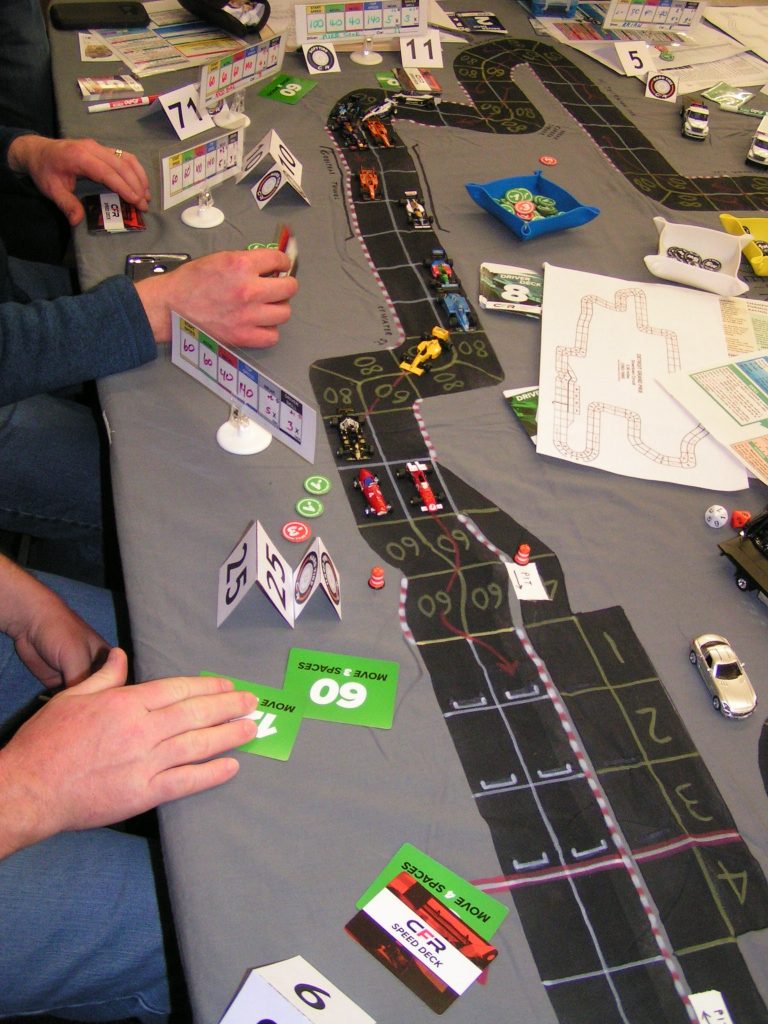
The Ferraris lead over Sturgeon’s Lotus with only one more chicane between them and the end of the race.
But the Ferraris were wear-deprived, and they both only went 80 mph through the chicane, leaving them both one space short of the finish line. Sturgeon pushed his car to its limit, going 120 mph through the chicane, and then he pulled off a successful forced pass of the Ferraris to win the race! It was Sturgeon’s first victory of his racing career, and it was a memorable one after starting 2nd on the grid. Beckman (+1) came home in 2nd, and Kempen (+3) was 3rd.
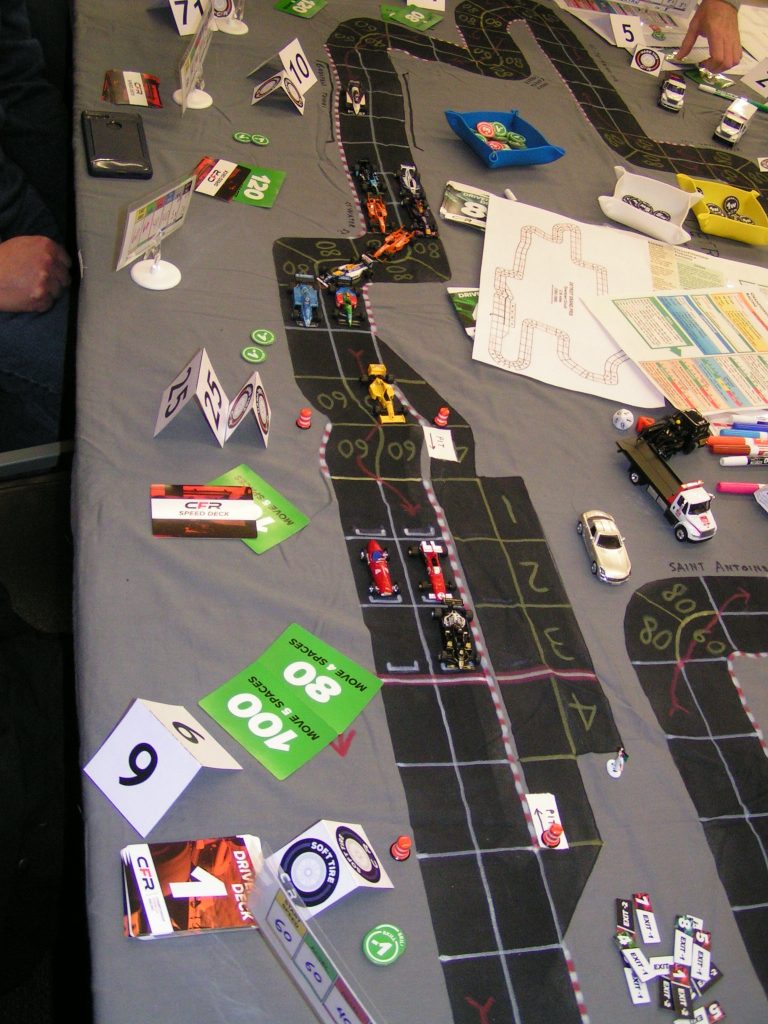
Sturgeon wins in the black Lotus after forced passing the Ferraris.
The rest of the pack finished in a rather less dramatic fashion. Cook (+1) took 4th, then came Manderachia (+6) in 5th, and Jim Landis (+2) was 6th, the last car to finish in the points. Finishing out of the points were: Jim Robinson (-6) 7th; Garry Kaluzny (+1) 8th; Tim Gould (+4) 9th; Brian Robinson (+2) 10th; Chad Marlett (-4) 11th; and Richard White (-2) 12th. After Richard White spun in the final chicane, it caused Greg Lim (-9) to crash. Lim was thusly classified 13th, although he was officially a DNF.
The points awarded at the Detroit Grand Prix: Sturgeon 10; Beckman 6; Kempen 4; Cook 3; Manderachia 2; and Landis 1.
The updated points standings after five (of eight) races:
Place Driver (Car) Points
1 Mike Cook (Camel Lotus) 29
2 Gary Sturgeon (John Player Lotus) 25
3 Garry Kaluzny (McLaren) 21
4 Jack Beckman (Ferrari) 18
5 Richard White (Brabham) 14
6 Jim Landis (Benetton) 6
7T Brian Robinson (Walker Racing) 4
7T Greg Lim (Motorola) 4
7T Gary Kempen (Ferrari) 4
10 Jim Robinson (Williams) 3
11 Mike Manderachia (Ligier) 2
12T Russ Herschler (Minardi) 0
12T Chad Marlett (Red Bull) 0
12T Tim Gould (McLaren) 0
The 6th race of the CFR-Detroit racing season will take place on Friday, February 9, 2018, at Guild of Blades at 774 E. 14 Mile Rd., Clawson, Michigan. The race will start at 7:00 pm sharp! So drivers should be there by 6:30 pm to settle in and to set up their car’s specifications for the race. We didn’t start the Detroit G.P. until 7:42 pm, and we had a difficult time getting the race’s three laps completed before the 11:00 pm closing time of RIW Hobbies & Games. It should be noted that Guild of Blades also has an 11:00 pm closing time, which is why we must start exactly on time, especially since we had 13 drivers at the race.
